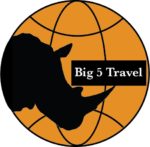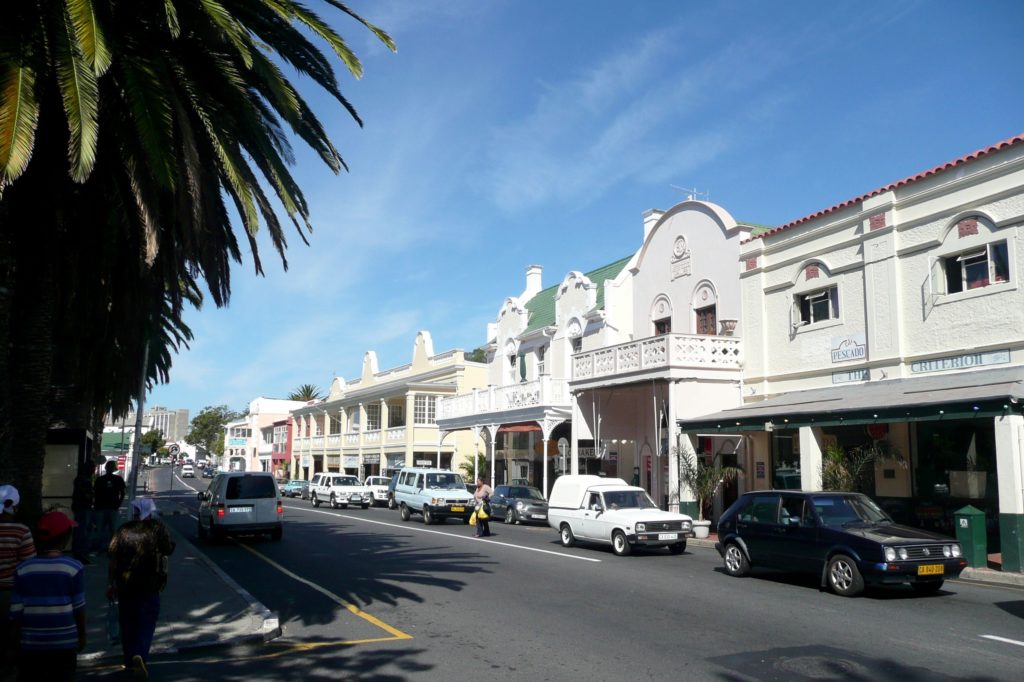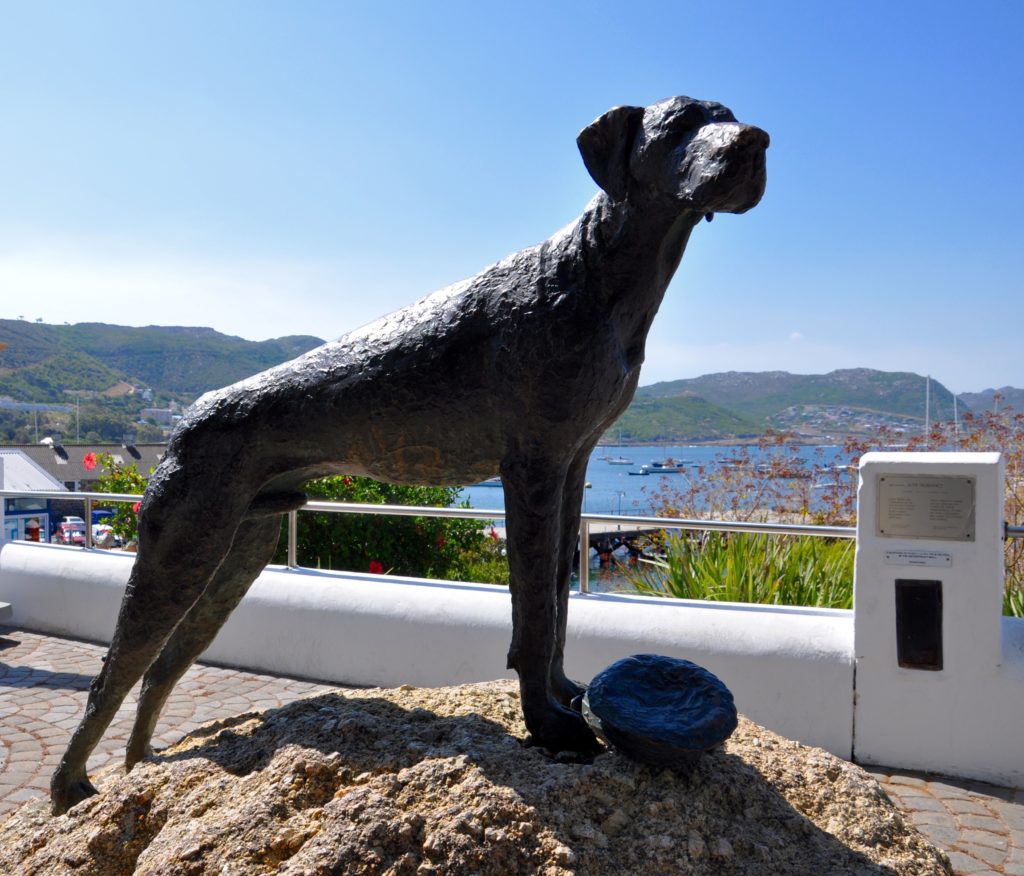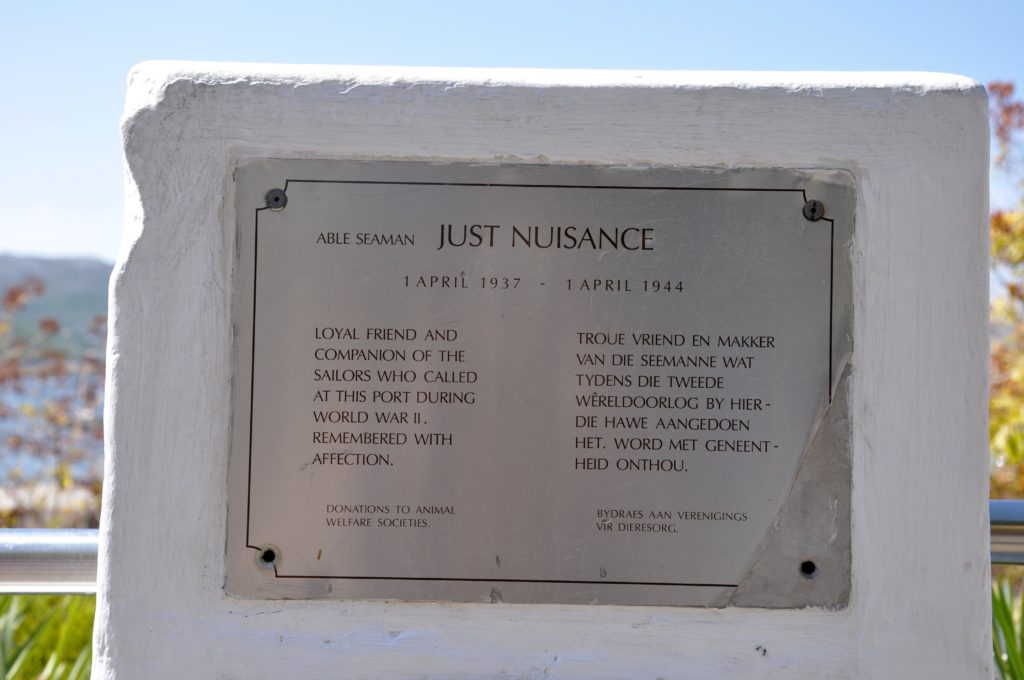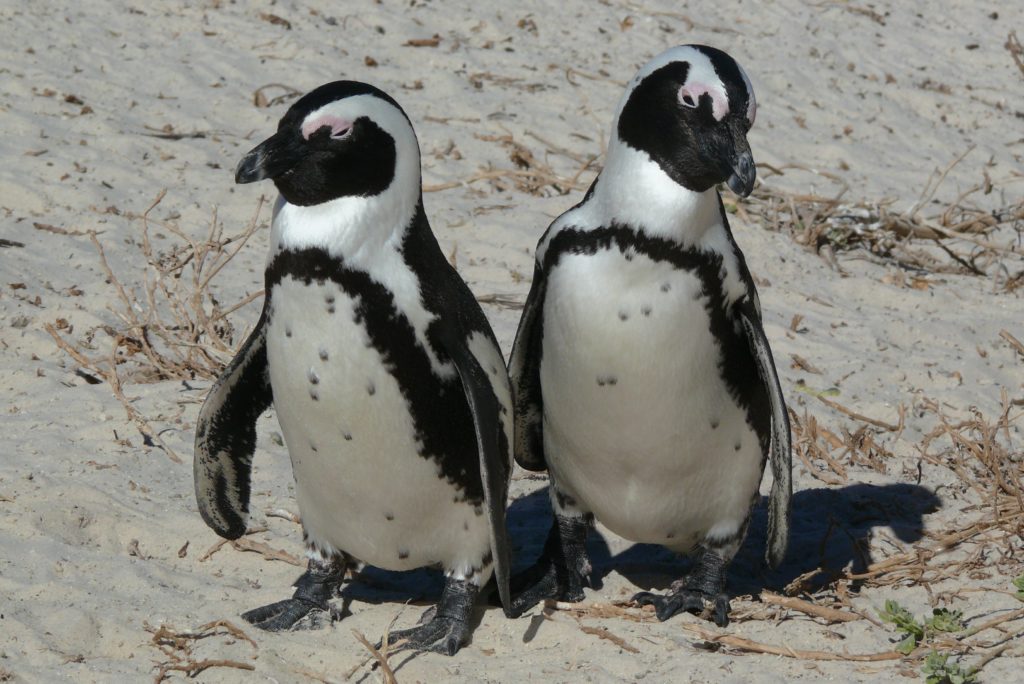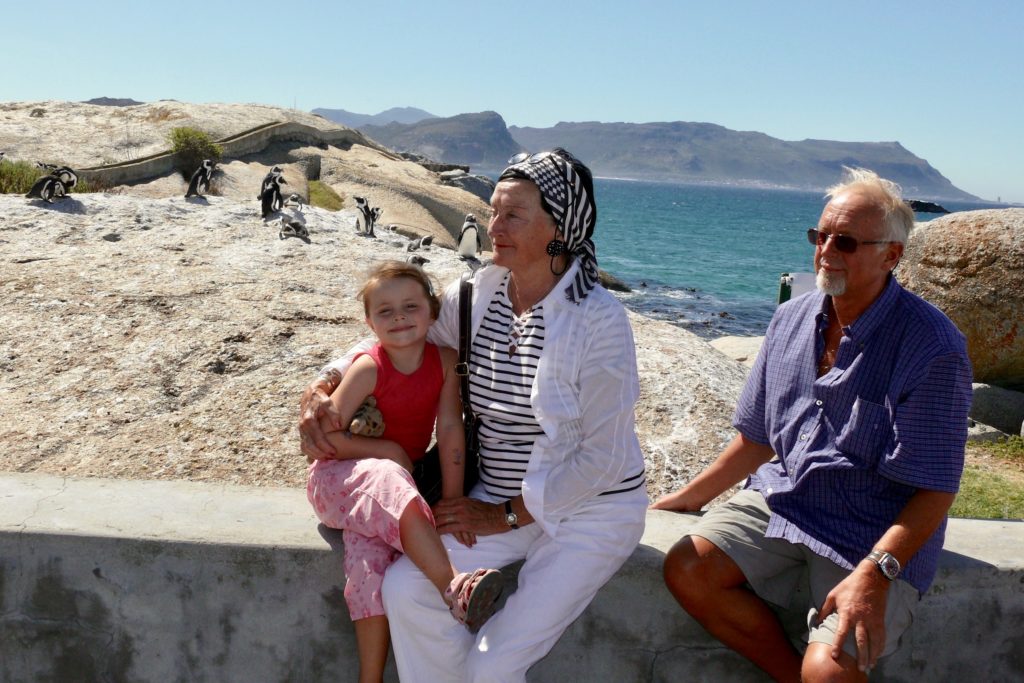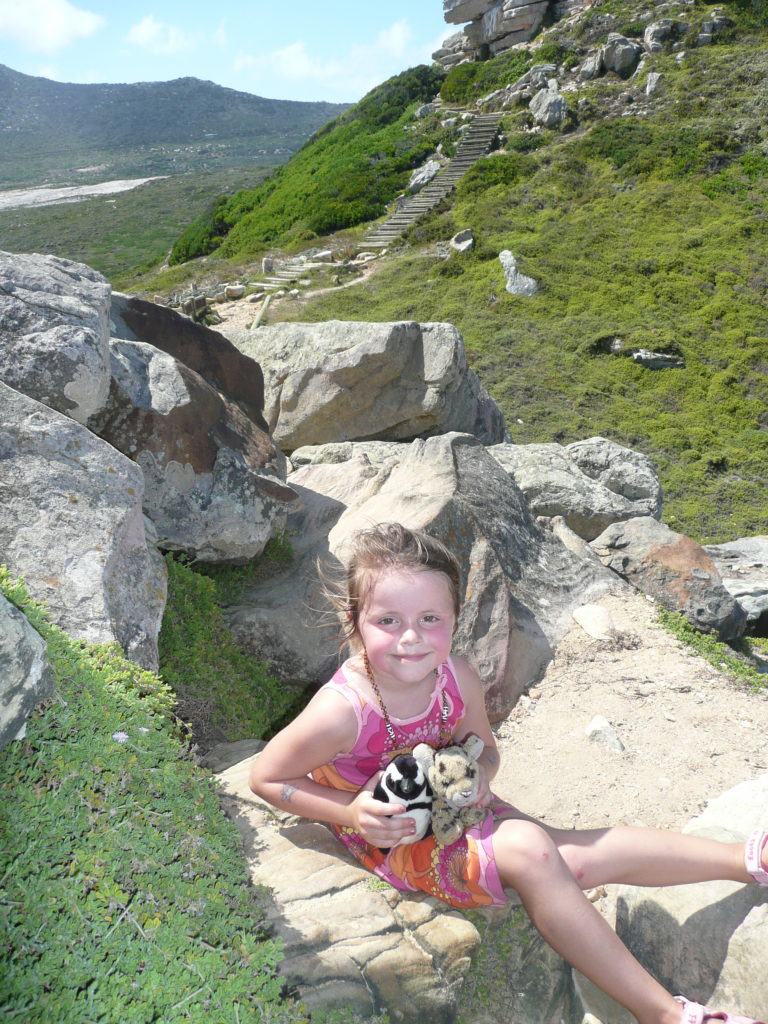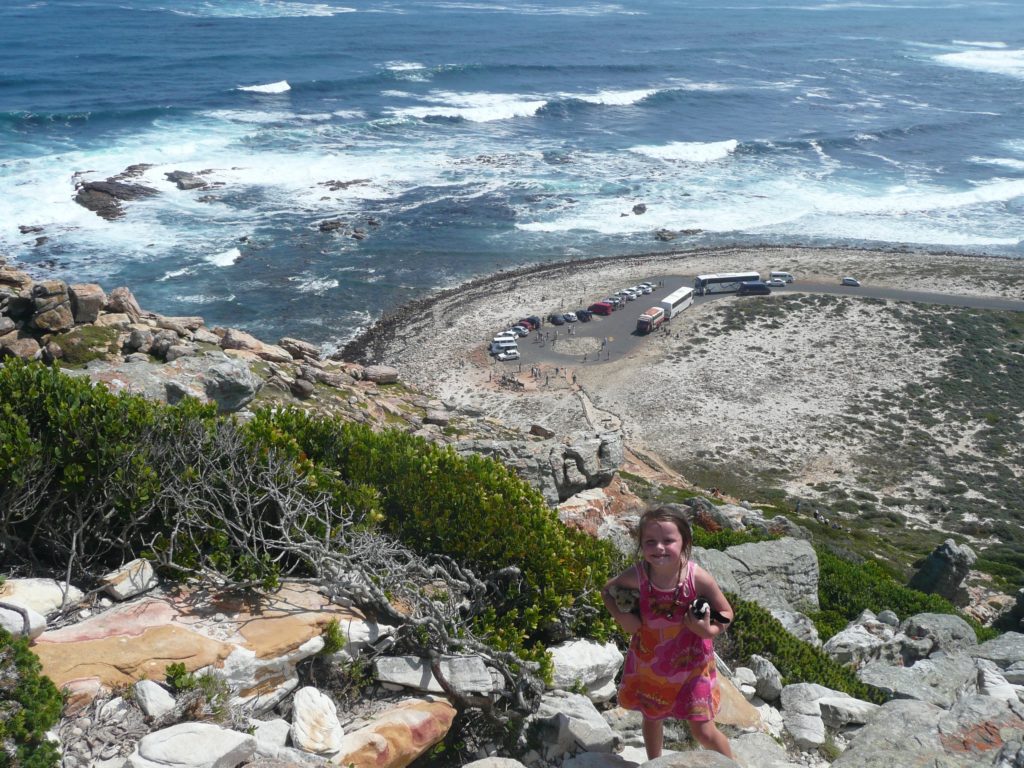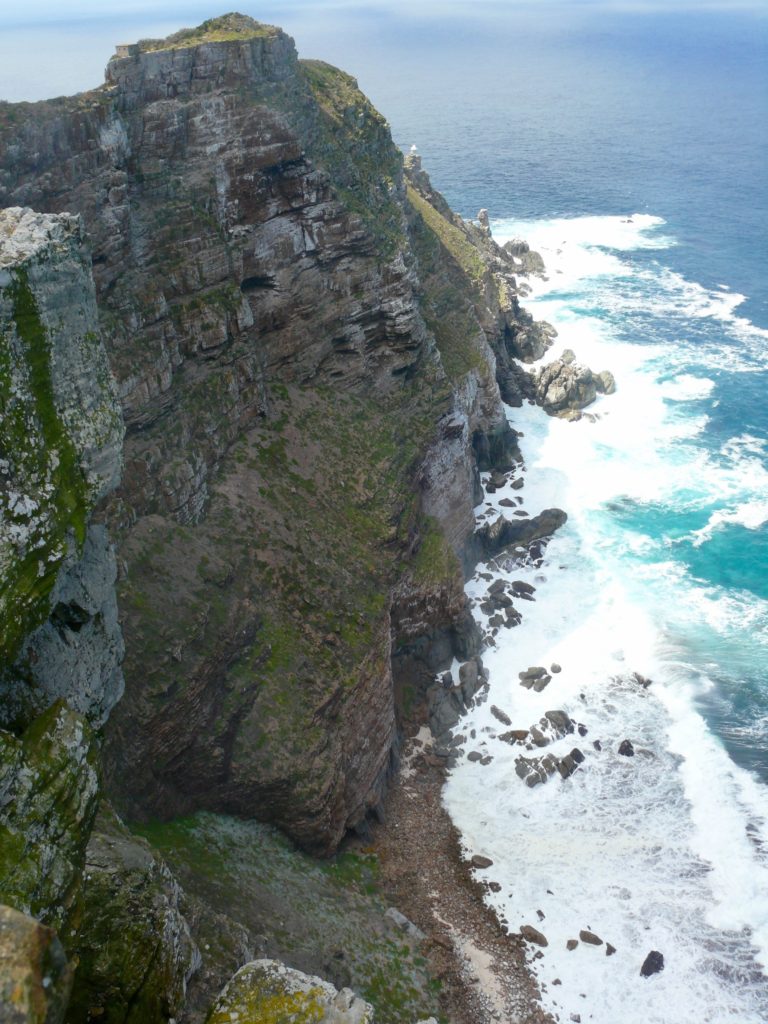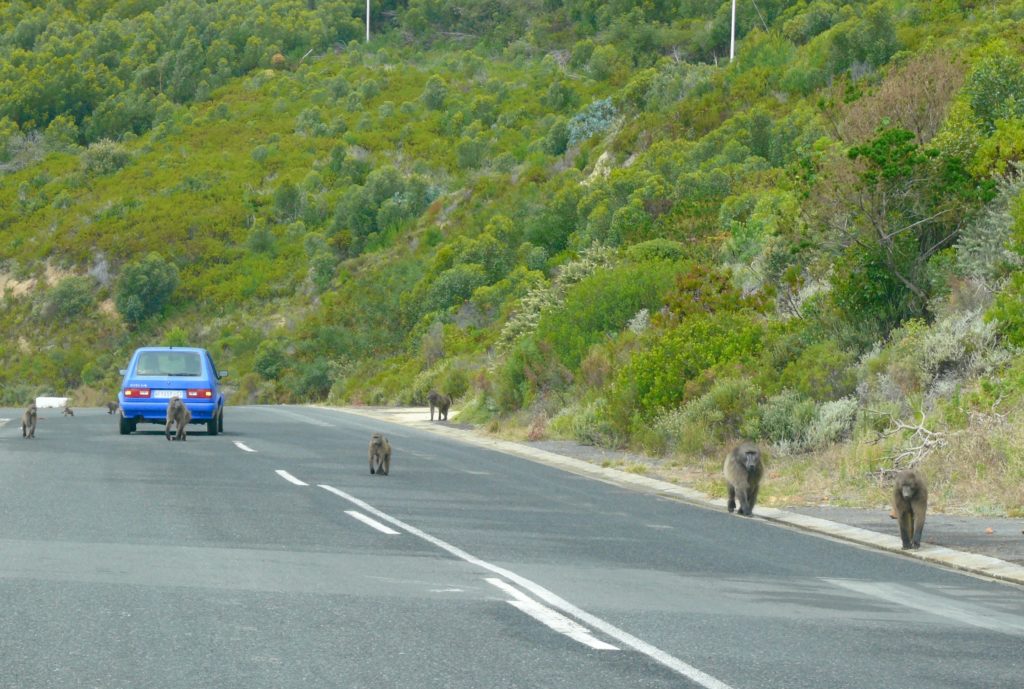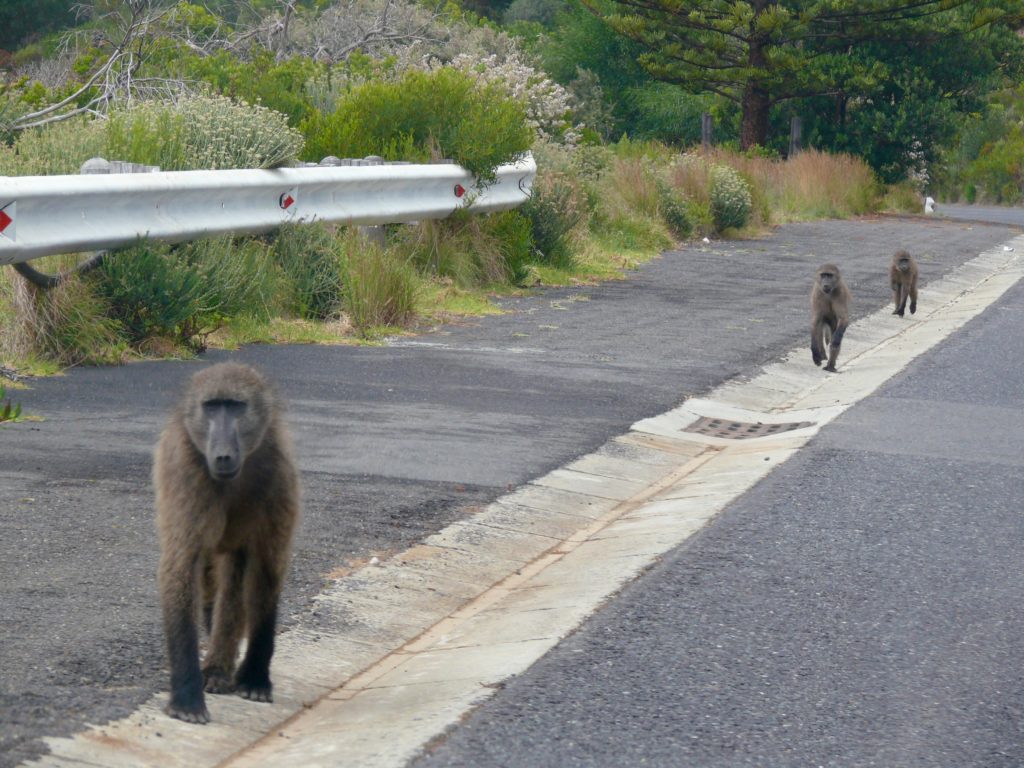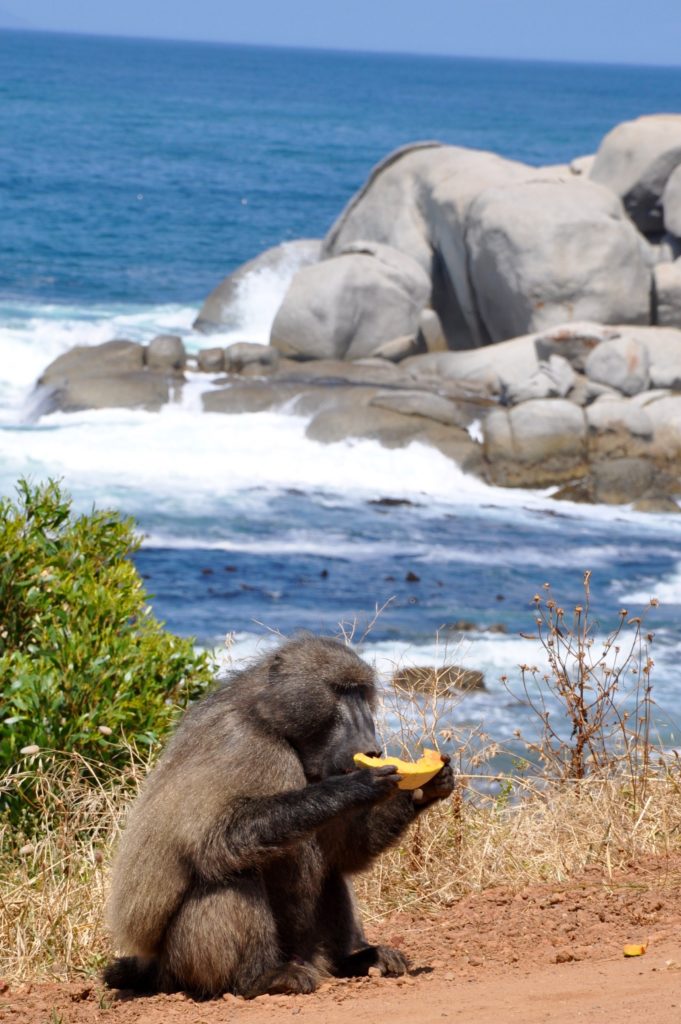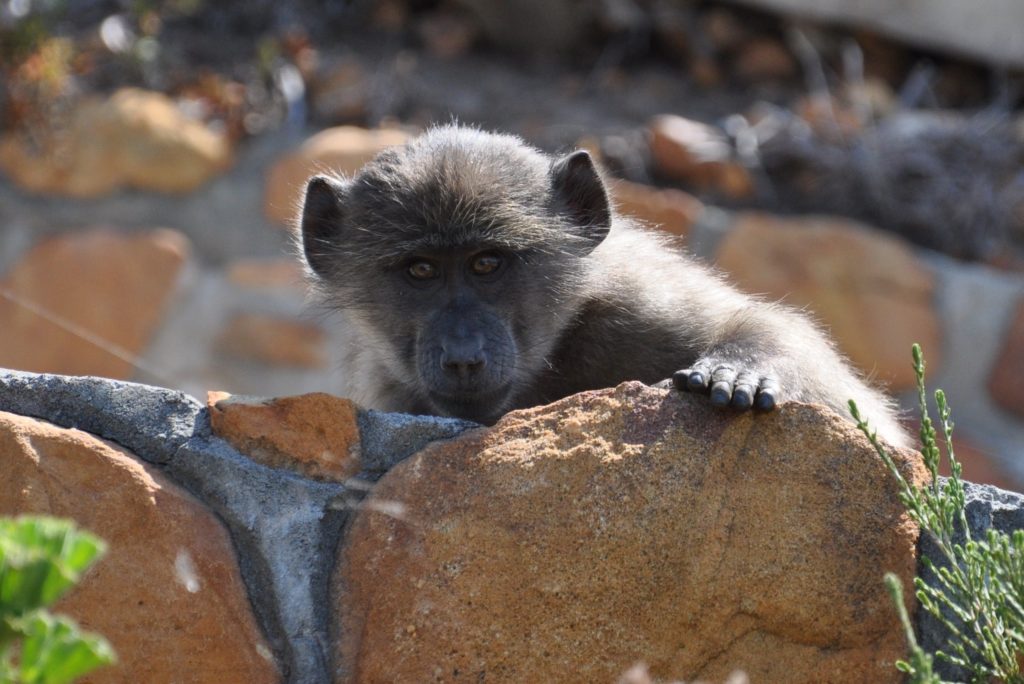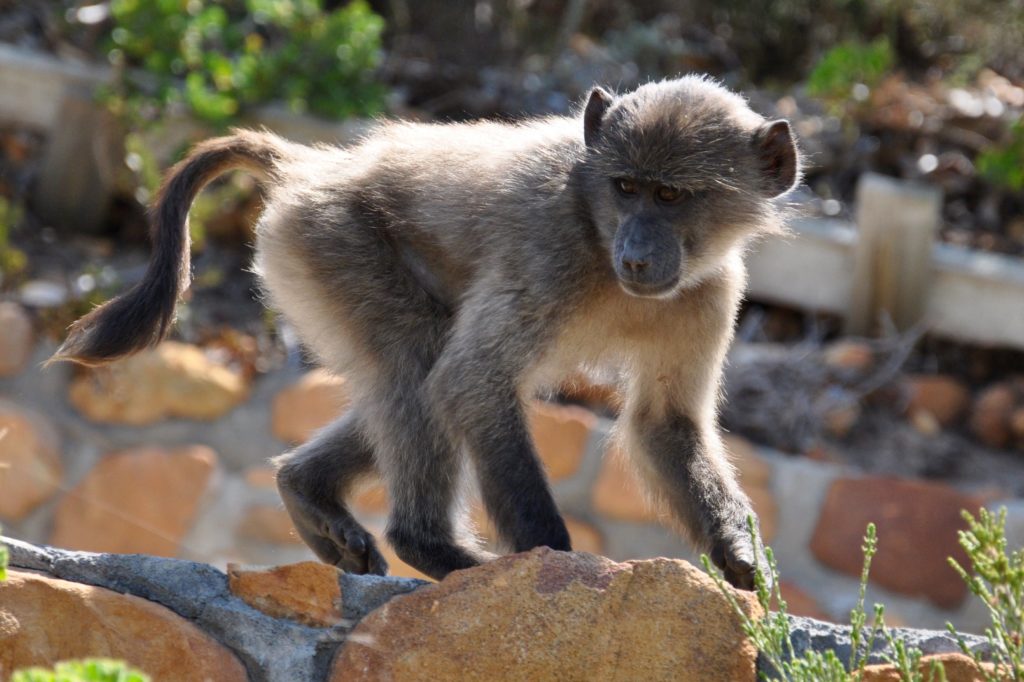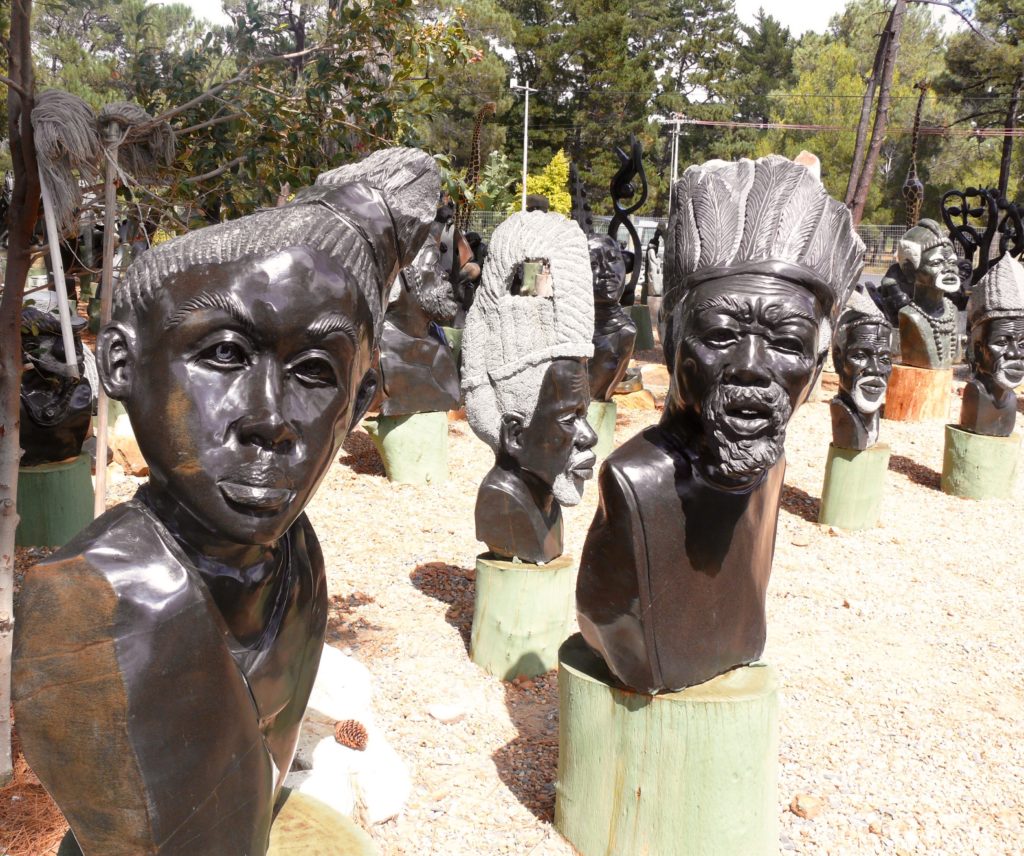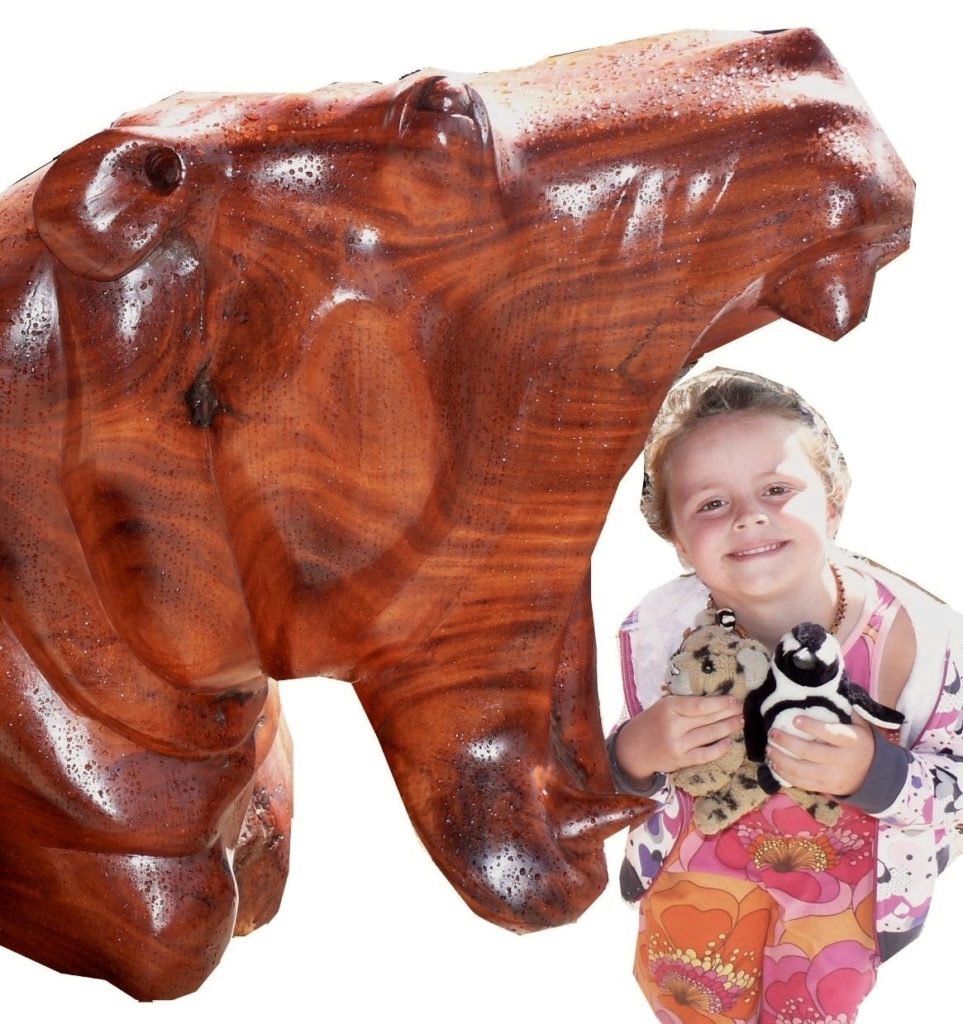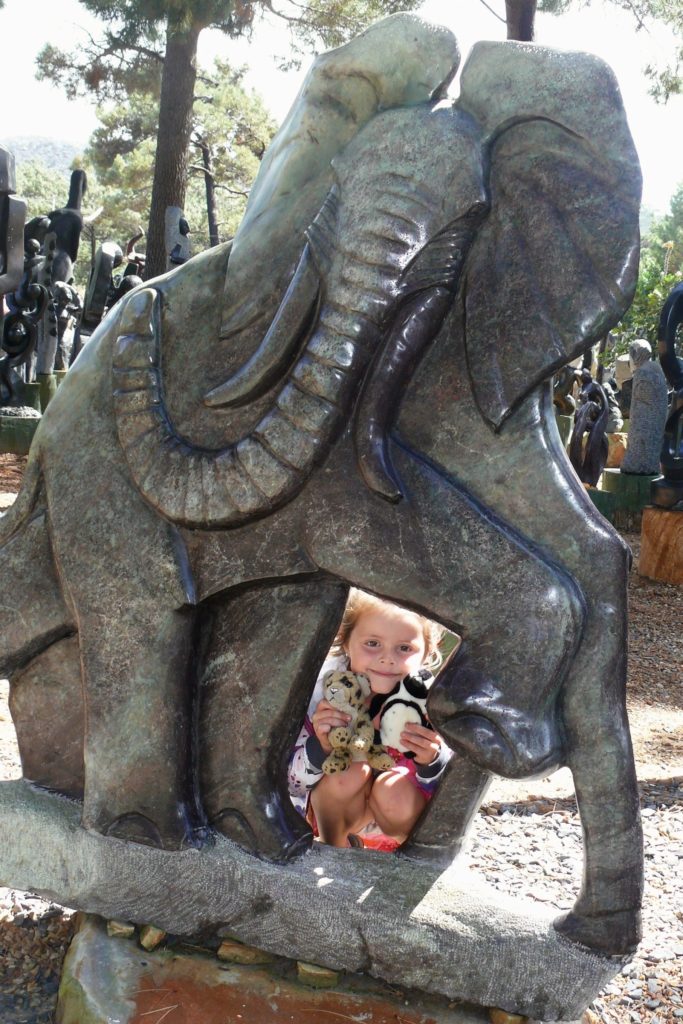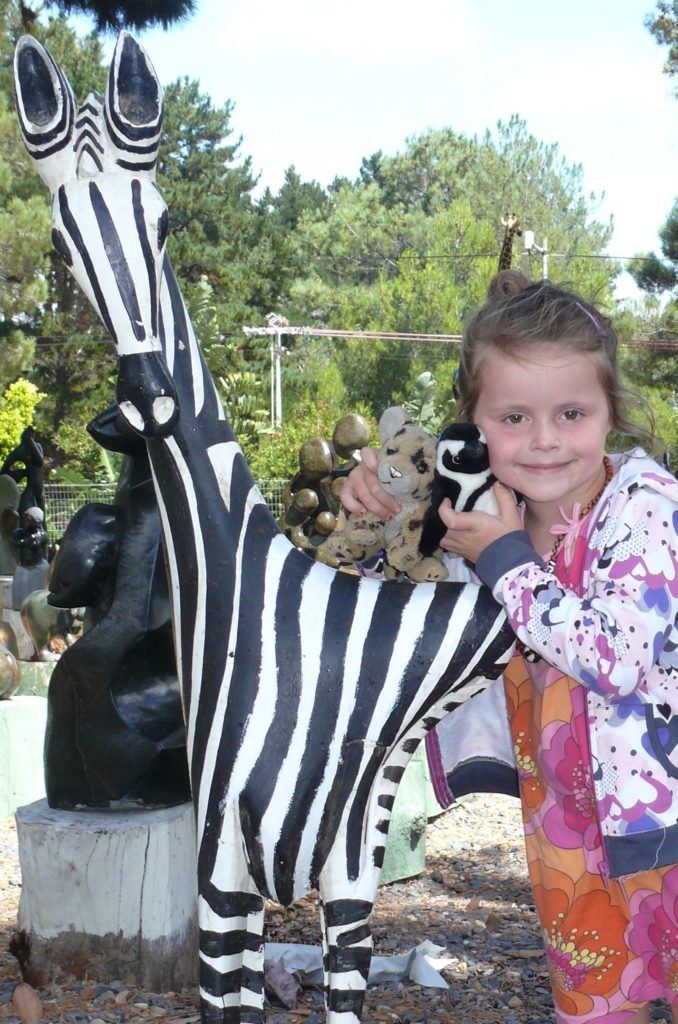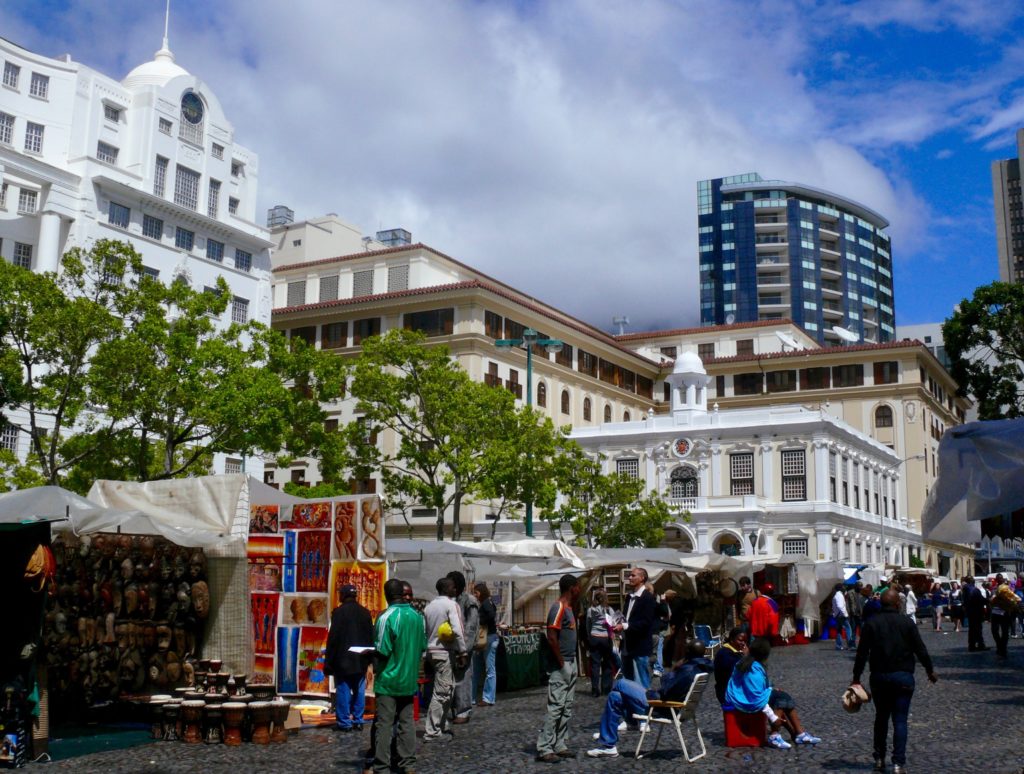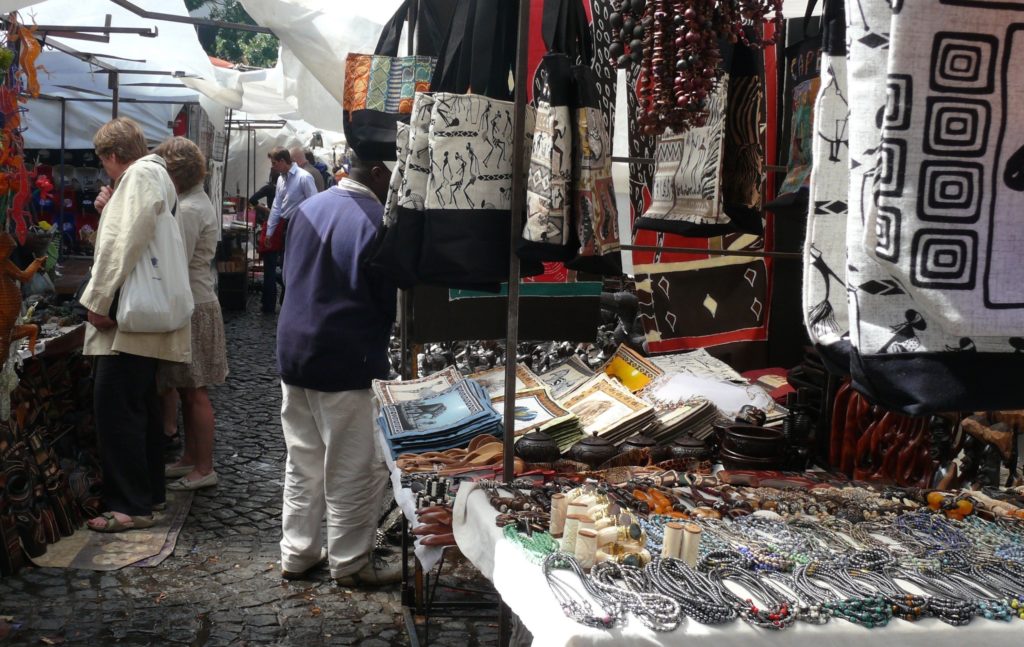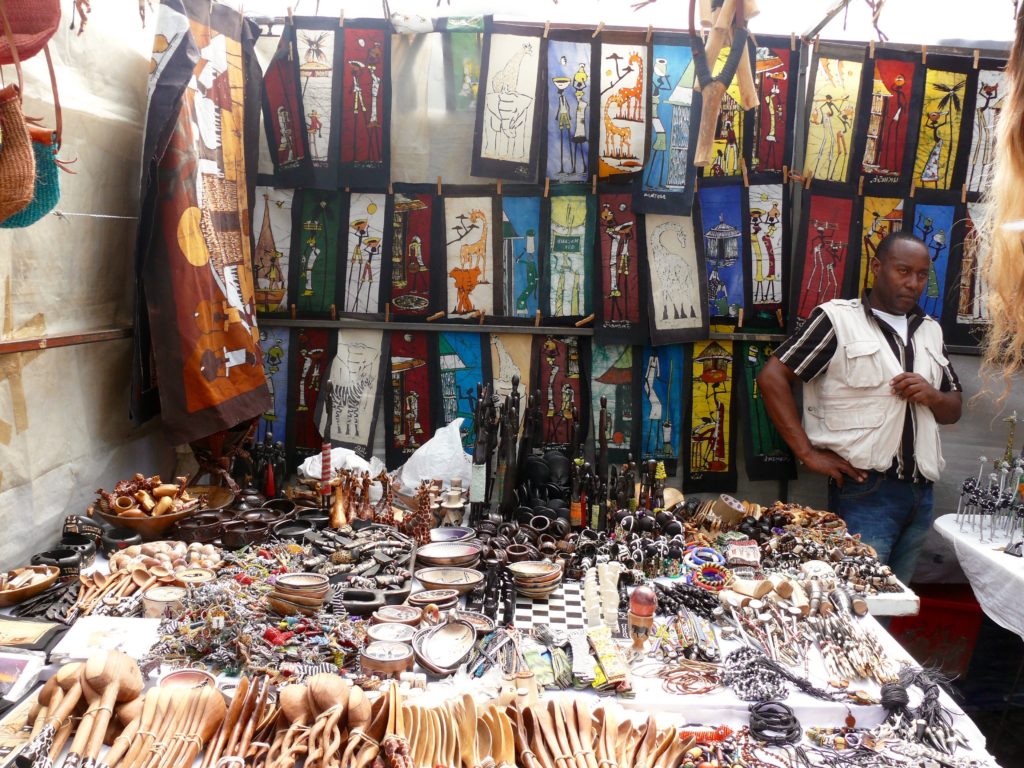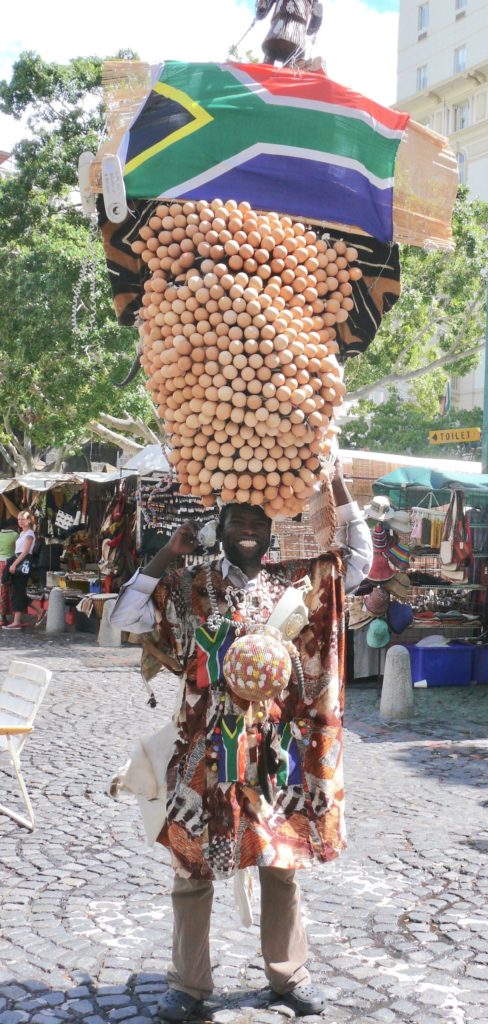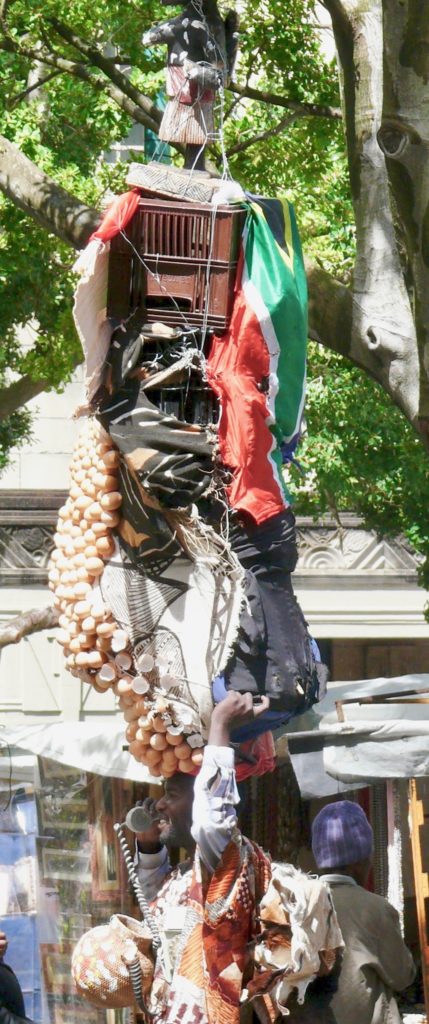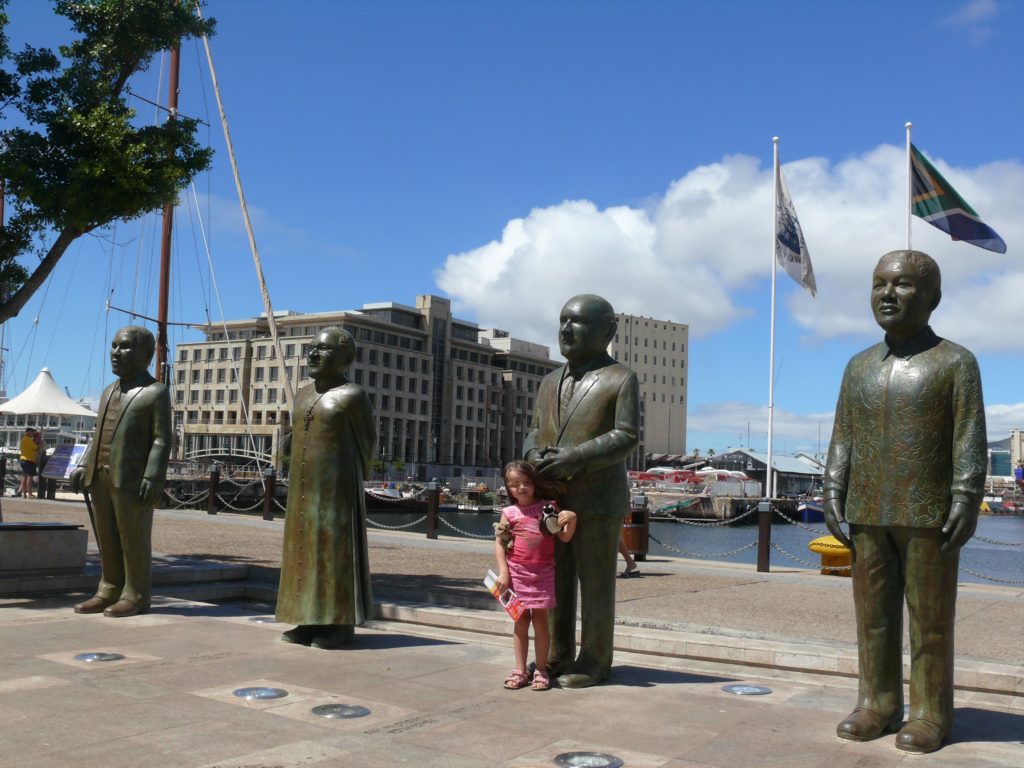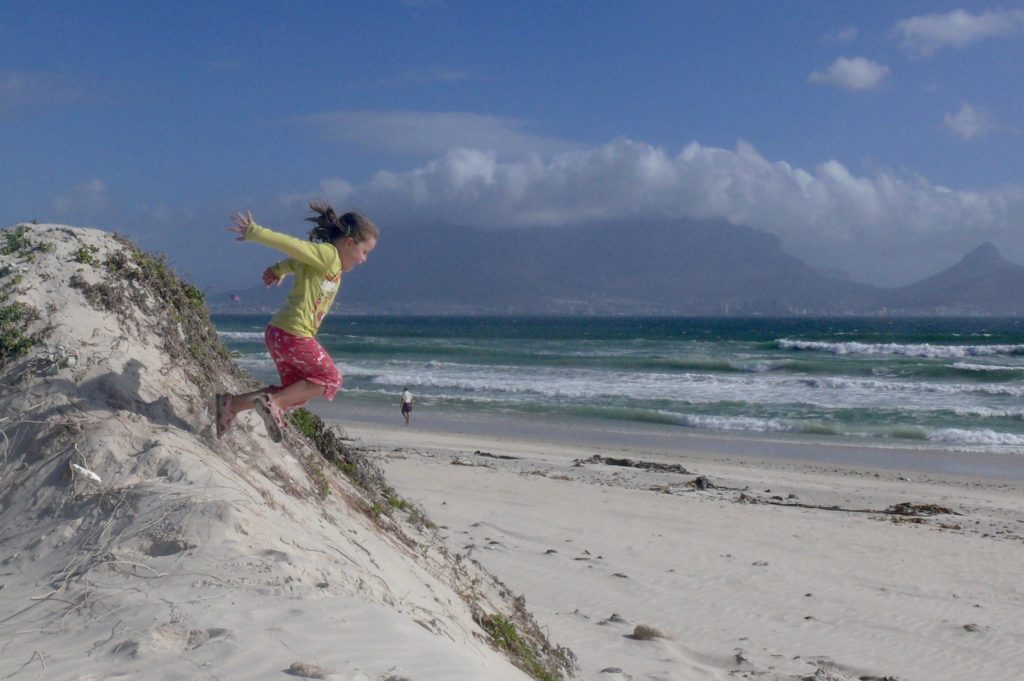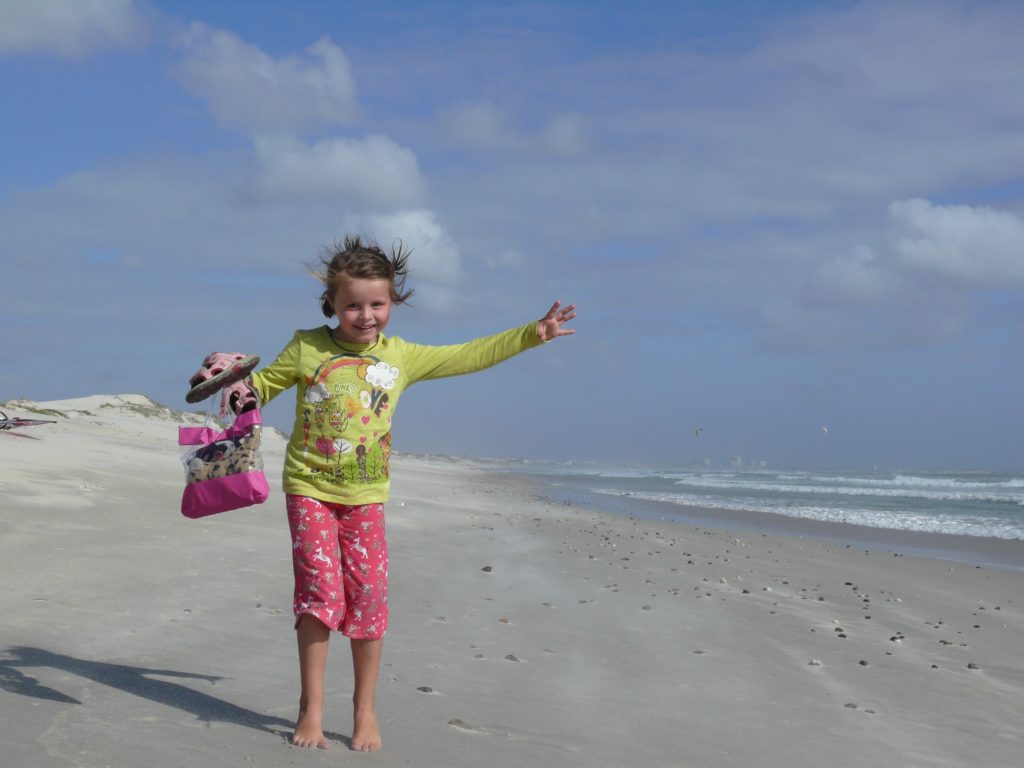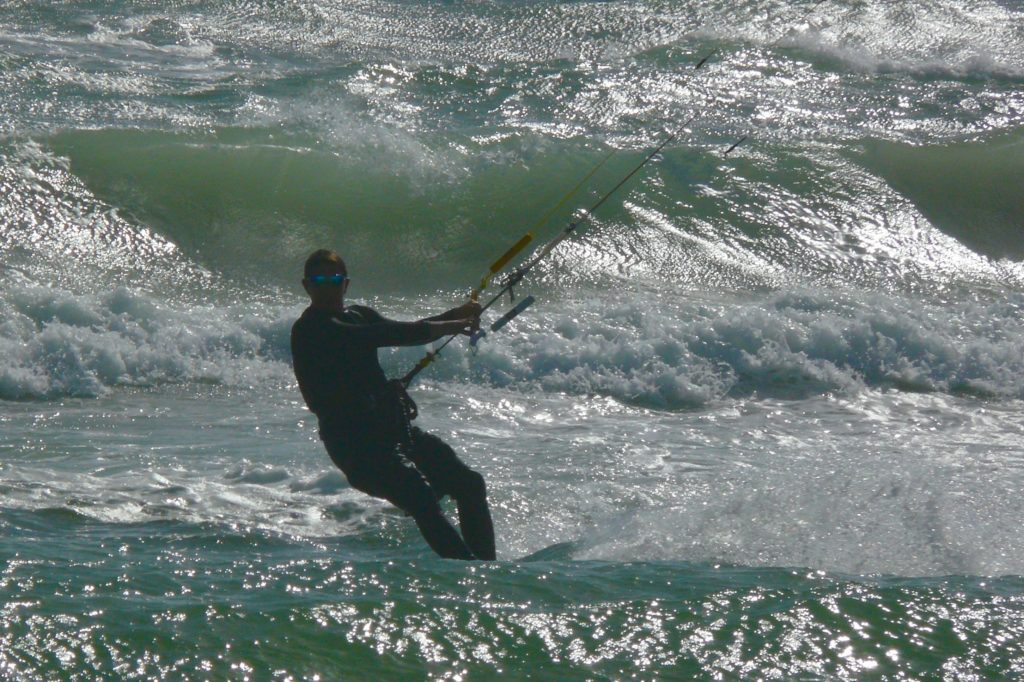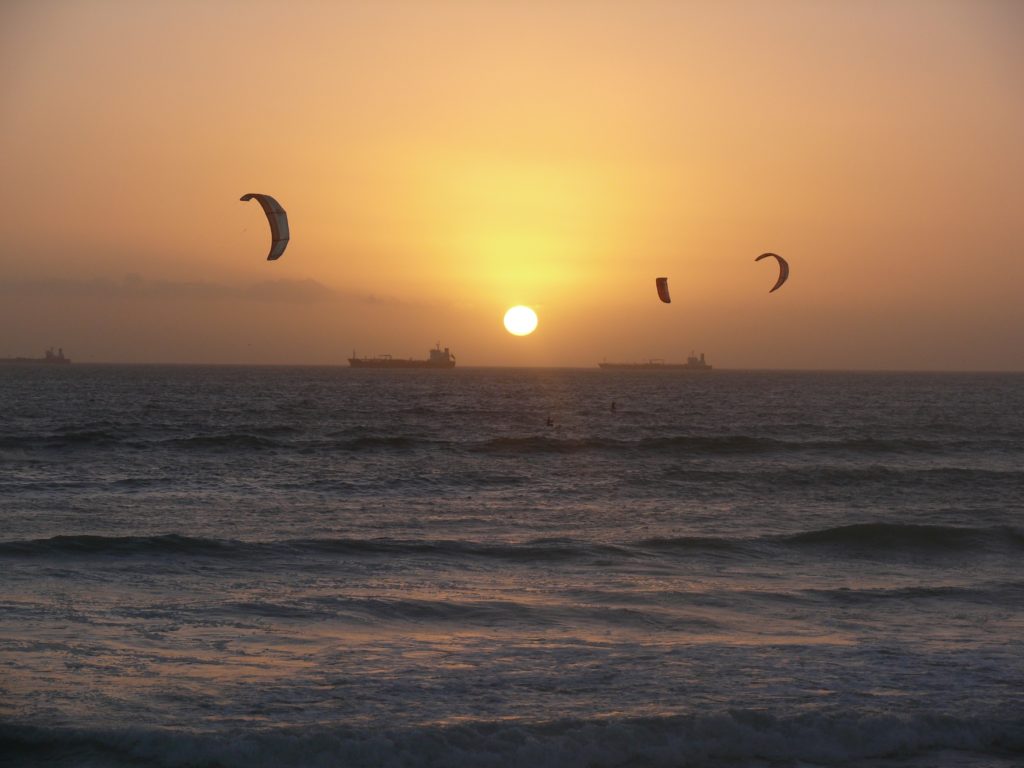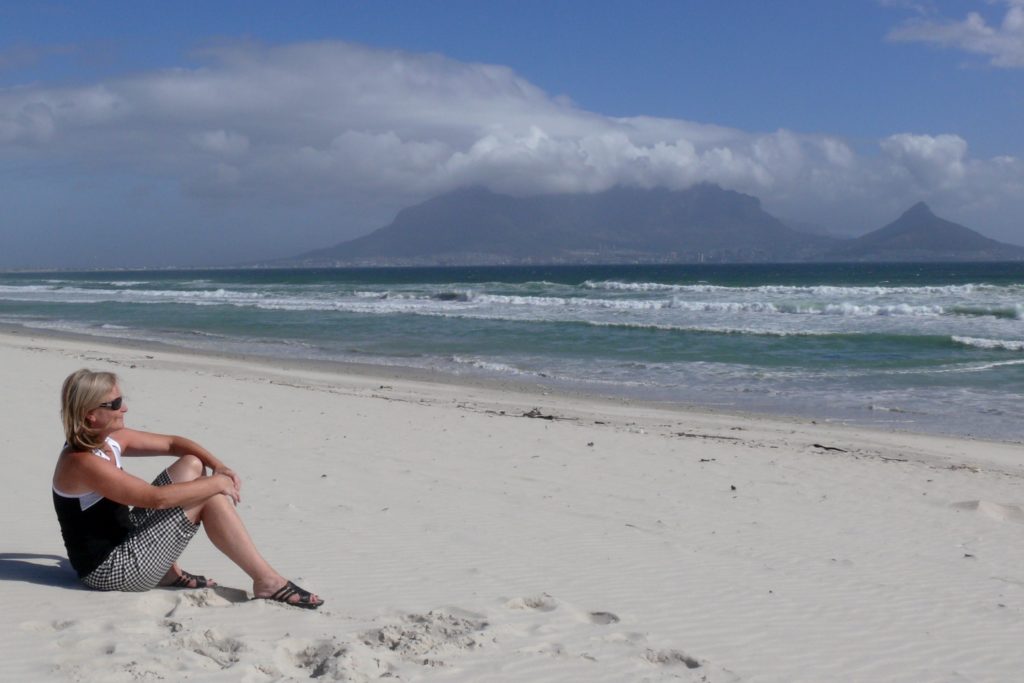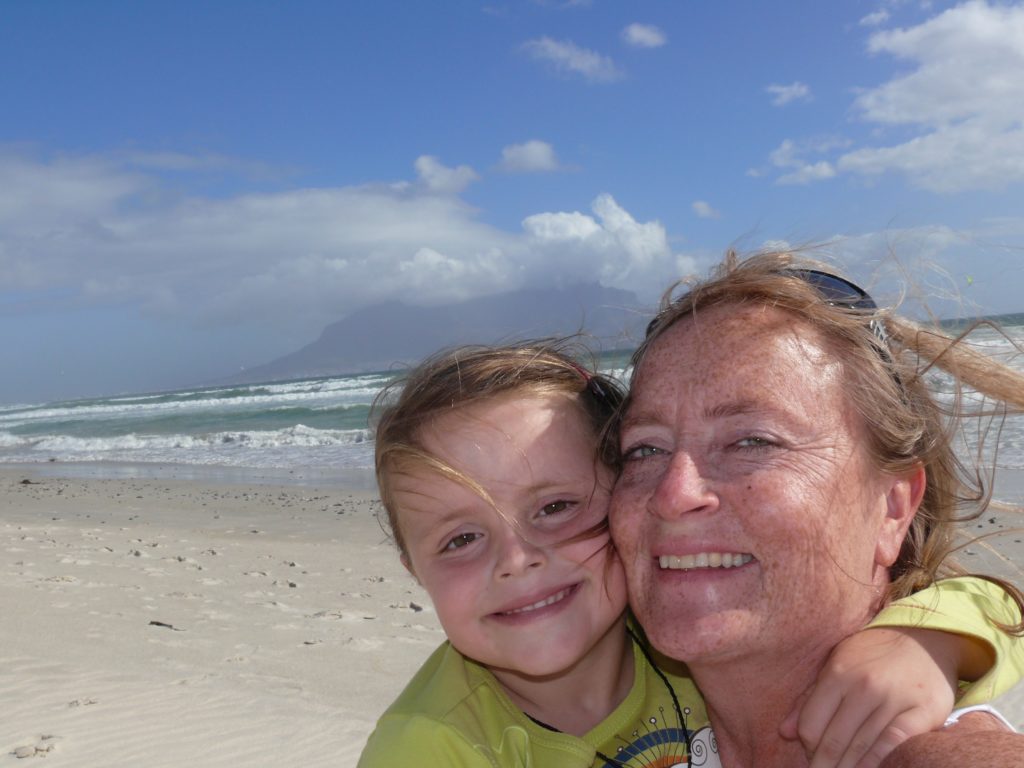SIMON´S TOWN
After visiting Stellenbosch and the Winelands – it was time to explore Cape Peninsula and Cape Town. First we stayed some days in Simon´s Town – situated 40 km south of Cape Town – on False Bay, at the Cape Peninsula.
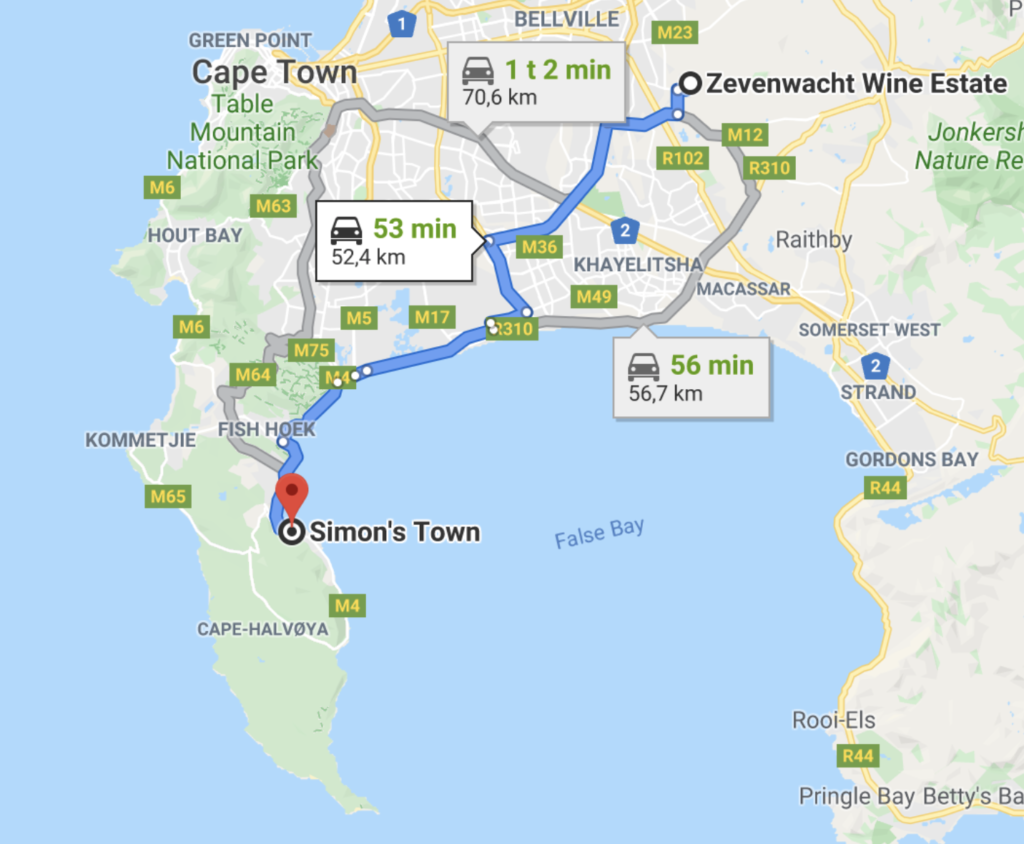
We use this place as a base to visit these attractions at the Cape Peninsula:
– the penguin colony at Boulders Beach
– Cape Point
– Cape of Good Hope
Simon´s Town is also (as Stellenbosch) – named after the first Cape Colony governor Simon van Der Stel – who selected its harbour as a safe winter alternative to Table Bay. It is a charming village with numerous Victorian buildings in the Main Street – and famous for the African Penguin colony at Boulders Beach near by.
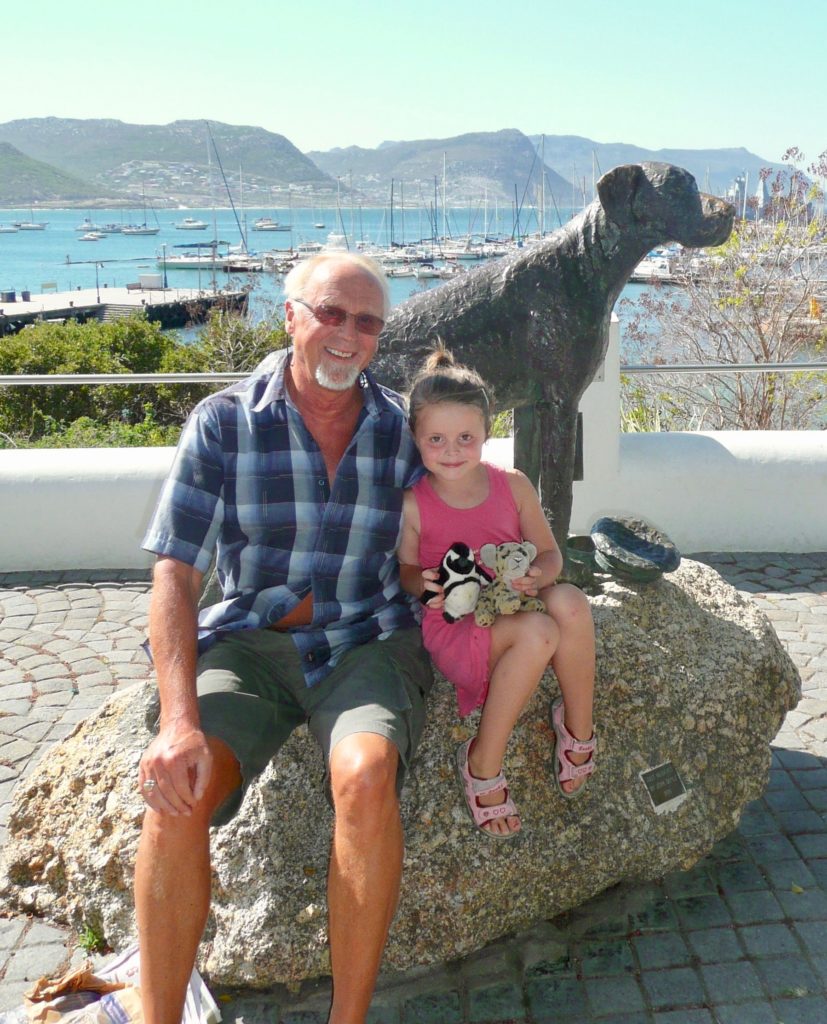
By the statue of Simon’s Town very own famous great dane – Just Nuisance. This dog is believed to have been born in 1937 and lived in Simon’s Town with his owner Benjamin Chaney. It became an integral part of the naval community and the only dog to ever be enlisted in the Royal Navy.
His favourite spot on the ships was to lie on the deck on the brow at the top of the gangplank. No-one could easily get past him and he was loathe to move. The sailors would say – ‘You’re just a nuisance, why do you have to lie here of all places?!’ – and that’s how he got his name.
Every April 1 (both the anniversary of Just Nuisance’s birth and death) is marked by a street parade in Simon’s Town to commemorate this extraordinary animal.
ACCOMMODATION
We stayed four nights at “A Boat House B&B” – situated a couple of roads above the town centre – with superb views of the Naval Harbour and Yacht Club. The hosts have brought their years of boating and charter experience in the Caribbean to a more intimate and private setting here. Unfortunately the hosts were out sailing, but mother of one of them gave us a warm welcome.

A Boat House 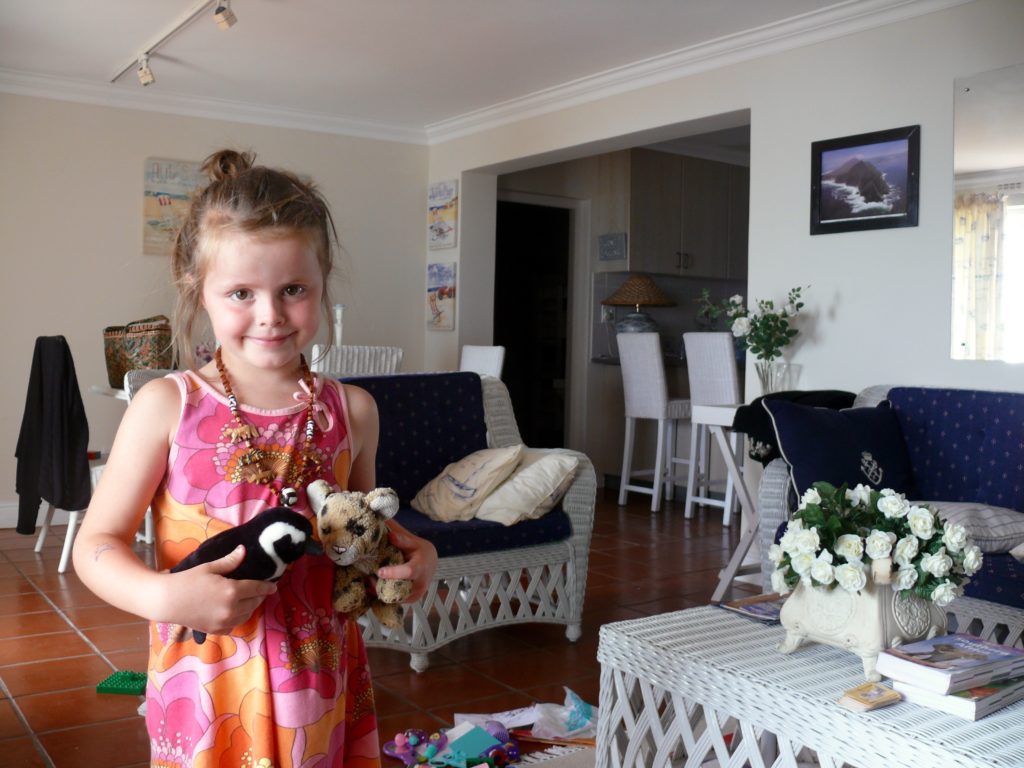
Nice flat 
A great view from the terrace 
Indoor swimming pool
TABLE MOUNTAIN NATIONAL PARK
Boulders Beach and the penguin colony
About 2 km south of Simon´s Town lies a lovely series of little sandy coves surrounded by huge boulders. And between the boulders – live and nest the colony of African penguins. This is one of the two colonies on mainland Africa, the other being in Betty’s Bay (near Hermanus). The colony started from just two breeding pairs in 1982 – and now numbers over 3000 penguins.
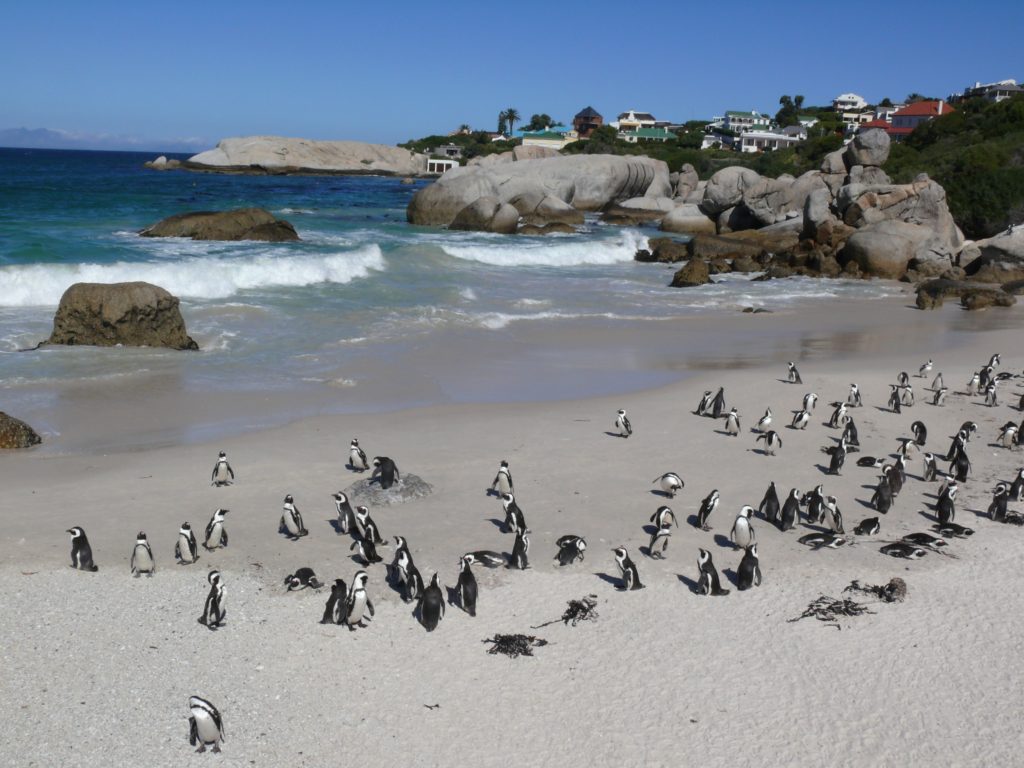
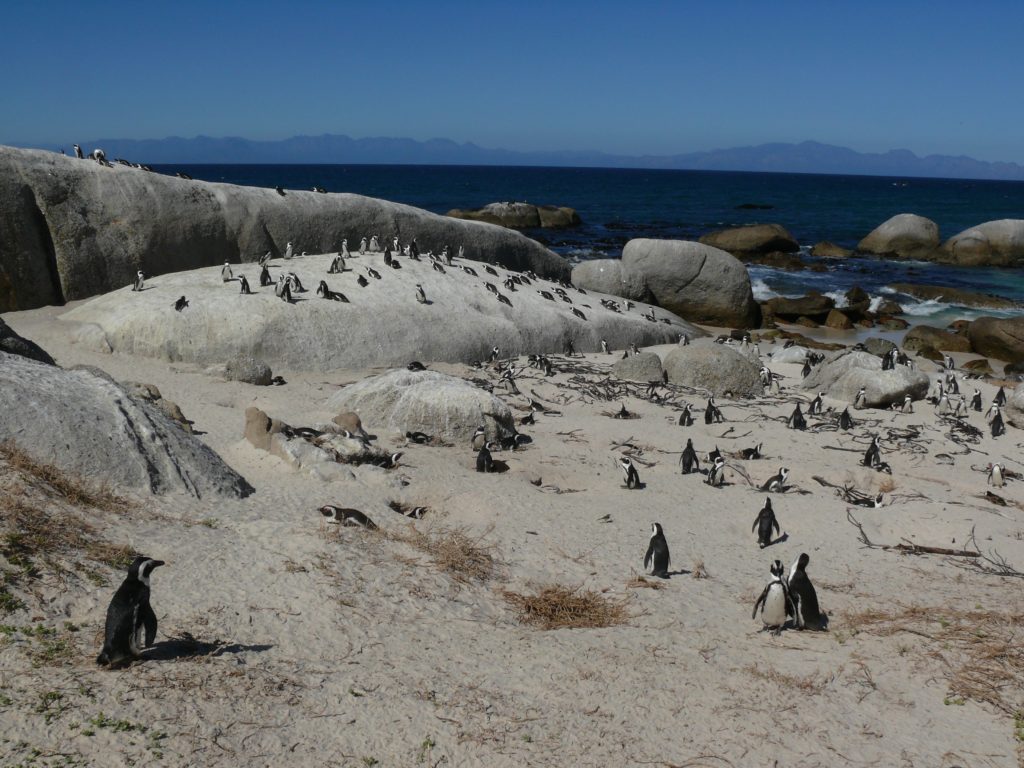
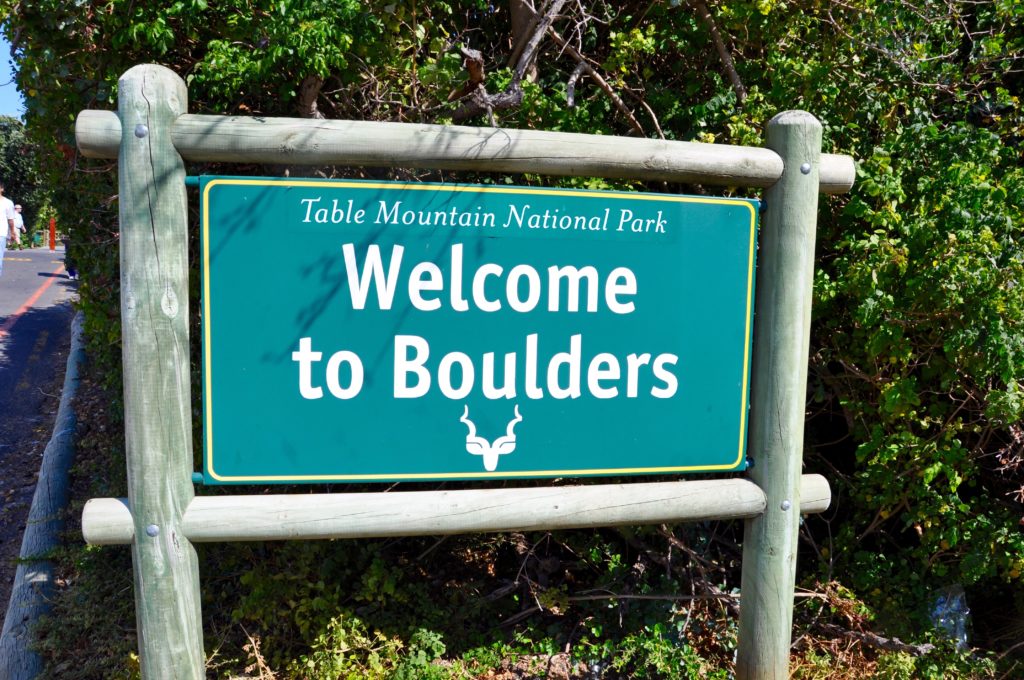
The area is a part of Table Mountain NationalPark – for protection of the penguin colony and the environment. It consists of 3 pristine beaches, one penguin viewing area and 3 boardwalks. At the Boulders Visitors Centre you will find information about the penguins and knowledgeable guides, and to enter the area you have to pay a small entrance (conservation) fee. As it is a National Park you can use the WILDCARD as we did.
It is allowed to sunbathe and have a swim at this beach. As a part of a National Park and a protected area, it is clean and safe. It is ideal for children as the boulders shelter the cove from currents, wind and large waves.
But of course – you must not touch or feed the penguins.
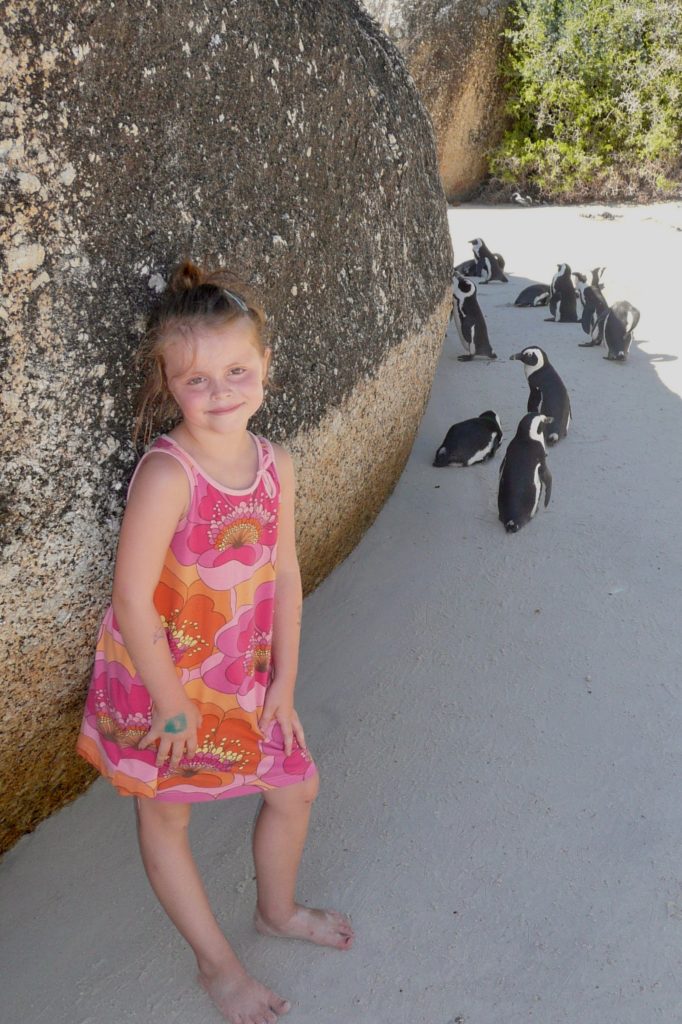
One day we stayed at the beach from morning to late lunchtime, a special and exciting experience! After a while it became high tide and the water rose, and the penguins came nearer. Some quite curious; one of them began picking at our clothes.
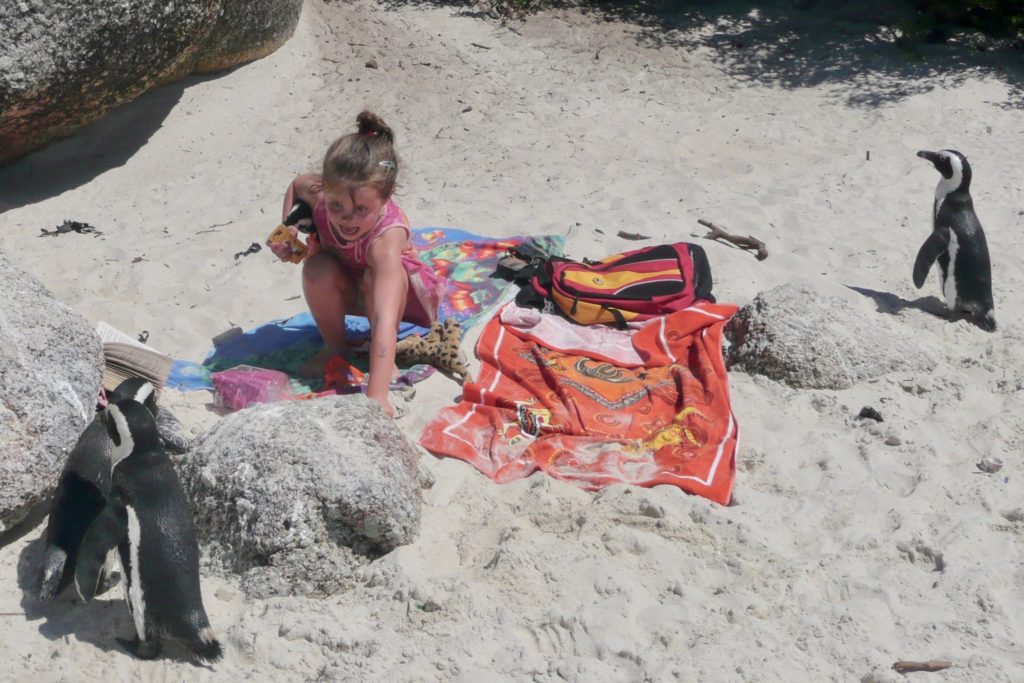
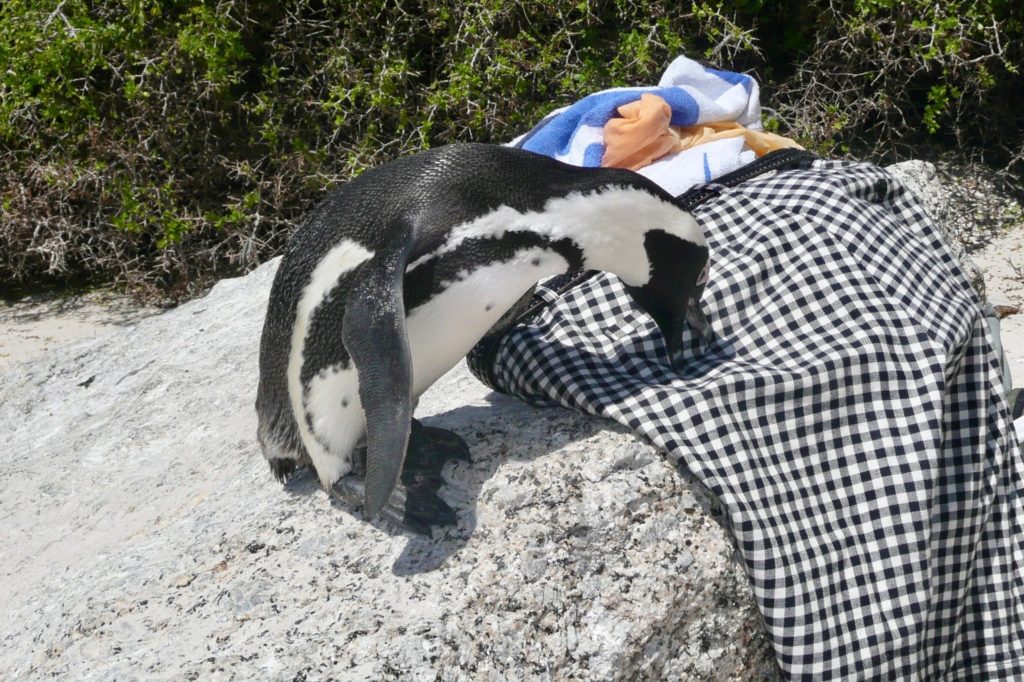
CAPE OF THE GOOD HOPE
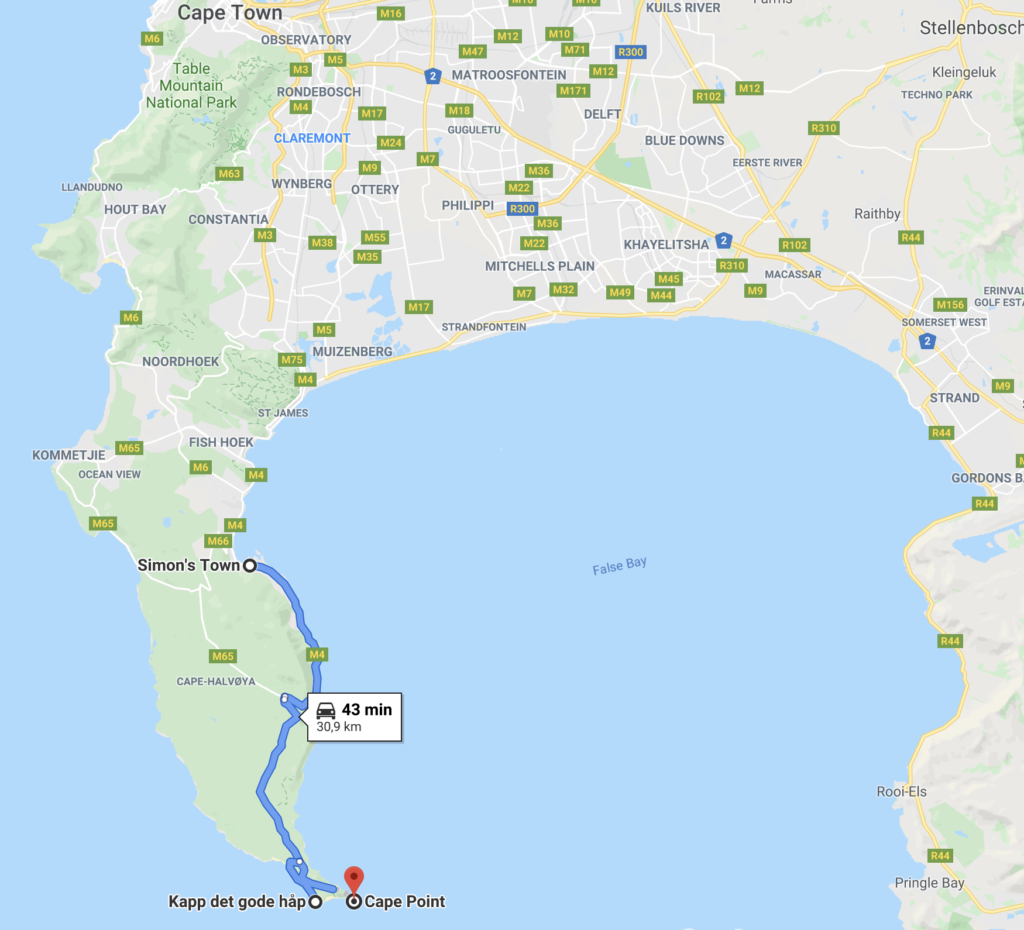
Cape of the Good Hope is the southern end of Cape Peninsula, and is often thought to be the southernmost point of Africa, but that is Cape Agulhas, some 150 km to the east, which we also visited when we stayed in Hermanus.
In 1488 Bartolomeu Dias named it “Cape of Storms” as it was a risky landmark on the routes to India, Australia and the Far East. Later John II of Portugal renamed it to “Cape of Good Hope” because its discovery was a good omen that India could be reached by sea from Europe.
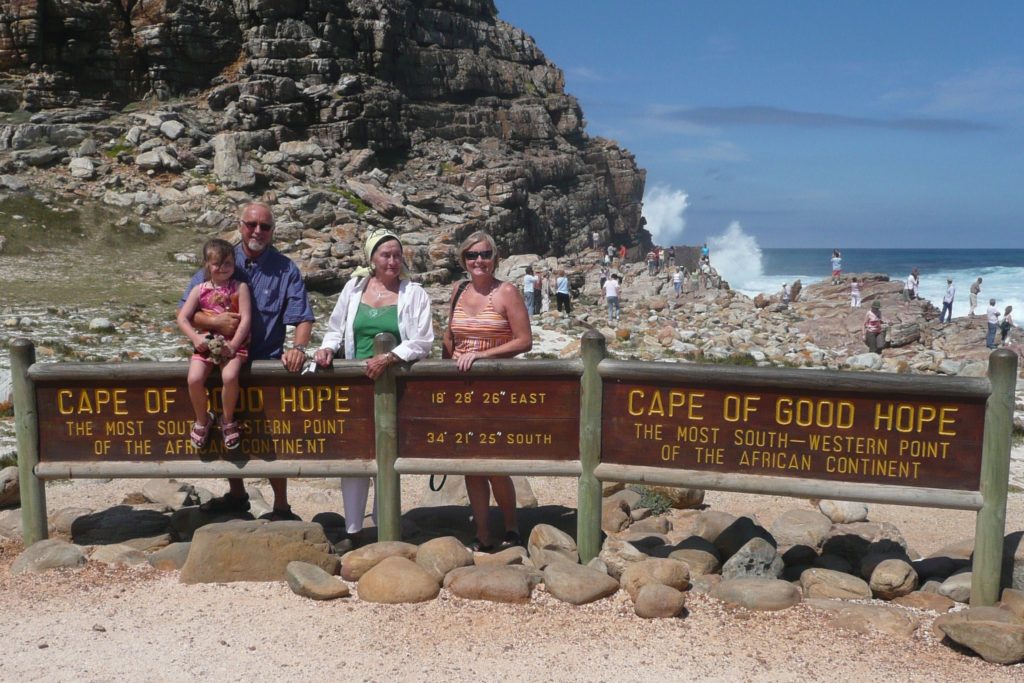
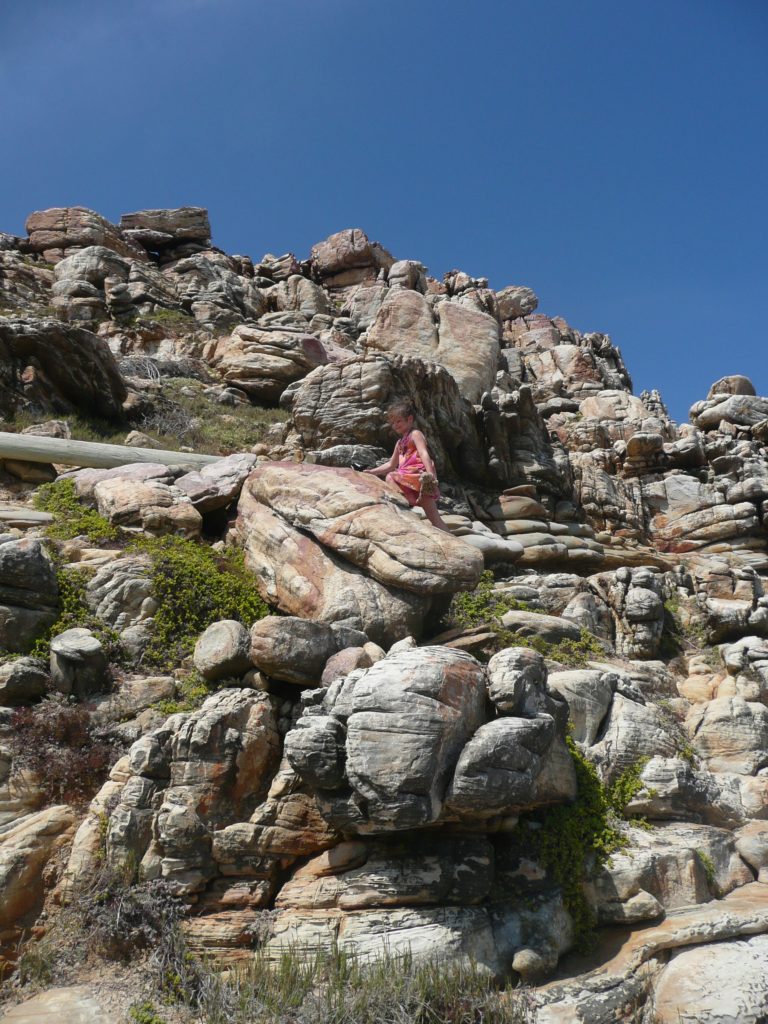
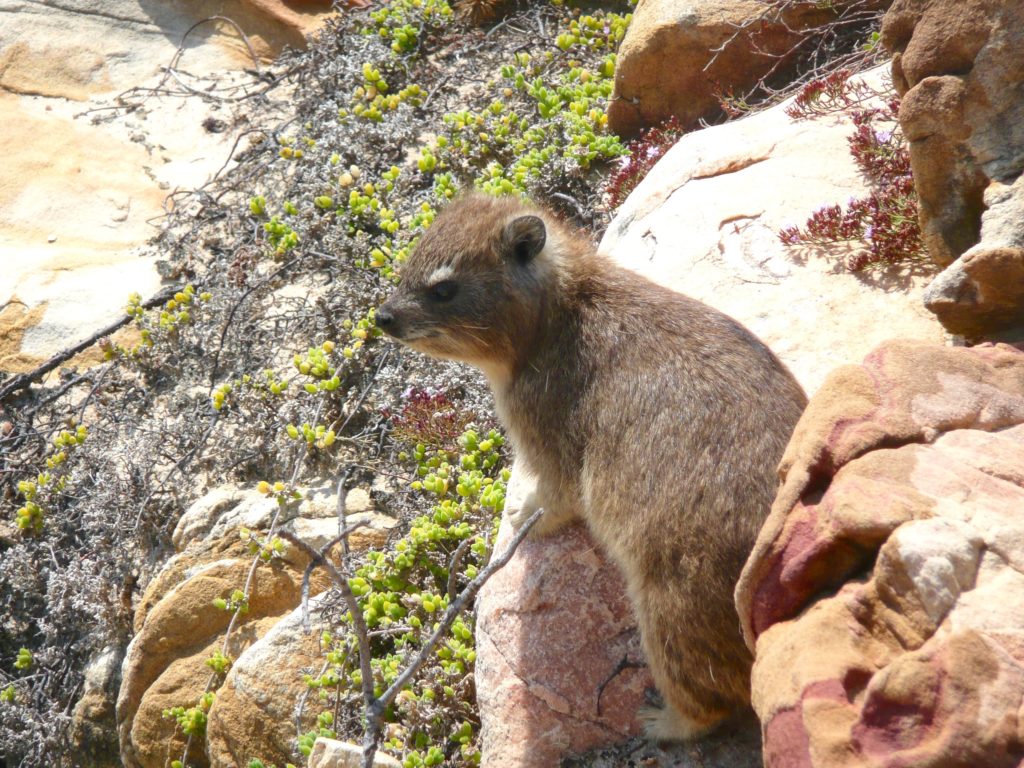
Met several rock hyrax (daisies) on the way 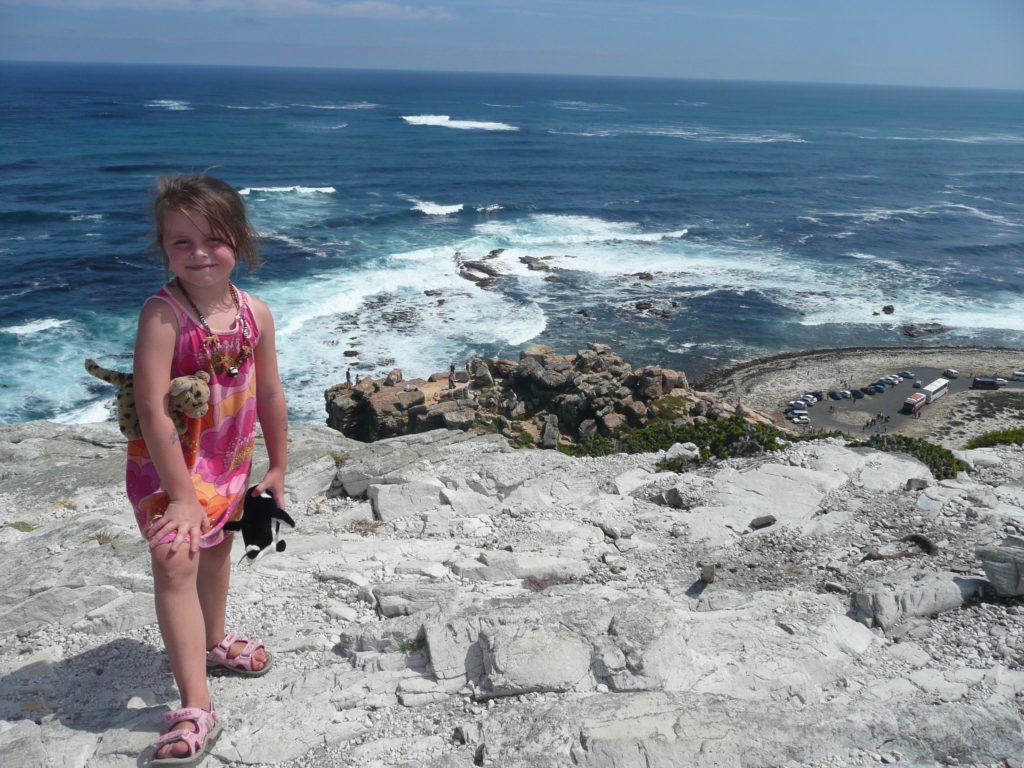
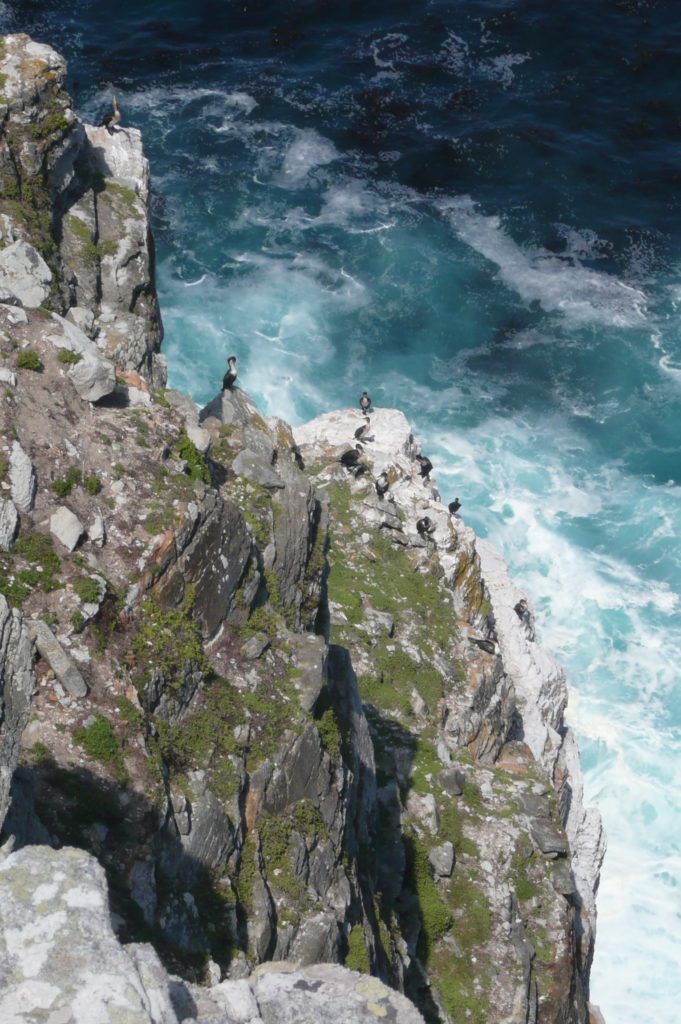
Cormorants at the cliffs down below 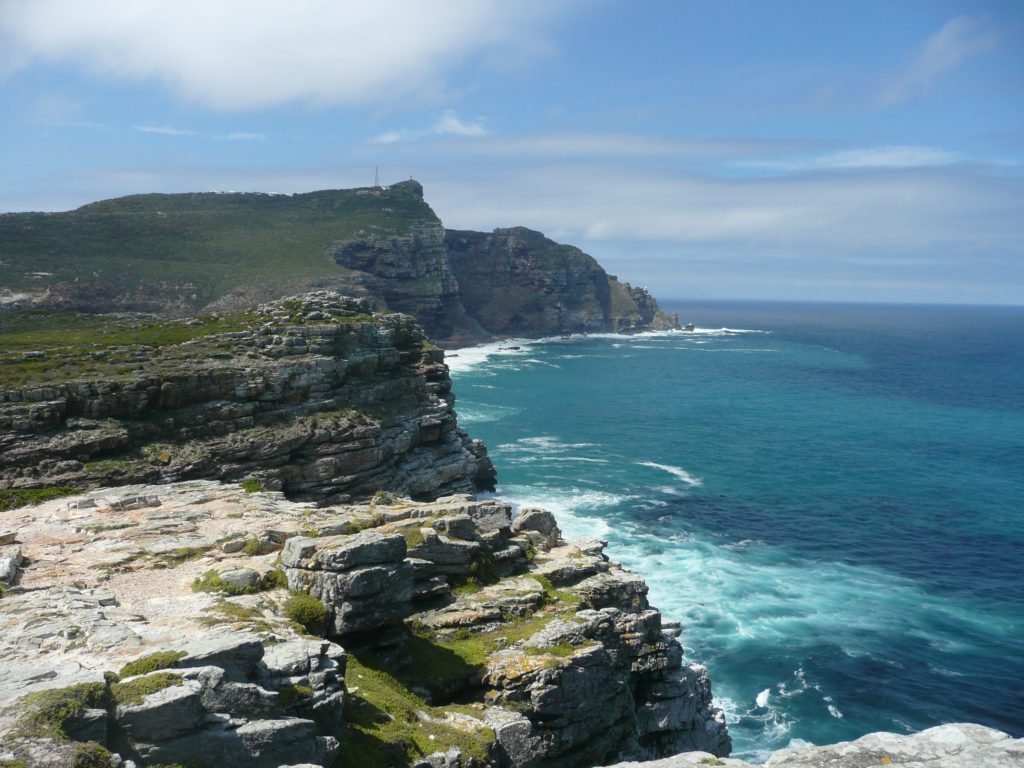
Great view to Cape Point
Both Cape of the Good Hope and Cape Point are within the southern section of Table Mountain National Park – and the Cape peninsula is one of eight protected areas in the region, jointly designated as a World Heritage Site by UNESCO for the richness of its unique flora. Nearly 20 percent of the continent’s plants are represented in this area, and fynbos, or “fine bush,” are the most common category of plant found here.
Whilst the reserve is primarily a botanical sanctuary for indigenous plants, a variety of antelope species can be spotted including Klipsringer, Eland and Bontebok as well as other mammals such as Cape Mountain Zebra, Chacma Baboon and Cape Clawless Otter.
The bird list contains almost 250 species, of which about 70 breed here with two fynbos endemics, Cape Sugarbird and Orange-breasted Sunbird mostly conspicuous in spring (August, September) when pincushion and other Protea species are in flower.
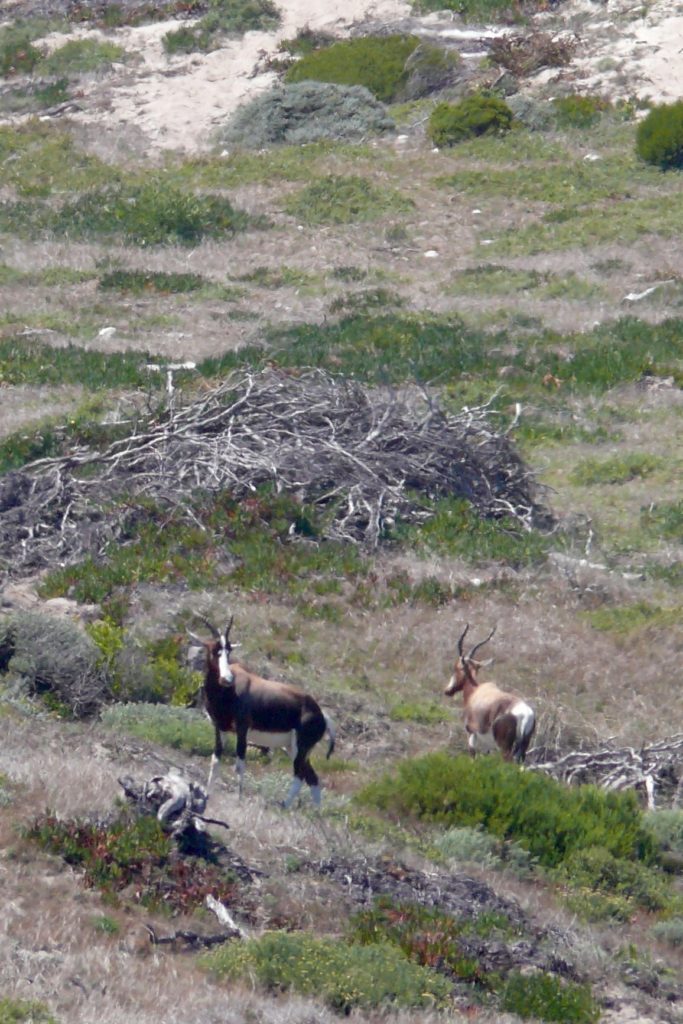
Bontebok 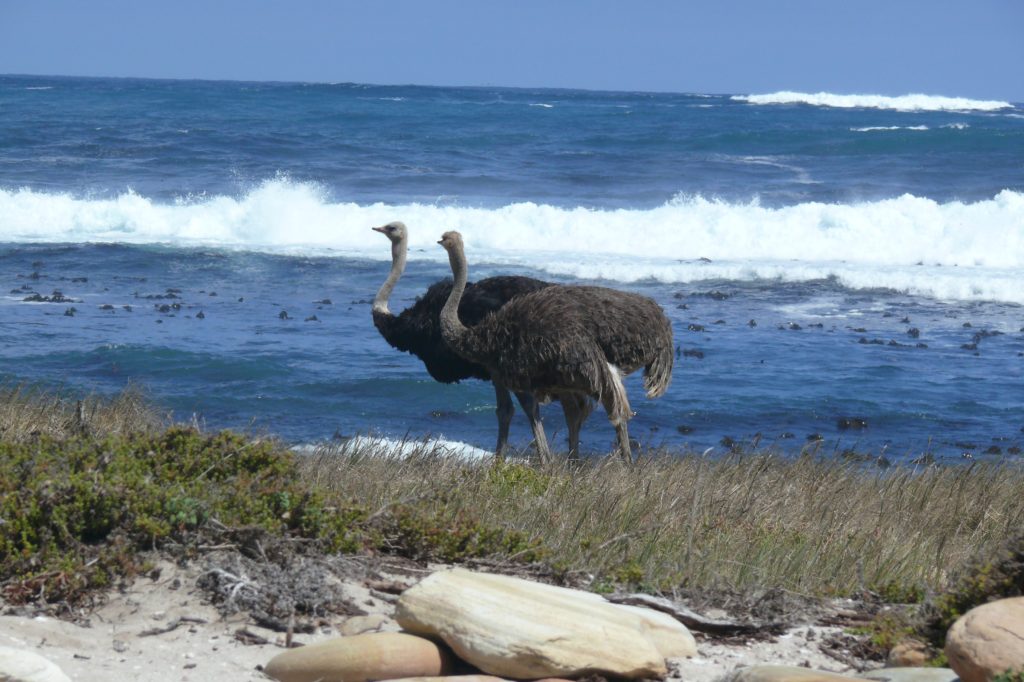
Ostrich by the sea!
CAPE POINT
Cape Point is the southeast corner of the Cape Peninsula – where rugged rocks and sheer cliffs towering more than 200 metres above the sea and cutting deep into the ocean.
To visit the historic lighthouse on top of Cape Point we travelled with the “Flying Dutchman Funicular” from the car park to the upper lighthouse . That is – you have climb the last part of the trail to get to the top.
The Flying Dutchman Funicular – is named after the legend of a ghost ship haunting the area. The tram is locally made, environmentally friendly and can transport 450 people an hour.
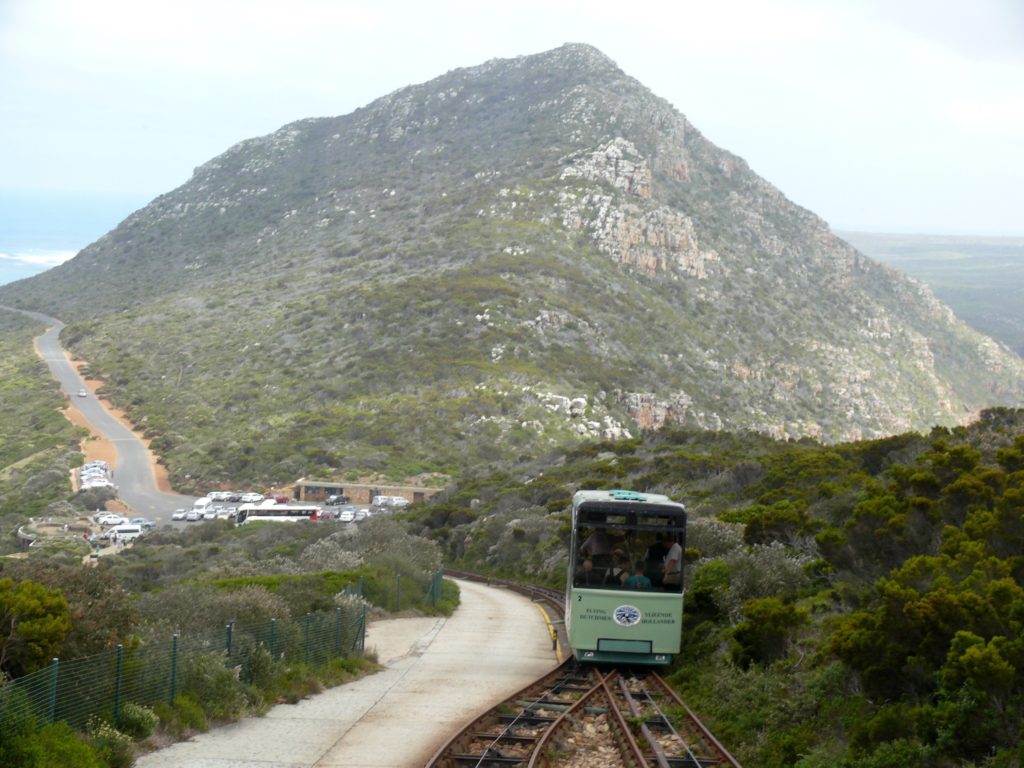
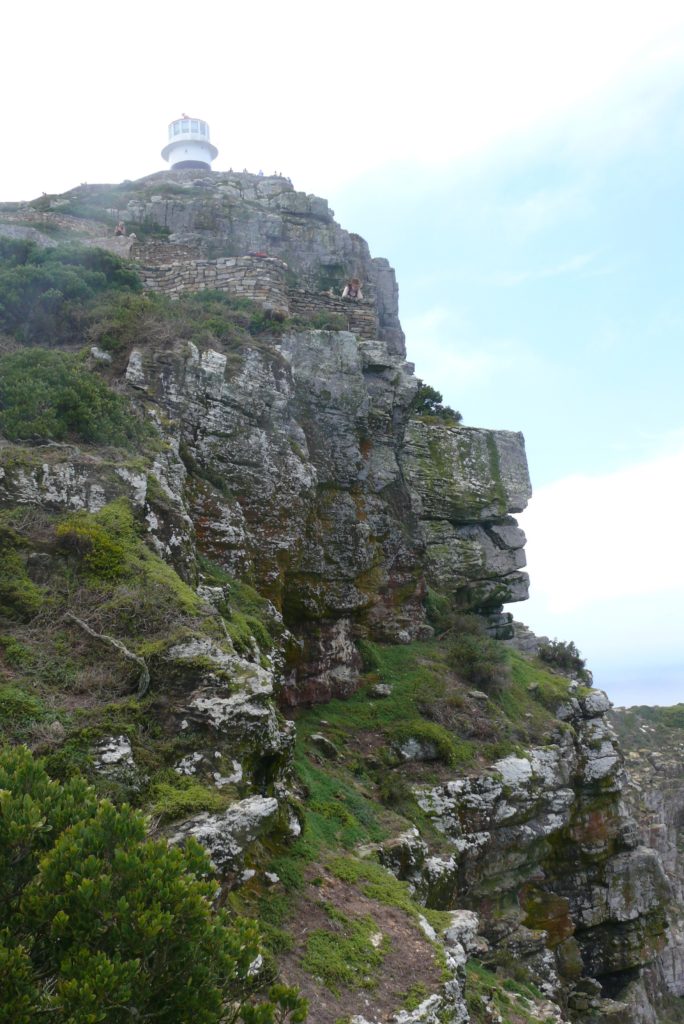
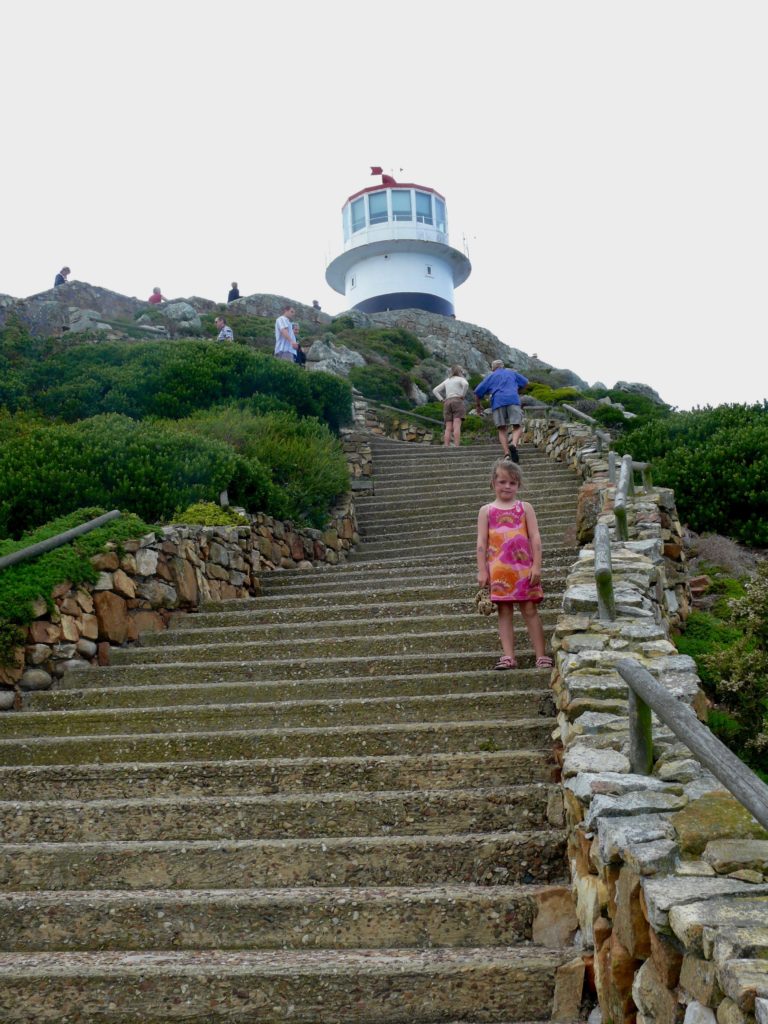
The last part of the trail to get to the old lighthouse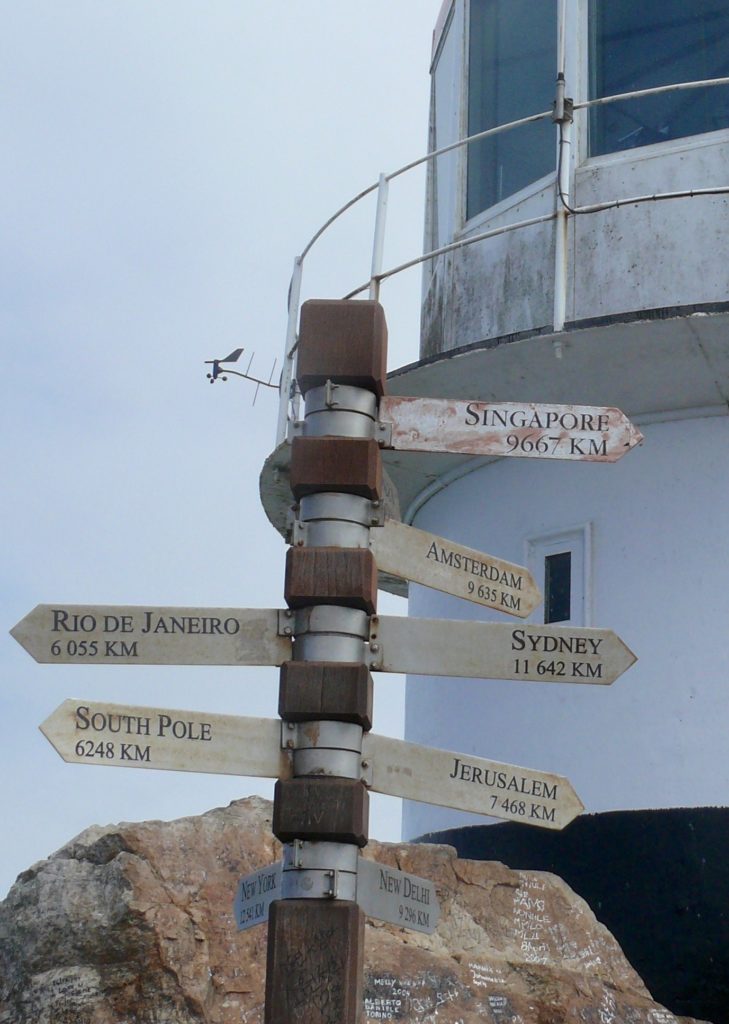
We visited The Old Lighthouse (238m above sea level) which is still a popular tourist attraction. It was built in 1850 and no longer functions. It sits too high above the ocean and is often covered by cloud. Ships approaching from the east could also see the light too easily, often causing them to approach too closely. Because of this, they often wrecked on the rocks before rounding the peninsula.
The new lighthouse is at a lower elevation (87 m above sea level). Its lights have a range of 60 kilometres and each flash has an intensity of 10 million candelas.
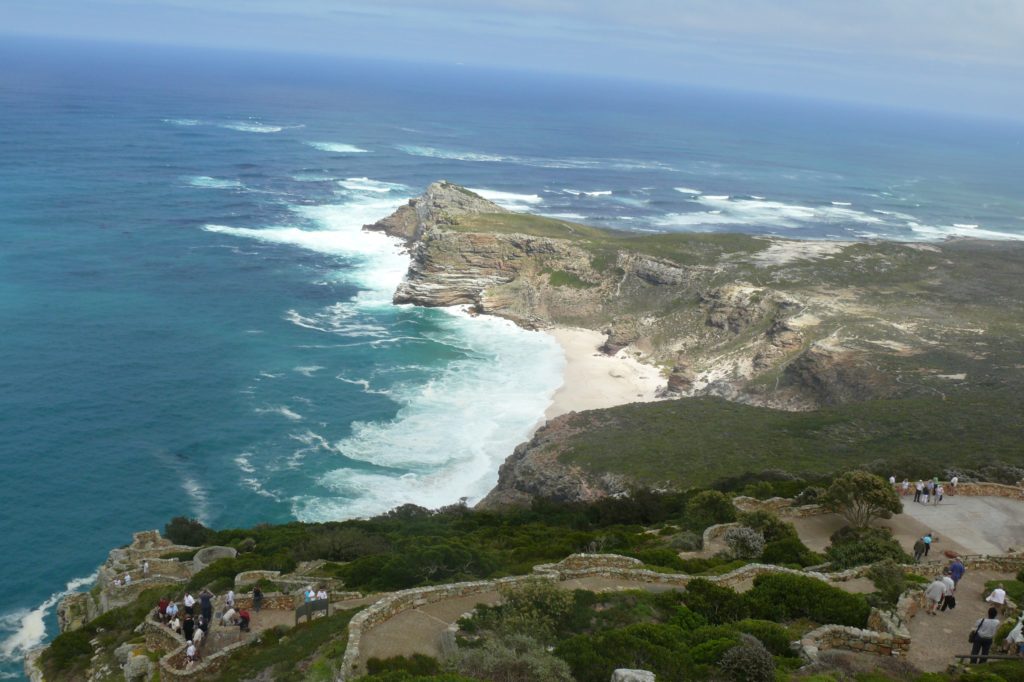
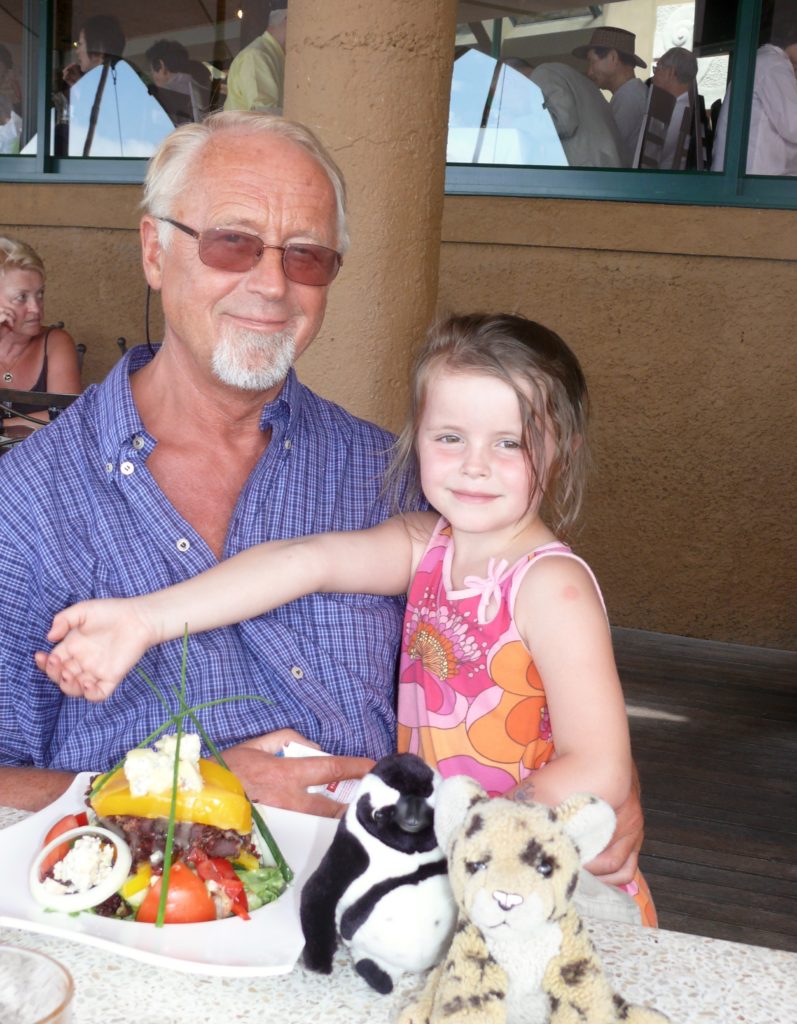
Lunch at the restaurant Two Oceans – at Cape Point
The Two Oceans Restaurant occupies an enviable position above False Bay at the southwestern tip of Africa. The restaurant is as famous for its seafood cuisine as it is for its view from the wooden deck.

We enjoyed the food and the view from the wooden deck 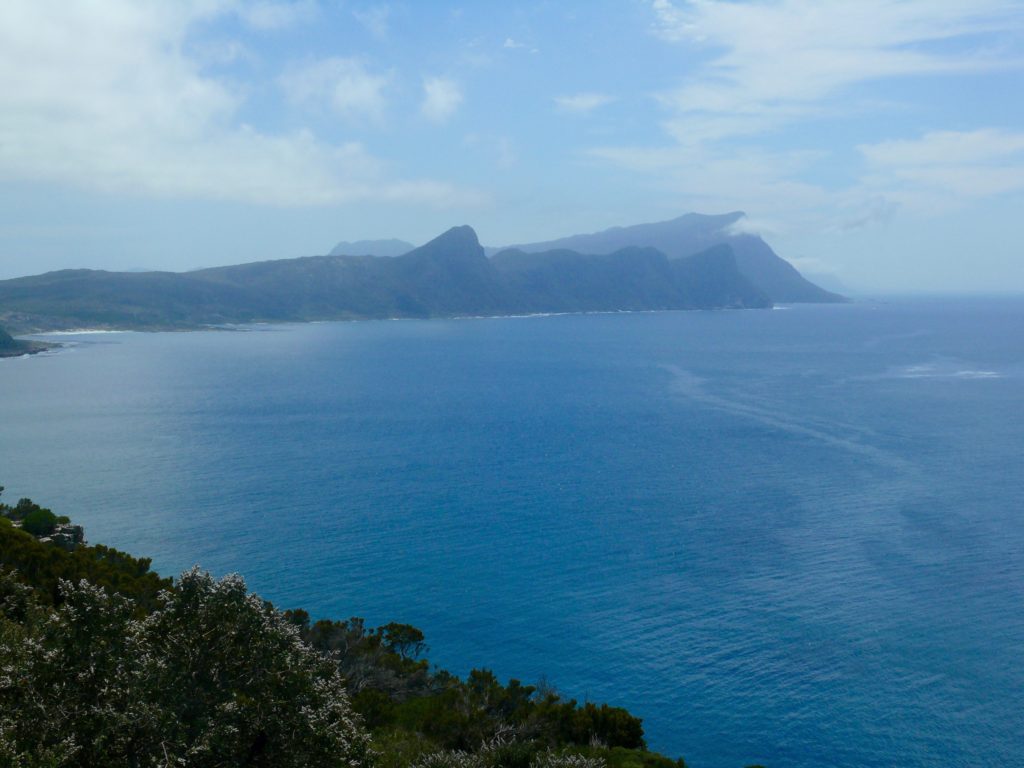
Stunning view !
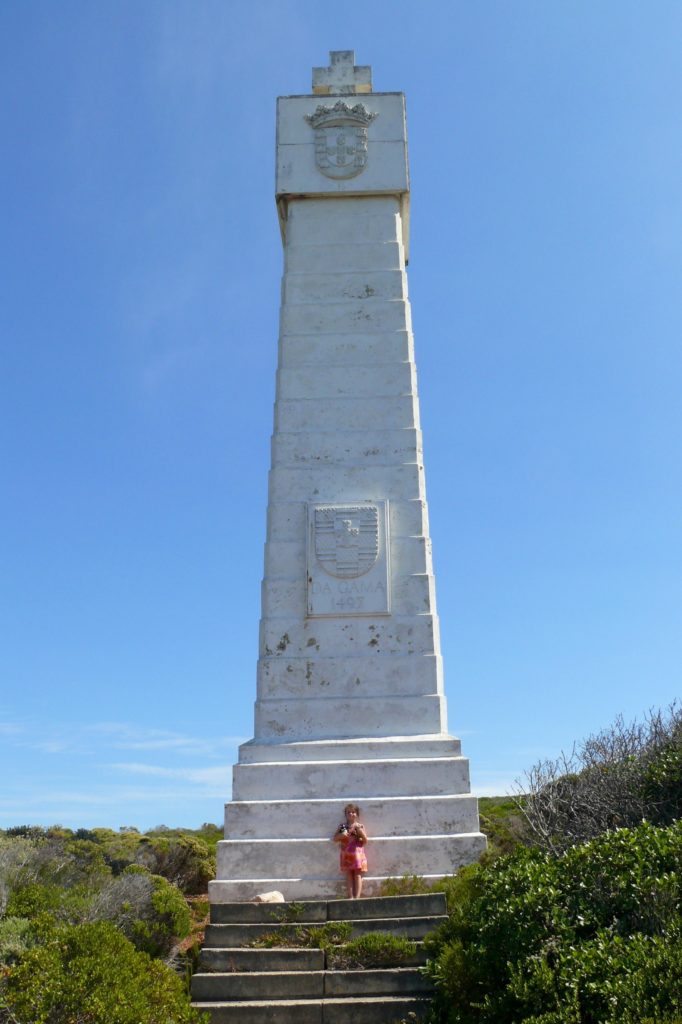
By the Vasco de Gama cross – about 8 km north of Cape point.
The Portuguese government erected two navigational beacons, Dias Cross and Da Gama Cross, to commemorate Vasco da Gama and Bartolomeu Dias as explorers who were the first explorers to reach the cape. When lined up, the crosses point to Whittle Rock, a large, permanently submerged shipping hazard in False Bay.
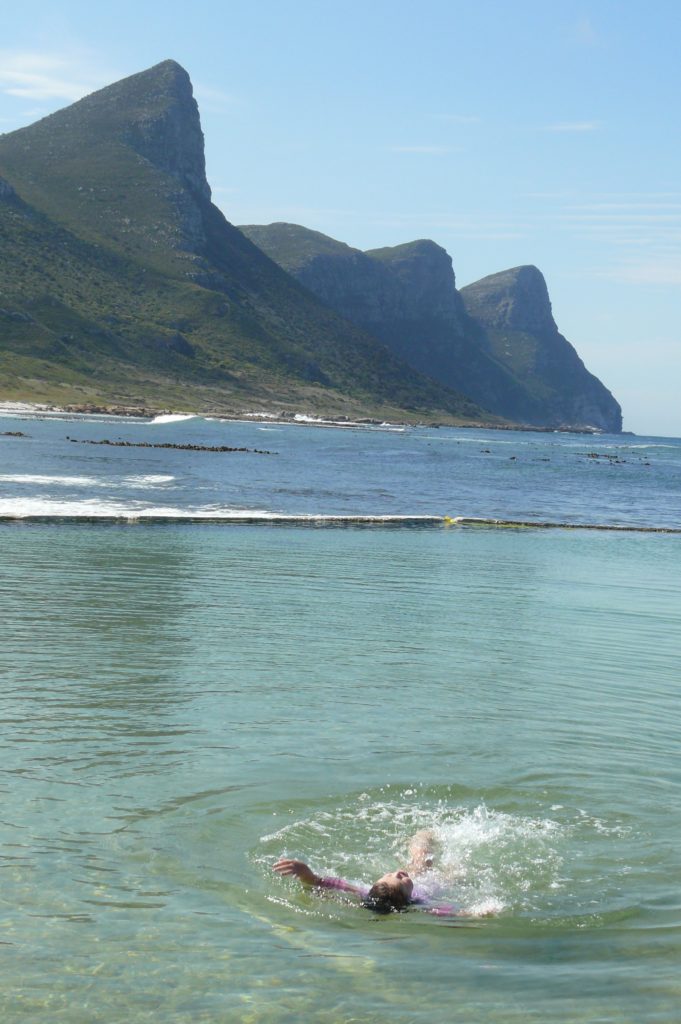
BOTDJIESRIF TIDAL POOLS
We stopped at Bordjiesrif – which is inside the Cape Point Nature Reserve. Beautiful place with a picnic area and a tidal pool – great for a dip in the sea
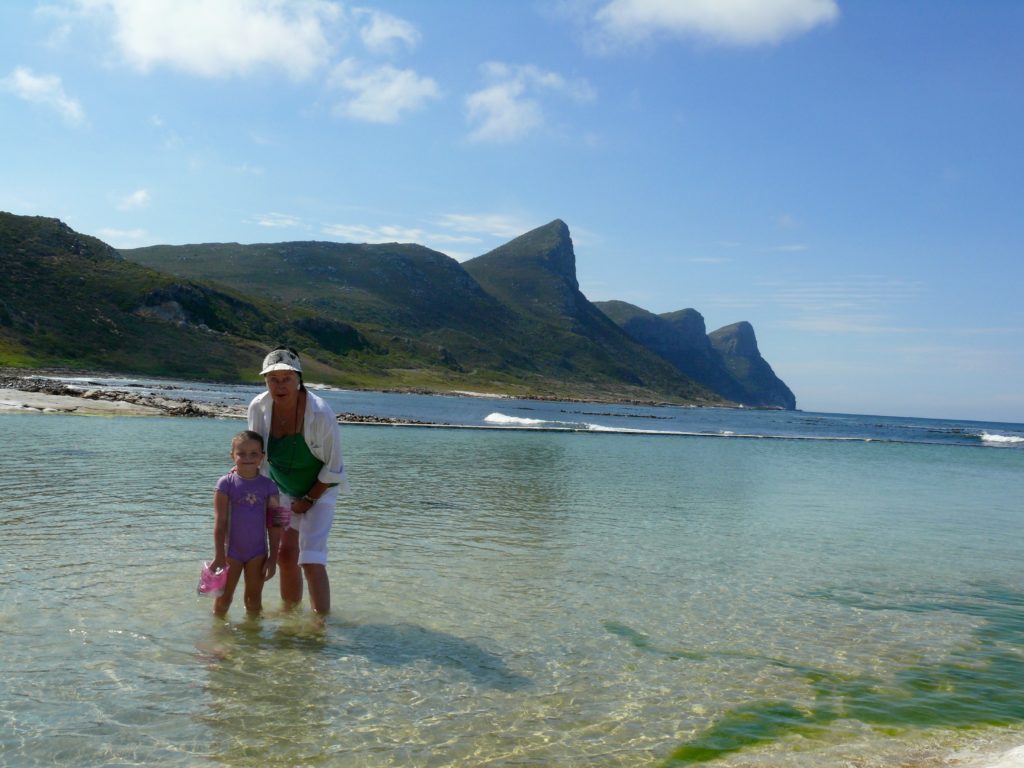
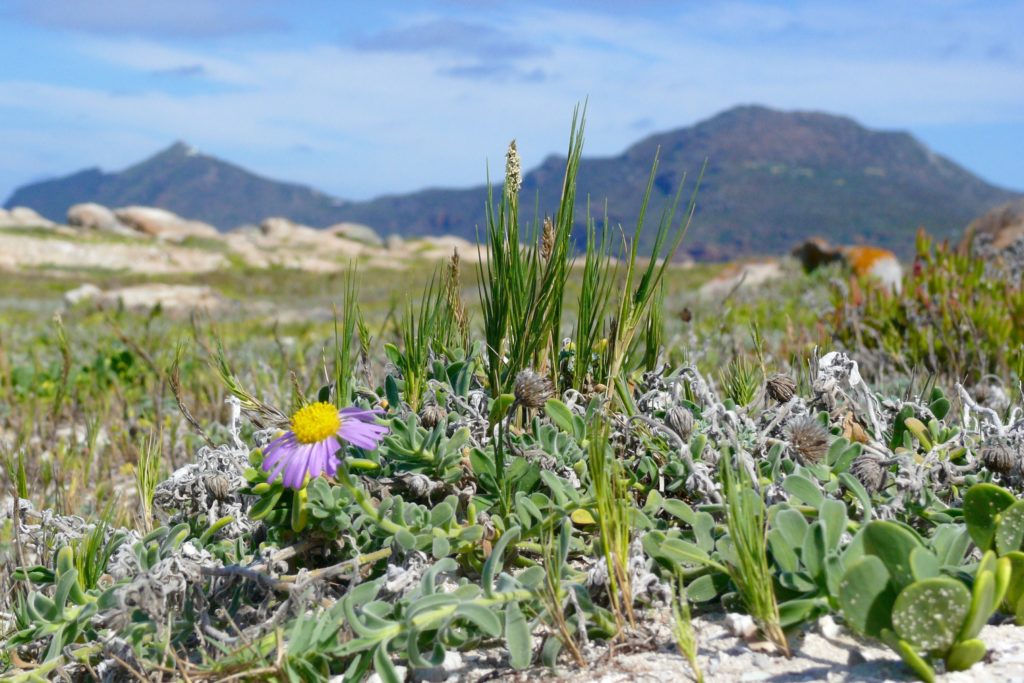
Beautiful surroundings
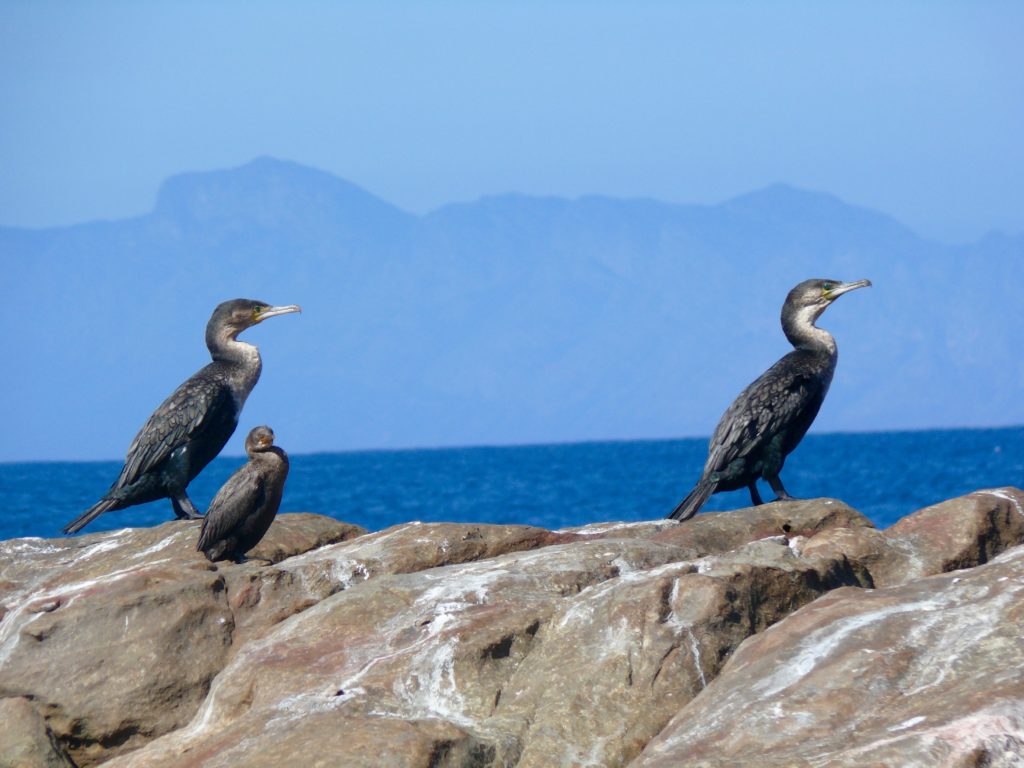
Cormorants 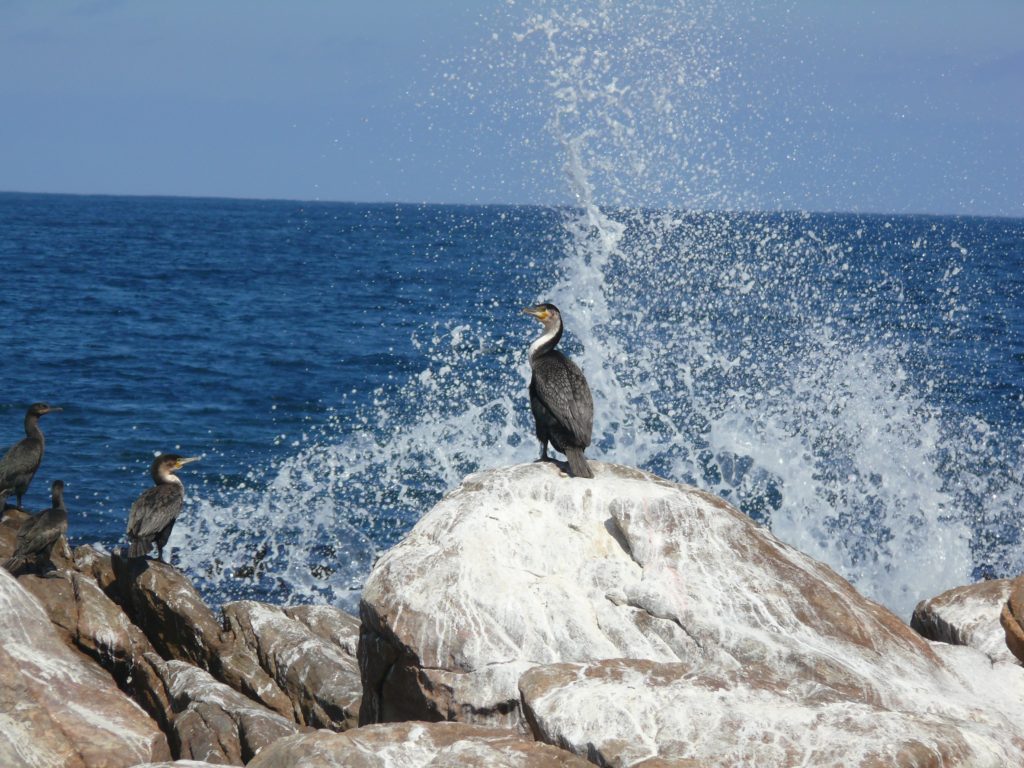
TOWARDS CAPE TOWN
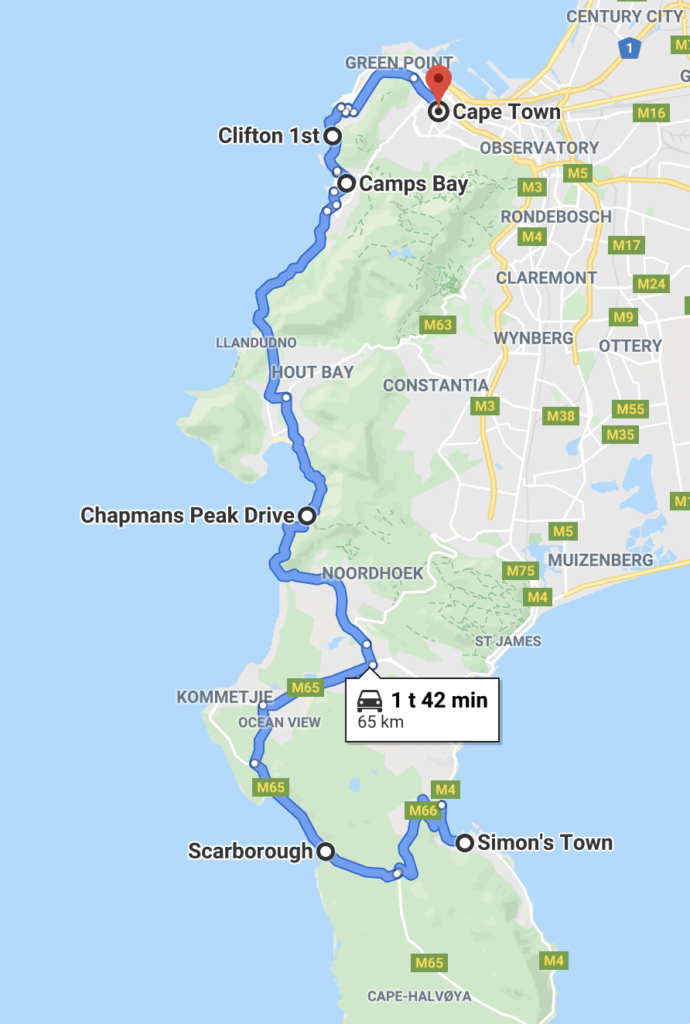
TOWARDS CAPE TOWN
After 4 days at Simon´s Town we travelled north at the west coast of the Cape Peninsula.
Just before we came to Scarborough at the west coast, we came across a collection of African art, large sculptures of both people and animals.
This was a sculpture garden at the entrance of The Cape Farmhouse.
CHAPMAN´S PEAK DRIVE
‘Chappies’ – local speak for Chapman’s Peak Drive – is one of Cape Town‘s most famous landmarks. Nine kilometres and 114 curves of breathtaking scenery brings you from Noordhoek to Hout Bay, or the other way around.
It took seven years to build and was opened in 1922
Some say it is one of the most spectacular marine drives in the world.
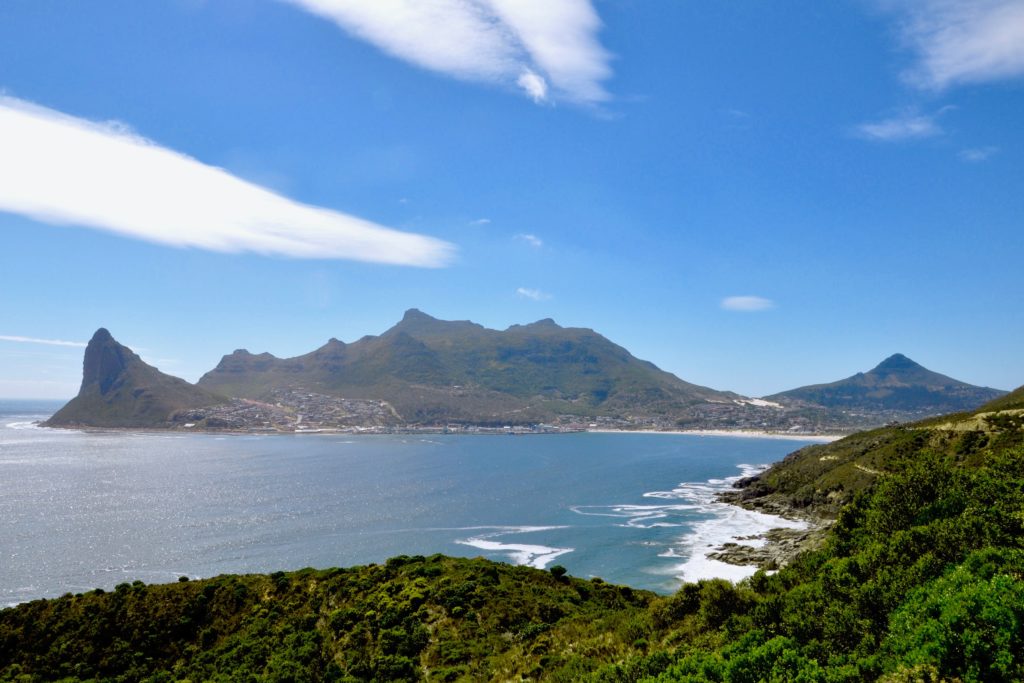
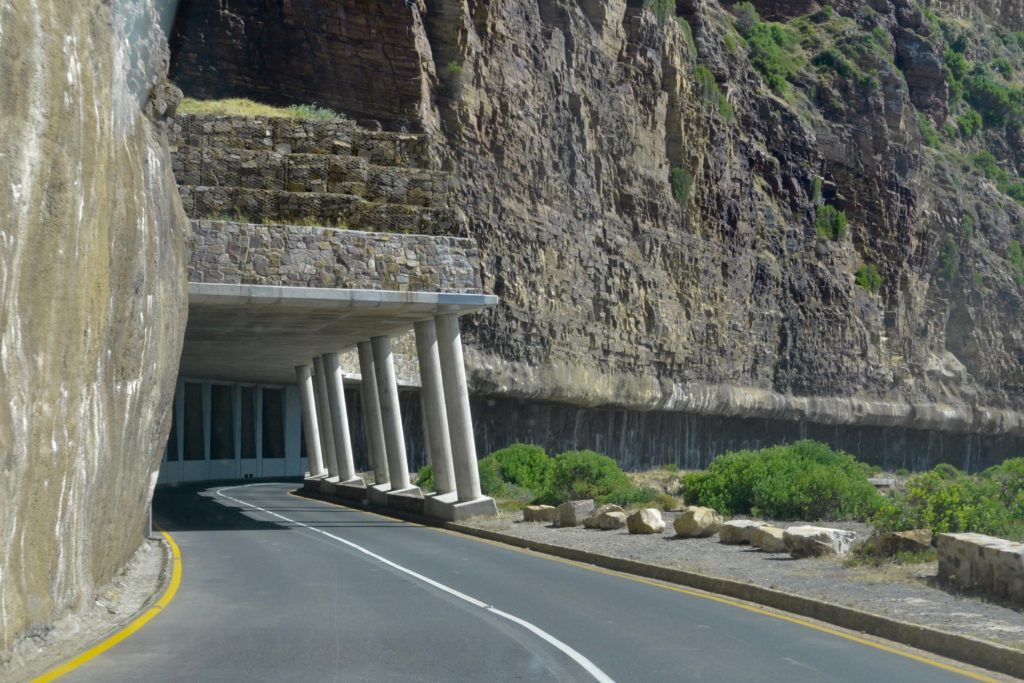
155m long half tunnel- protection from rockslides 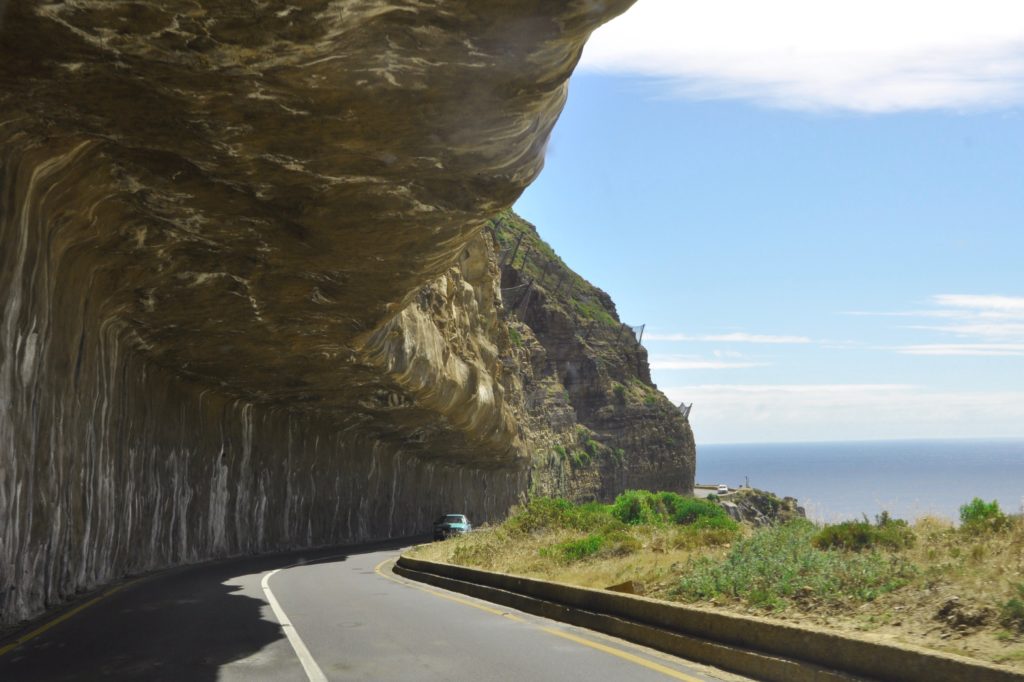
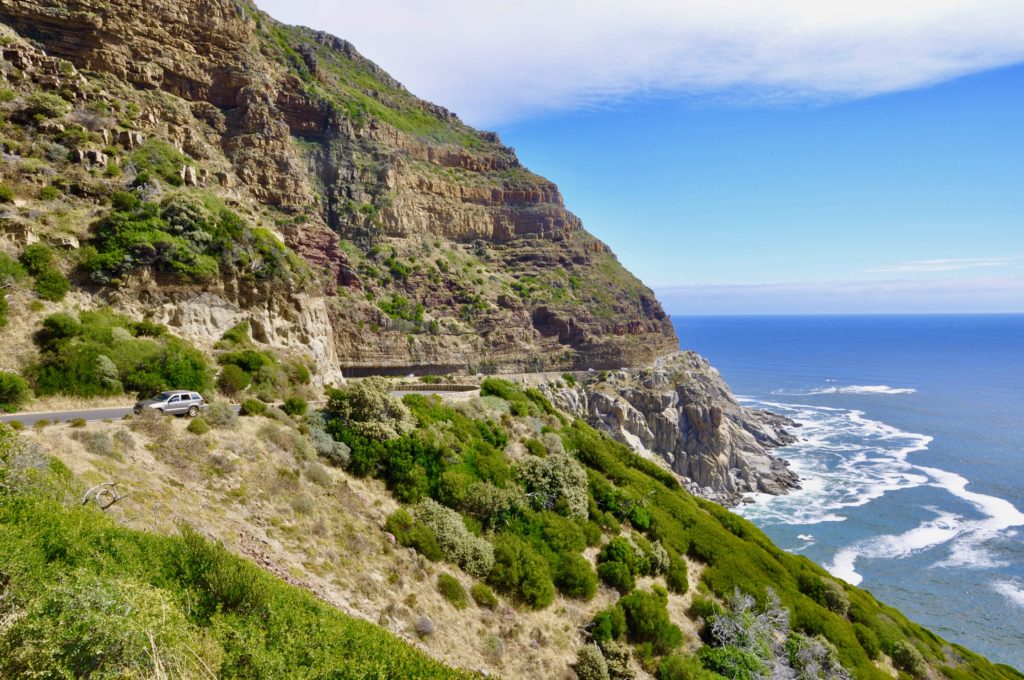
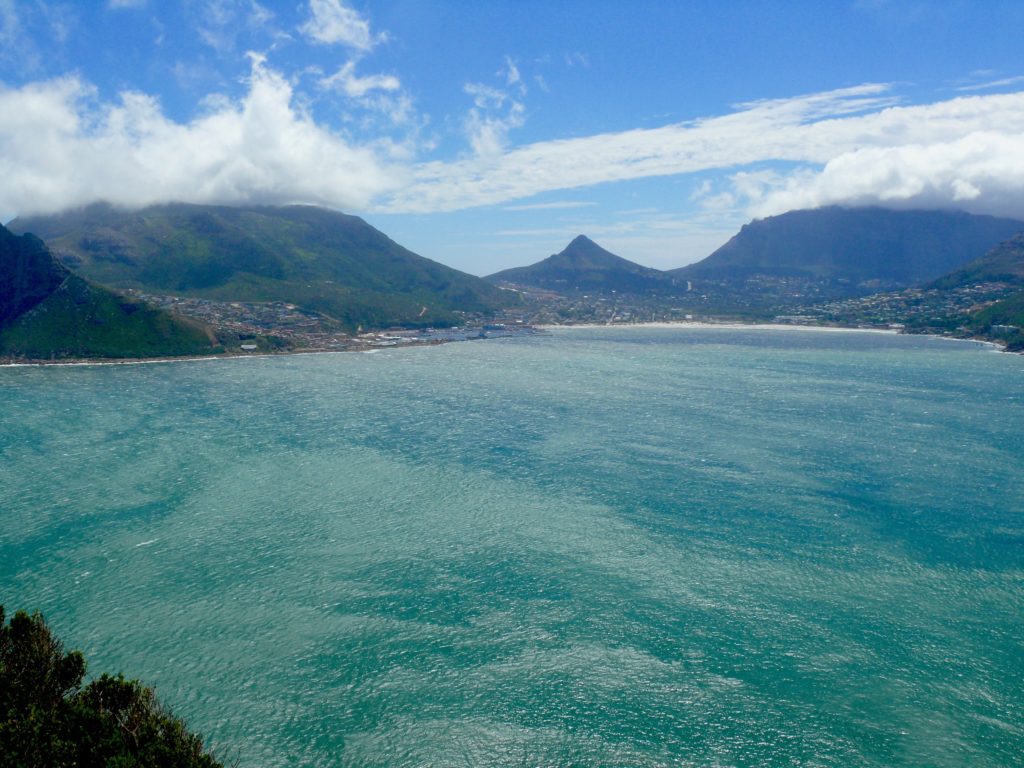
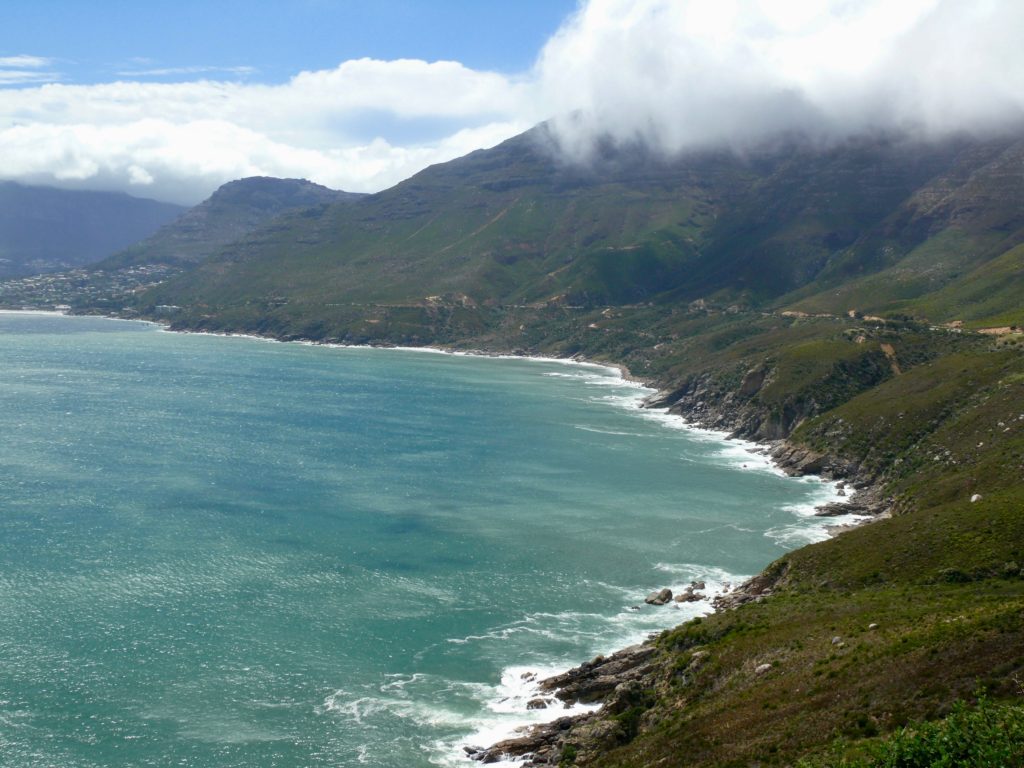
CAMPS BAY
Camps Bay – suburb of Cape Town with a wide, sandy beach set below the Twelve Apostles range. It is a Blue Flag beach and one of the city’s most popular – with its palm trees and fantastic promenade lined with trendy restaurants, cafes and cocktail bars. Here the celebrities mingle with locals and international visitors.
The beach has some drawbacks though – it is one of the windiest beaches here and it gets crowded, particularly on weekends.

CLIFTON BEACH
North of Camps Bay – is Cape Town´s exclusive suburb of Clifton, and Clifton beach is undoubtedly one of the most beautiful beaches in Cape Town. Turquoise waters and soft, white sand make it an idyllic coastal spot.
It is often referred to as the St. Tropez of Cape Town, and attracts both international jetsetters and locals.
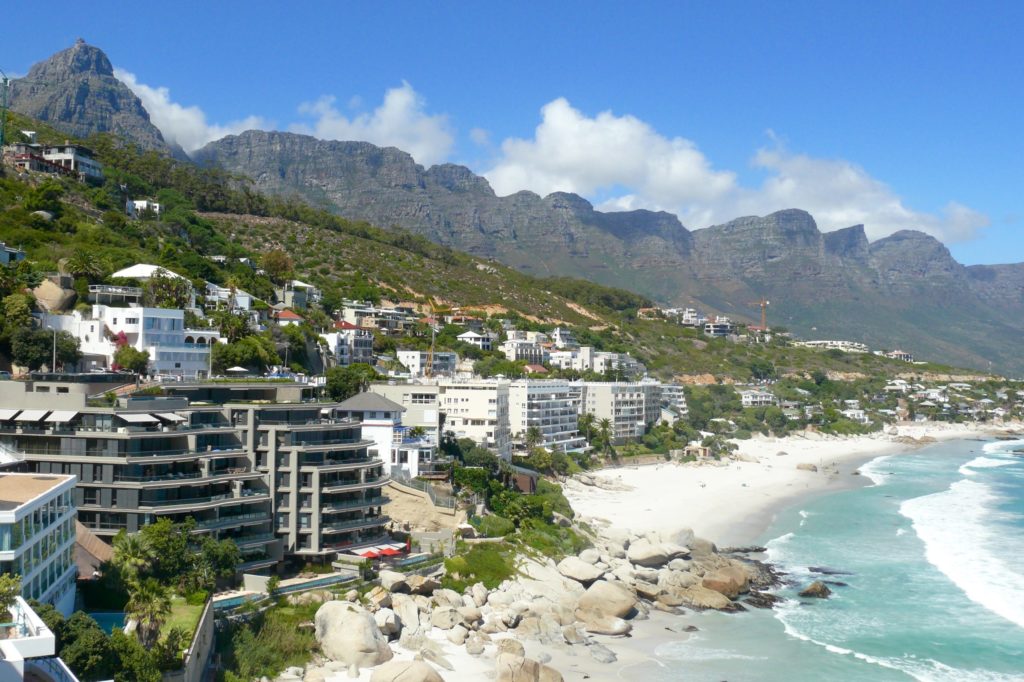
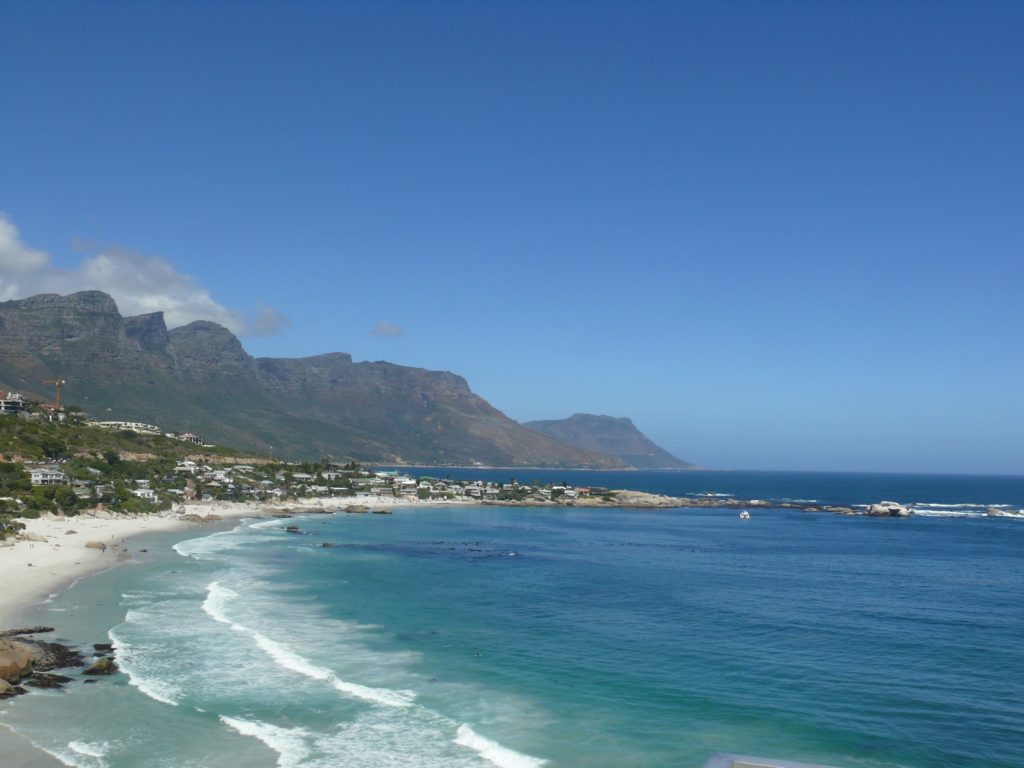
The beach is separated into four coves, reached via steep stairways separated by giant boulders. Each beach attracts a slightly different crowd:
First Beach is one of the longest, and attracts a crowd of surfers, locals and holiday makers from adjacent luxury apartments.
Second Beach is popular with teenagers and volleyball players.
Third Beach attracts a gay-friendly crowd.
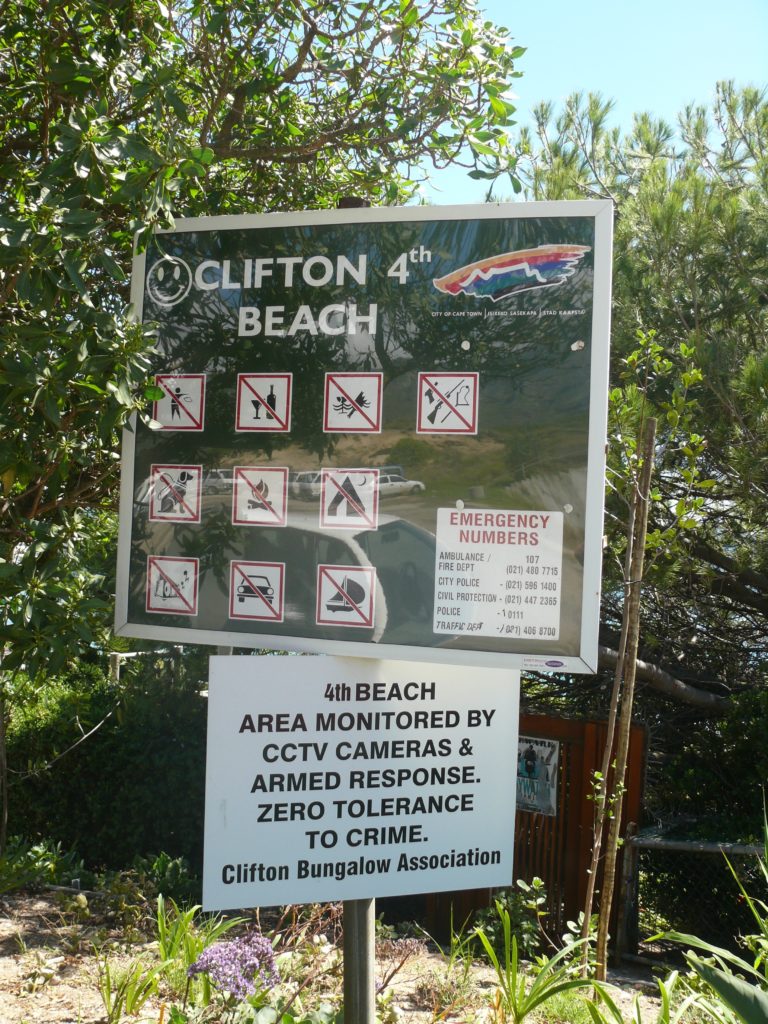
Fourth Beach is perhaps the most universally popular. It has earned a Blue Flag status and has an extensive range of facilities including snack kiosks, changing rooms, and public restrooms. Umbrellas and beach chairs are also available for rent.
CAPE TOWN
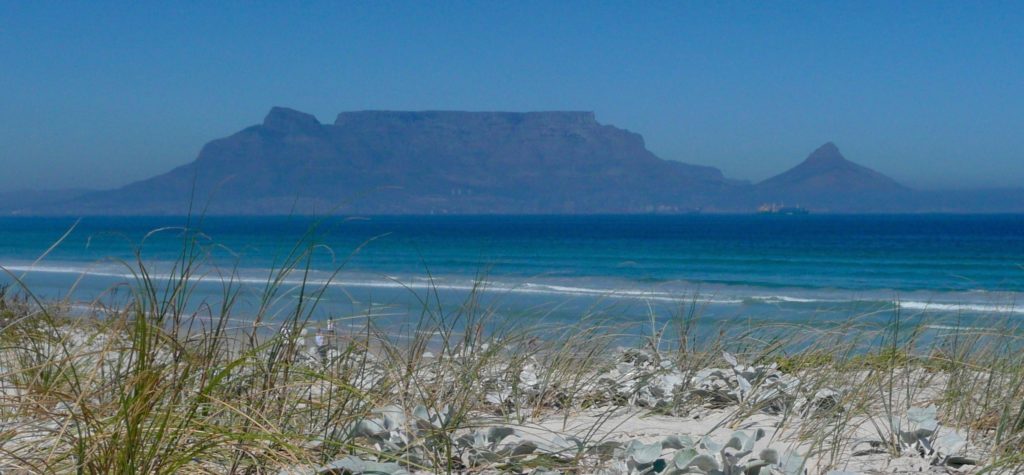

Had to find a picture that gives a better impression of Cape Town and its setting – with the mountains and coastline. It is magnificent!
Photo from: cometocapetown.com
CAPE TOWN – South Africa´s second largest and oldest City – ranks among the most beautiful in the world.
Cape Town is known for
- its beautiful setting and its iconic Table Mountain
- nature reserves and botanic gardens
- white pristine beaches
- its harbor and buzzing waterfront
- its rich historical heritage
- the surroundings – the Winelands and Cape Peninsulas many attractions – Cape Point and Cape of The Good Hope and more.. (some I previously have described)
Cape Town is one of South Africa’s most historically important cities. It was here, where the first European colonists set foot in South Africa—which also marked the beginning of the South African slave trade. It was home to perhaps the world’s most famous political prisoner – Nelson Mandela – who was held on the tiny Robben Island in Table Bay.
Cape Town is also one of the most culturally diverse cities in the world, a mix of people, culture, and cuisines.
Other Interesting Facts:
- Cape Town was founded in 1652. This was when Jan Van Riebeeck (an employee of the Dutch East India company) arrived to established a way-station for ships travelling to the Dutch East Indies. The city became the capital of the Cape Colony in 1815. Today it’s the legislative capital of South Africa.
- The city’s architecture traces the influence of Dutch and English occupations, alongside settlers from France, Germany and the East.
- Cape Town’s Castle of Good Hope is the oldest building in South Africa. It was built between 1666 and 1679 by the Dutch East India company.
- Cape Town’s climate is similar to California and the Mediterranean.
- Cape Town was the first city outside Europe to get Blue Flag status due to its high water quality, fantastic facilities, safety and cleanliness.
- Approximately 3.5-million people live in Cape Town
GREEN MARKET SQUARE
Green Market Square – the old heart of Cape Town and the the second oldest square in the city. It served as a slave market under the Dutch East India Company, during the 19th century it became a vegetable market, and today it remains a popular meeting place with a busy market selling African crafts and jewellery.
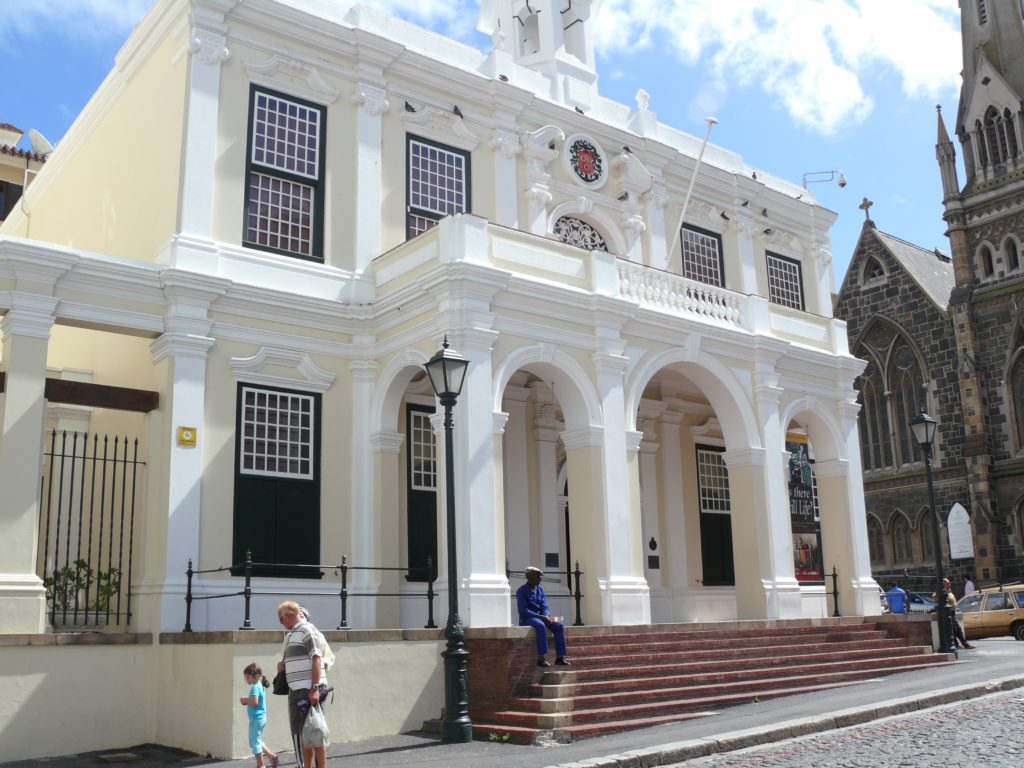
Opposite the Green Market is the Old Town House.
I wondered – Who is this man with all the eggs on his head ?
I later read that his name is Gregory da Silva, and he a comedian, artist, storyteller, dancer and live street perfomer from Benin. He is a regular visitors to Green Market Square and many tourists call him – “The Eggman”.
Eggman stands out in a crowd with his 3m-high hat made of eggs and other recycled bits and pieces, weighing up to 27 kg, along with his colourful tunic, which represents all the countries on the African continent.
He is very famous in Africa, and almost an institution at Art festivals in South Africa. As the Best of Cape Town Awards 2008 finalist in the Performing Arts category, he shared his talent with children from the township by teaching them about art, performing and dance through his Project for Africa programme. “Children in Africa need our help,” .
THE VICTORIA & ALFRED WATERFRONT
The Victoria & Alfred Waterfront in Cape Town is the most-visited destination in South Africa – ahead of Table Mountain. The waterfront is named after Prince Alfred, who began construction on the harbour in 1860, and his mother Queen Victoria.
The area was redeveloped in the late 1980s, and is a mixed-use development comprising residential and commercial property, hotels, retail stores, dining, leisure and entertainment facilities like:
- five shopping districts: Victoria Wharf, the Watershed, The Alfred Mall and Pierhead, The Clock Tower, and Breakwater Point. Everything from local designers to big international brands. For crafts and local talent- visit the Watershed, and for art or jewellery – The Alfred Mall and Pierhead.
- restaurants, coffee shops and fast-food outlets
- Cape Wheel – with spectacular views of the city
- historical buildings and museums
- world-class hotels and luxury apartments in the residential marina
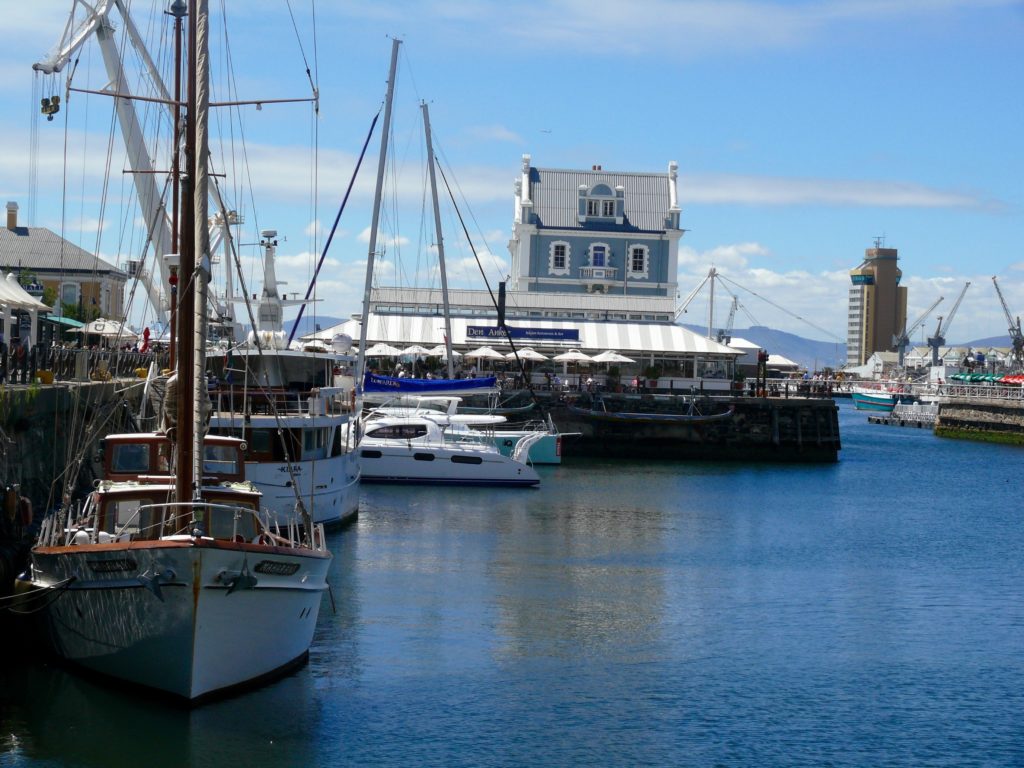
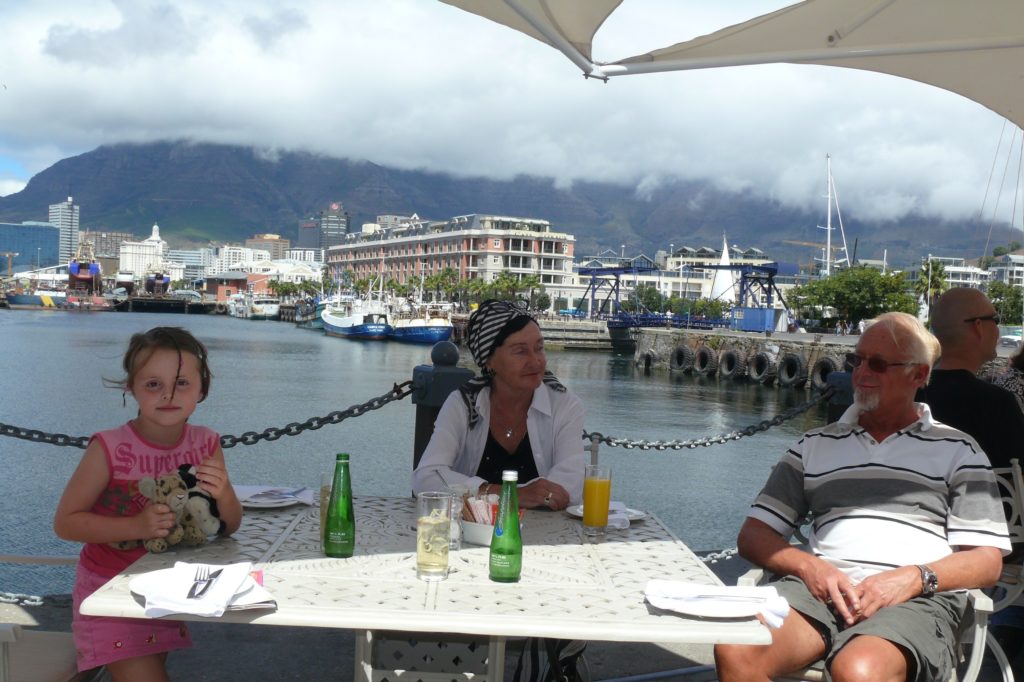
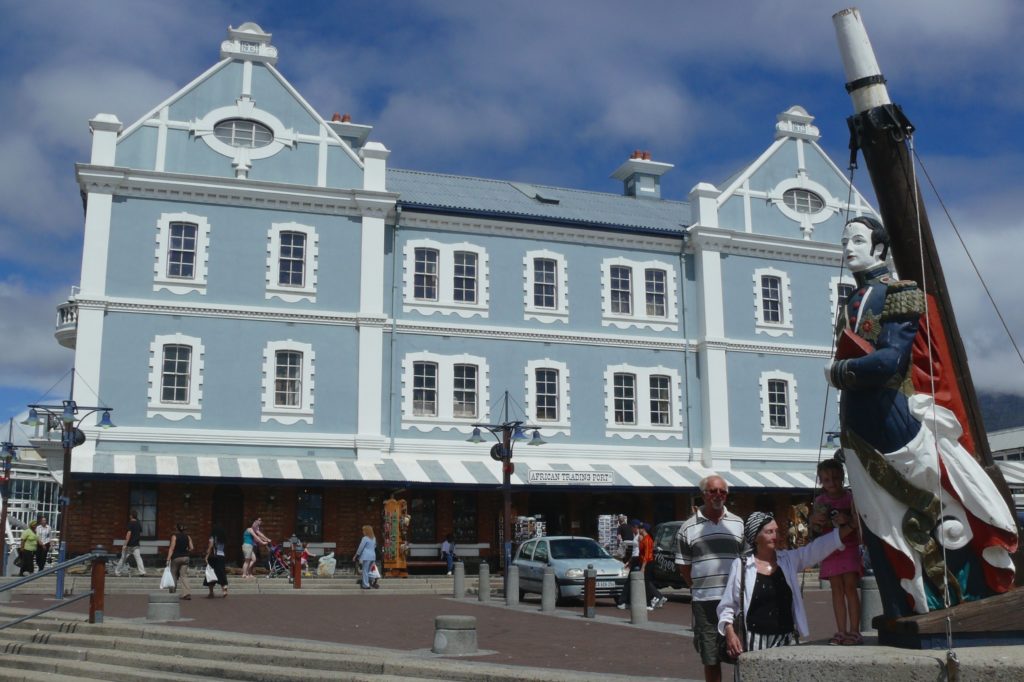
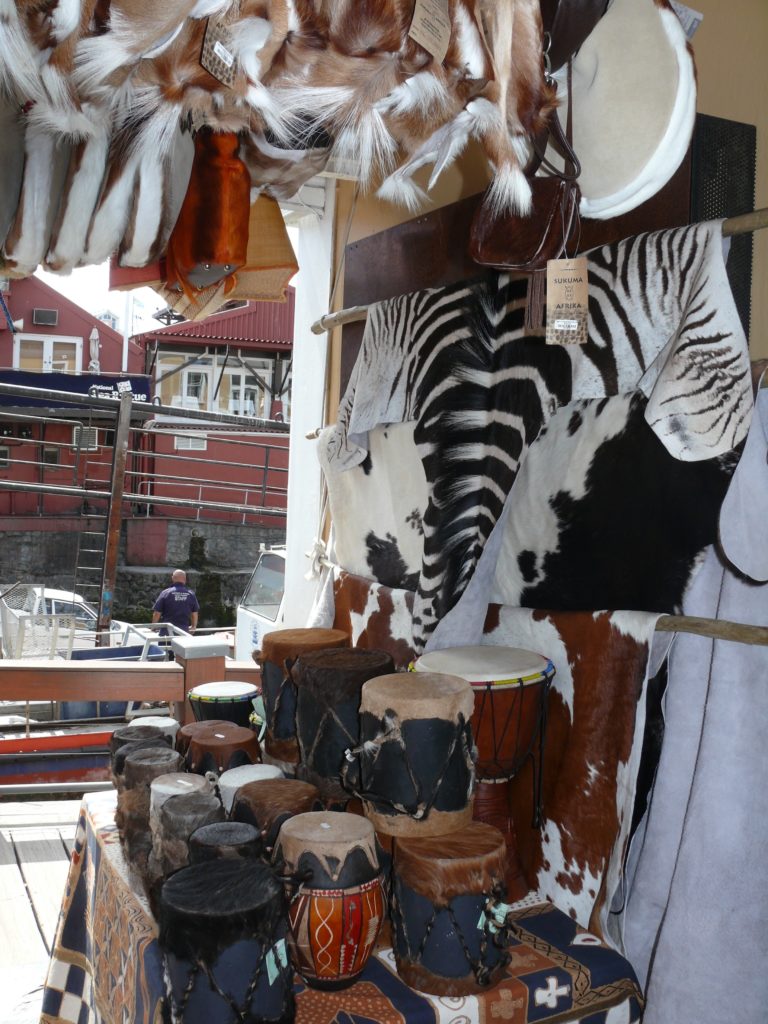
Local crafts
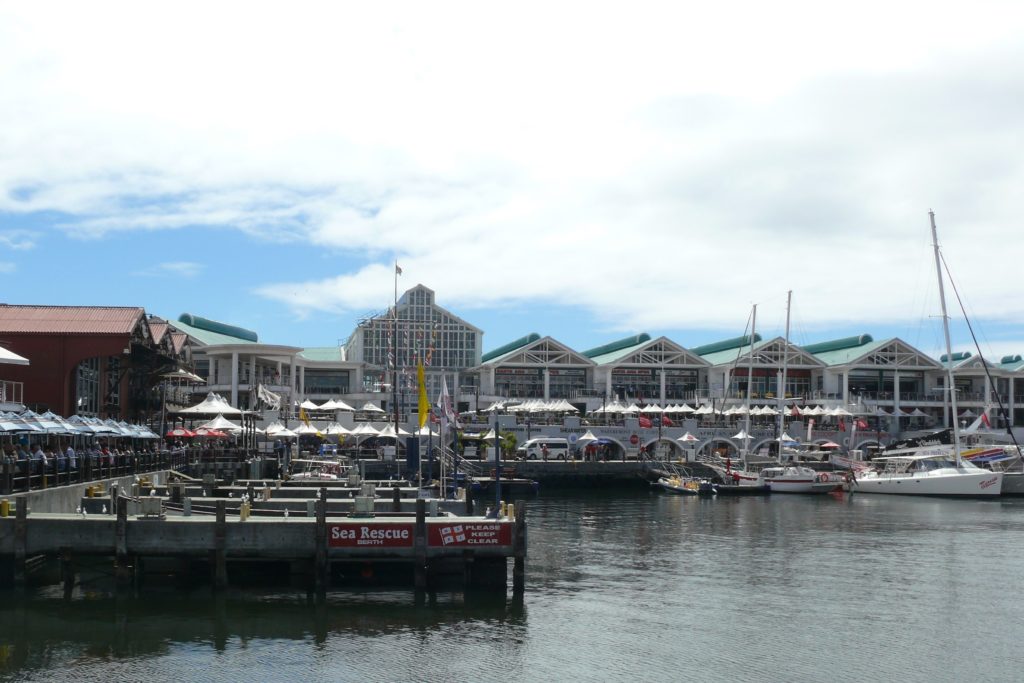
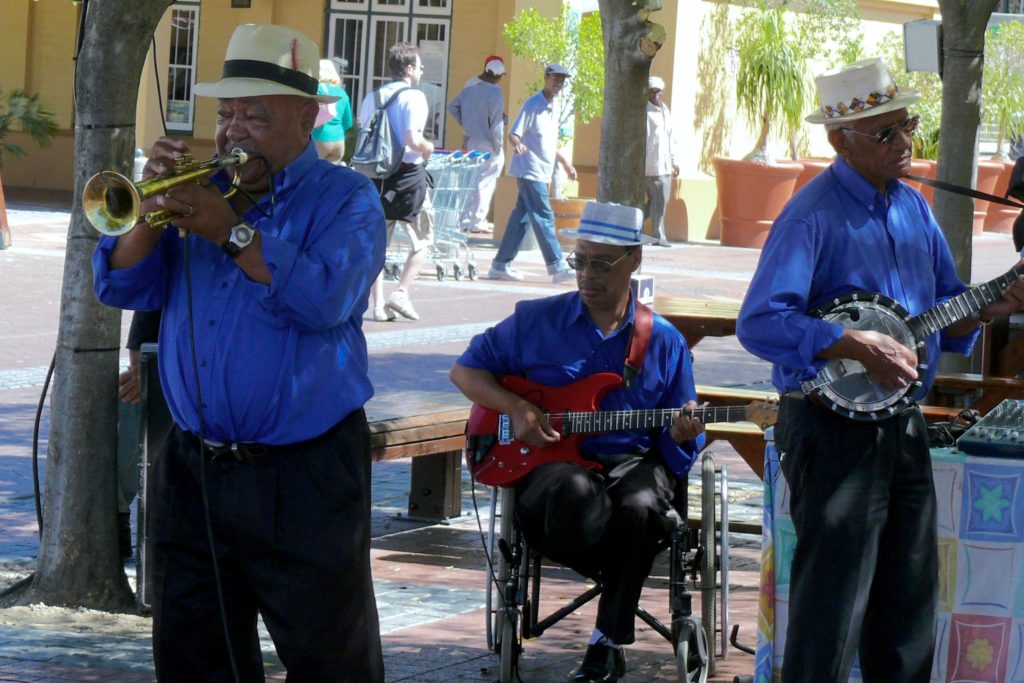
Live entertainment in the streets
We visited the Two Ocean Aquarium which is located in Victoria & Alfred Waterfront. The Aquarium was opened in November 1995.
The southern tip of the African continent is the meeting place of two mighty and bountiful oceans, the Indian and the Atlantic. The Two Oceans Aquarium is ideally positioned to showcase the incredible diversity of marine life found in these two oceans.
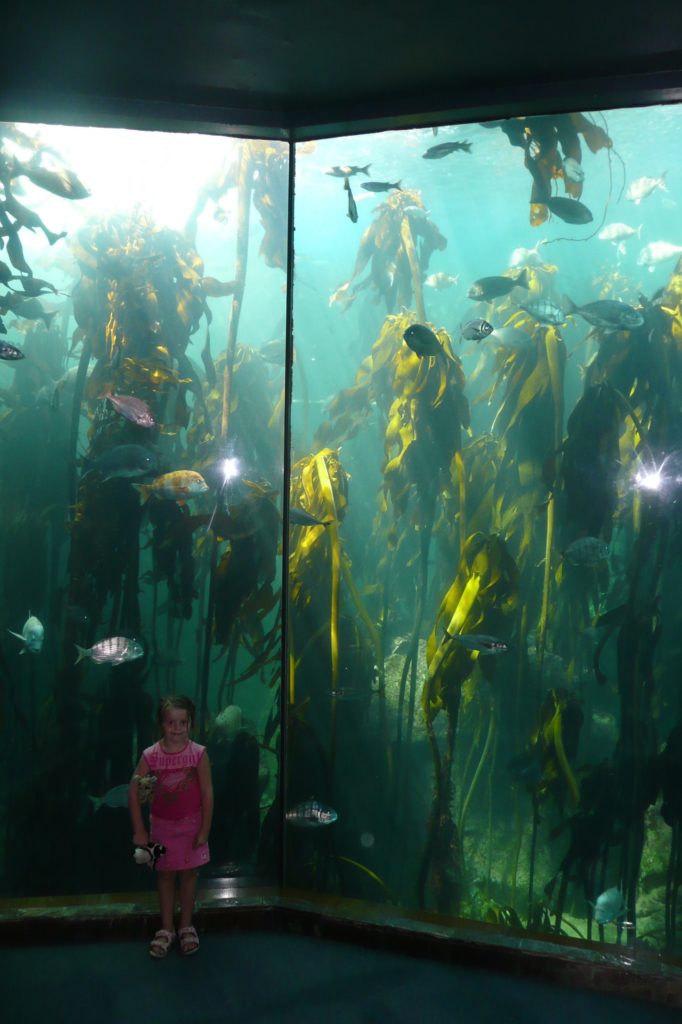
Kelp Forest Exhibit is an underwater forest that provide a source of food and shelter to a variety of species including fish, crayfish, sea cucumbers, limpets and filter feeders.
It holds about 800,000 litres of seawater
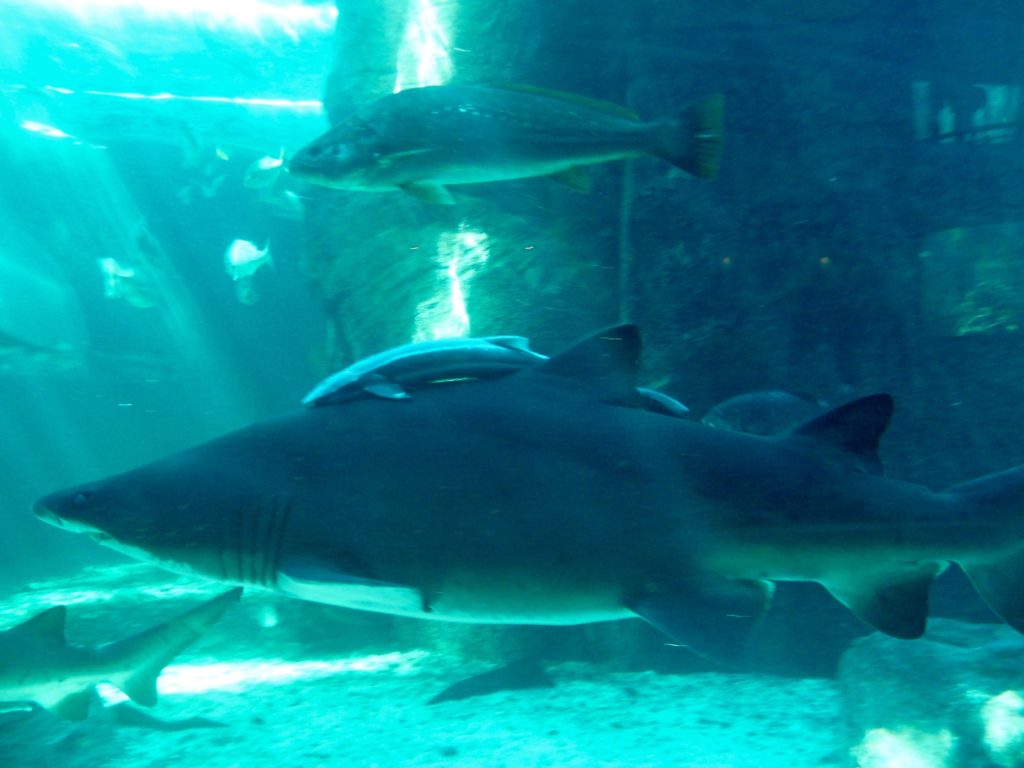
Predators Exhibit – that holds more then 2 million liters of sea water, is home to a variety of predatory, cool water species- from large carnivores like ragged-tooth sharks and giant kob, to mid-size crustacean hunters such as spotted grunters.
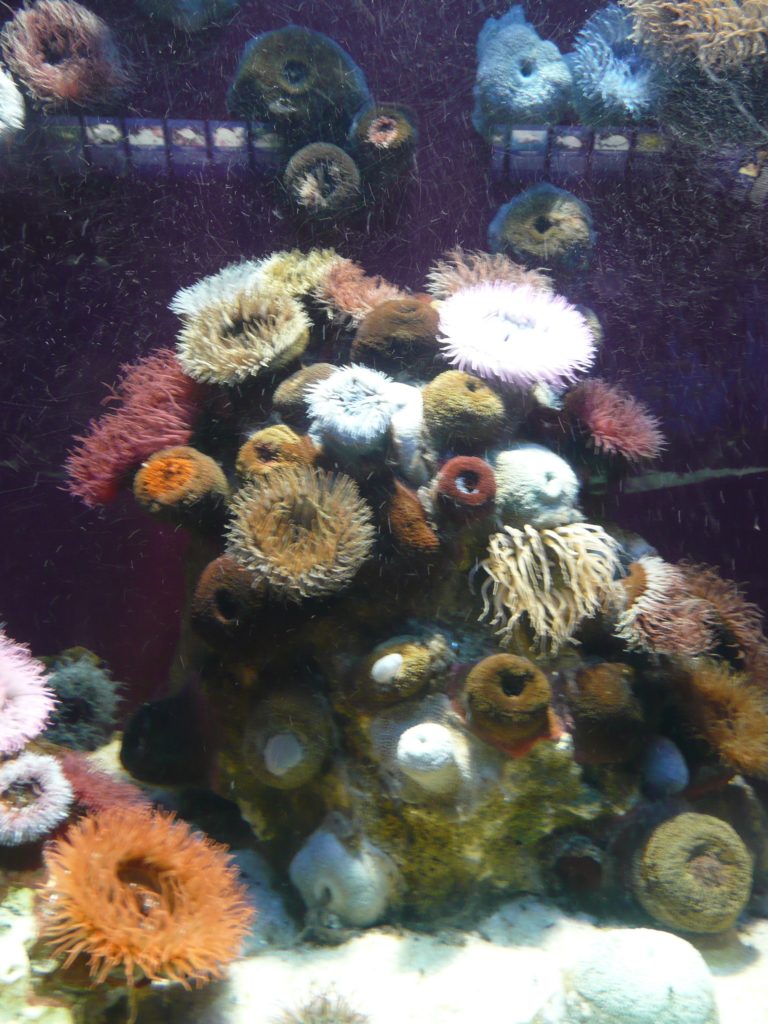
Coral Reef 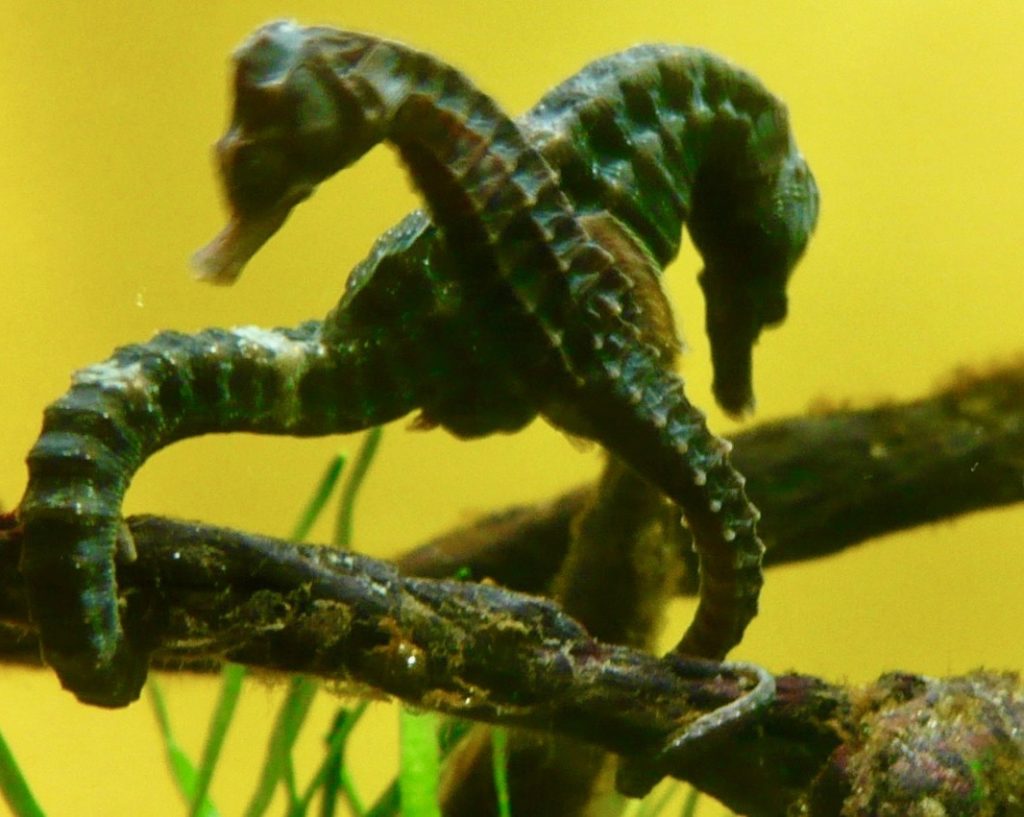
Knysna Seahorse – Indian Ocean 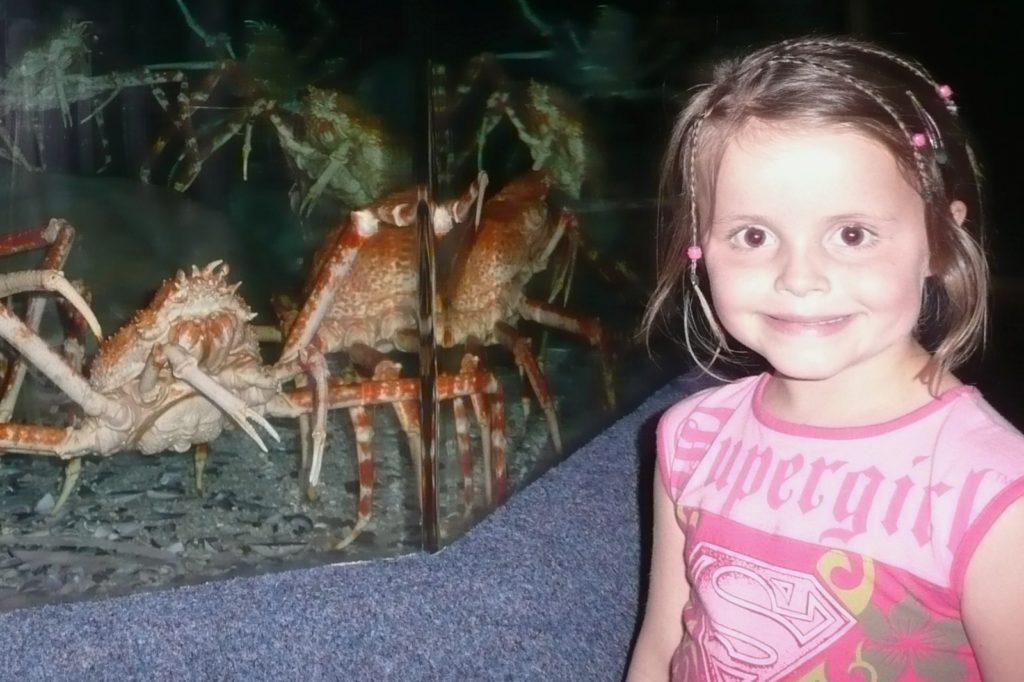
The giant spider crab – Atlantic Ocean 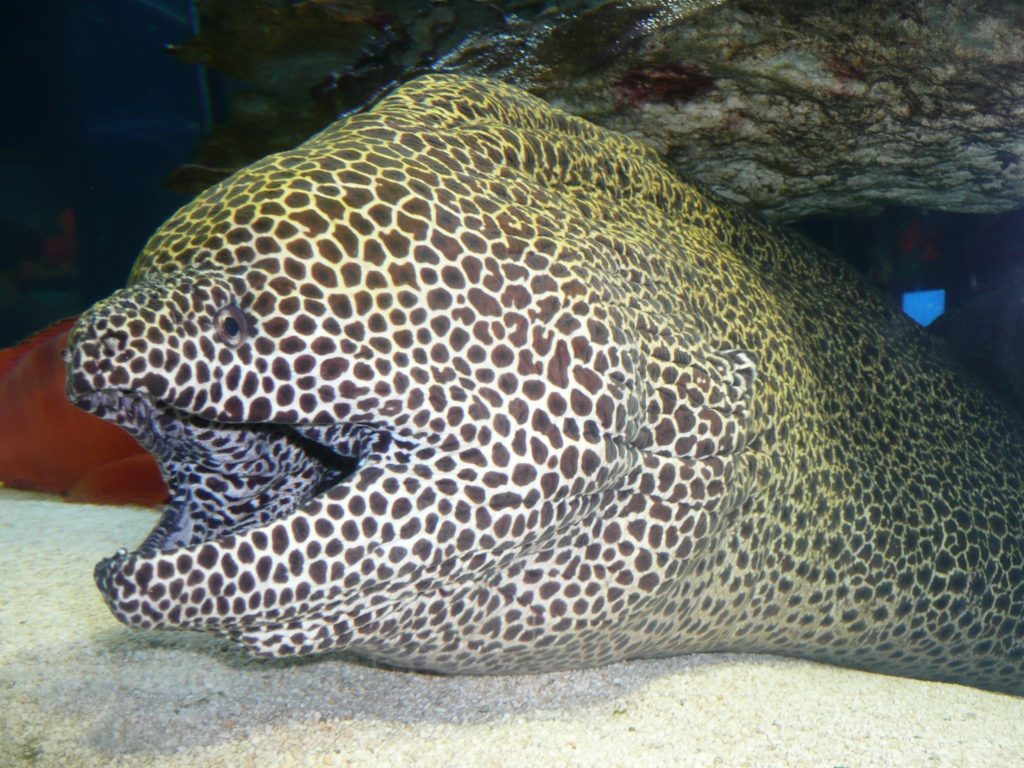
Honeycomb moray eel – from the Indian Ocean
with different species found in the Indian Ocean and the Atlantic Ocean
TABLE MOUNTAIN
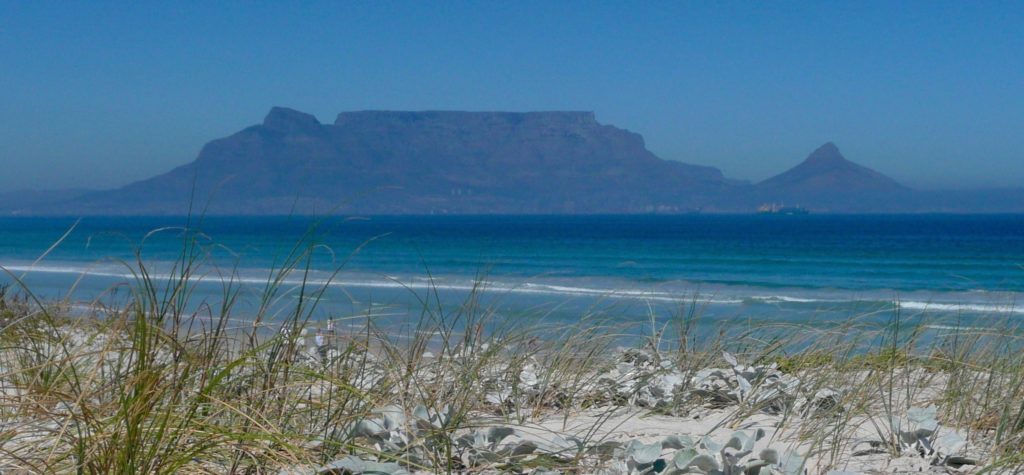
Rising 1,087 meters south of the city center, flat-topped Table Mountain is the most photographed landmark in South Africa. Created from massive beds of sandstone and slate, the mountain forms the northern end of the Cape Peninsula and lies within Table Mountain National Park. The park protects an astounding diversity of plants and more than 1,470 flower species-the planet’s richest floral kingdom-as well as animals such as cute snub-nosed dassies (rock hyraxes), caracals, and baboons. Within the park, Devil’s Peak flanks the mountain on the east, and Lion’s Head on the west, while the crags known as the Twelve Apostles loom over the beach resorts on the Atlantic coast.
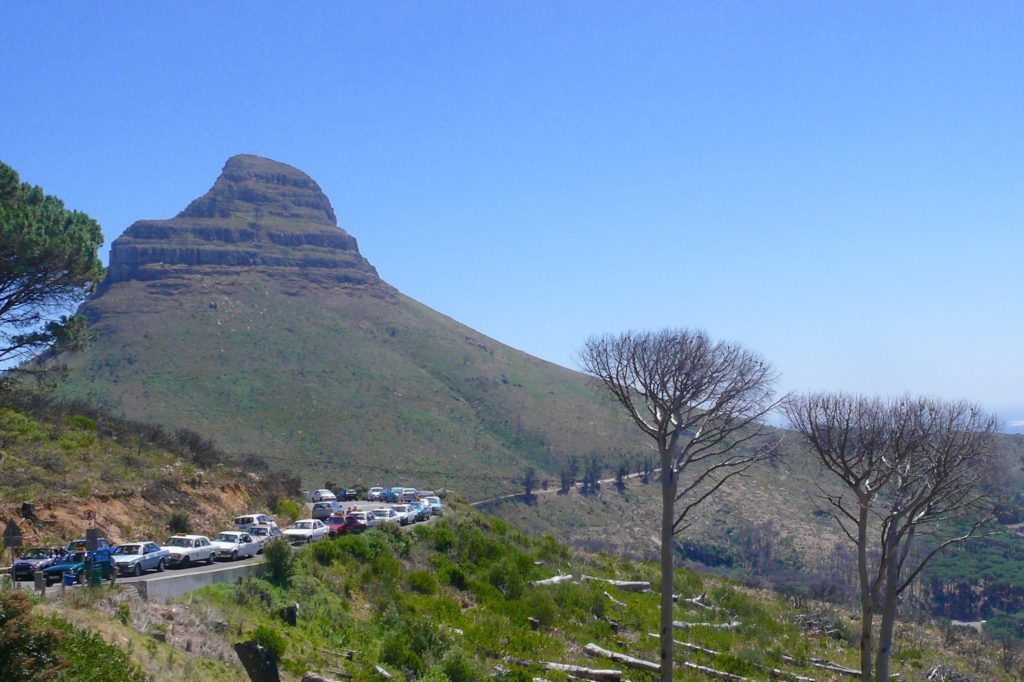
A layer of clouds, called the “tablecloth” frequently cloaks the mountain’s peak, but when the clouds clear, visitors can enjoy spectacular views of Cape Town and the entire Cape Peninsula from the summit.
The cableway climbs to the summit, covering the distance of 1,244 meters in seven minutes. The cableway runs daily-except in high winds, so it’s a good idea to check the website or call for current conditions before heading out.
To avoid long lines – try booking tickets online.
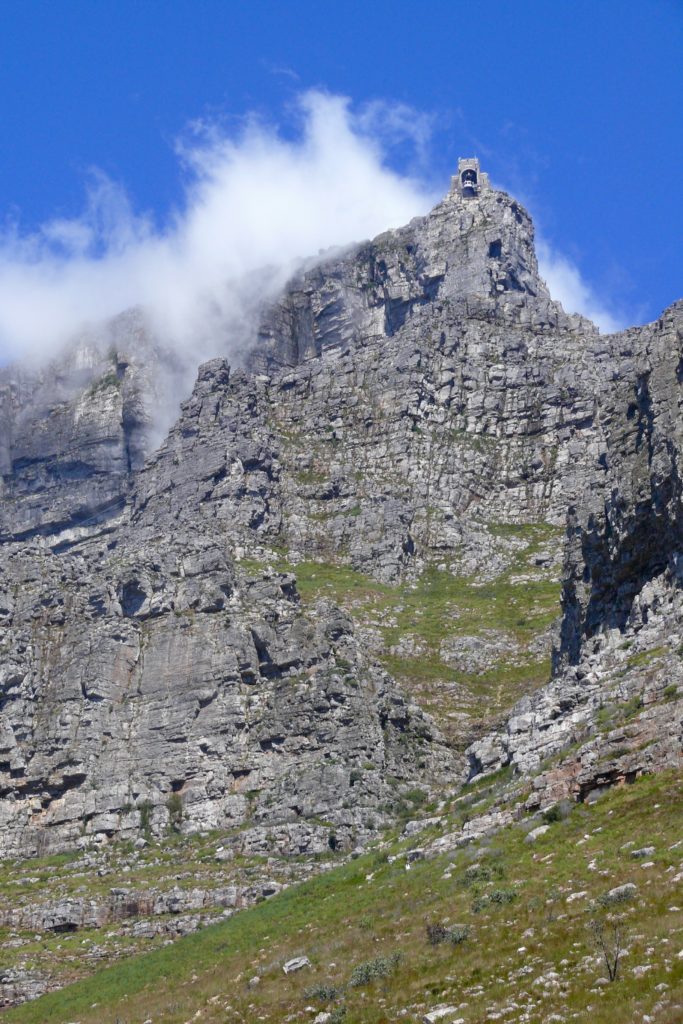
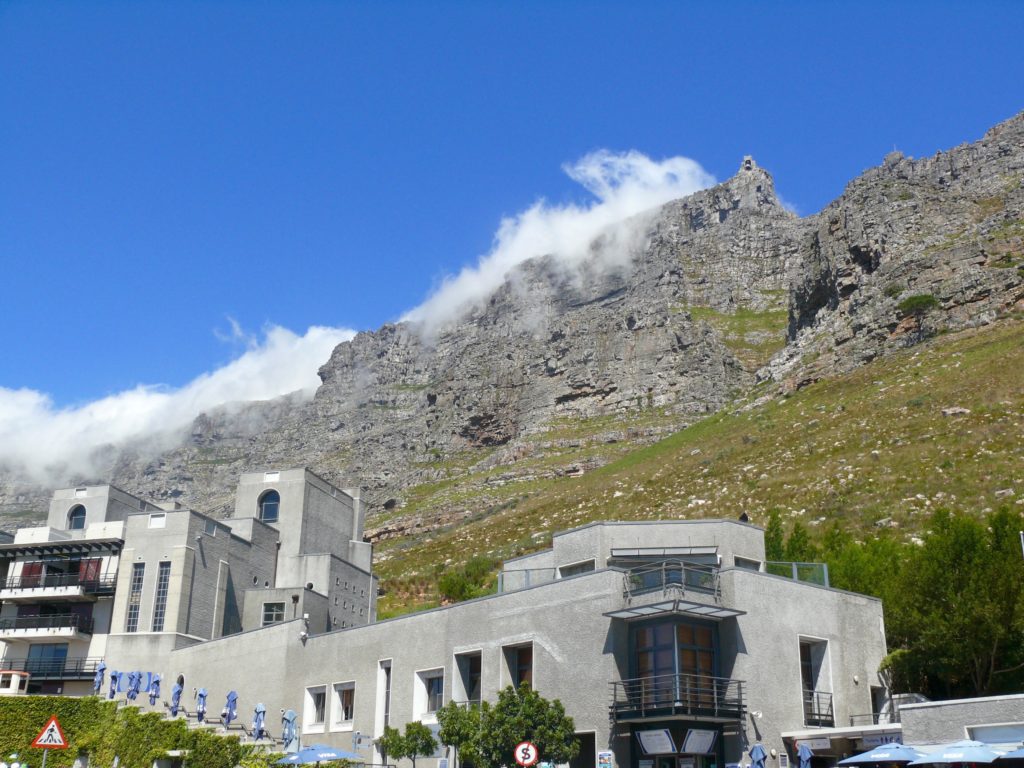
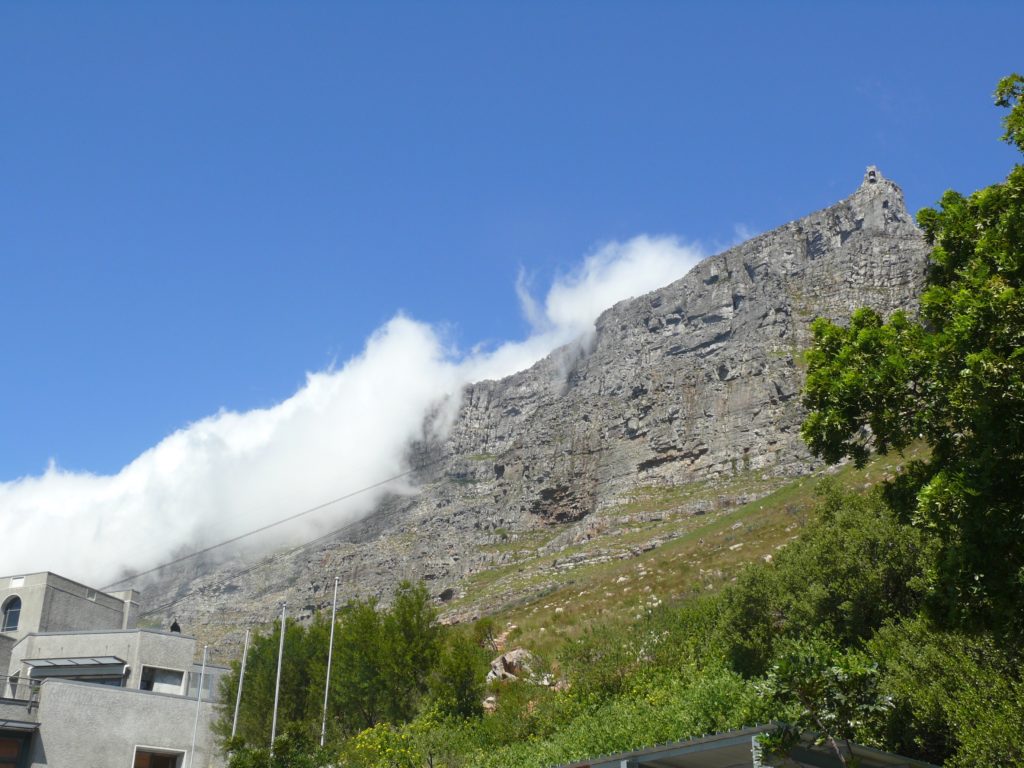
“The tablecloth” is approaching
I have tried to make it to the top a couple of times when staying in Cape Town, but both times the cableway was closed due to high winds.
I am going to Cape Town this December 2019, staying over New Years Eve, then I have a new opportunity to take this tour.
BLOUBERGSTRAND
The last five days in South Africa – we stayed at a hotel at Bloubergstrand.
Bloubergstrand is a suburb of Cape Town 15 km north of the city centre
The name Bloubergstrand means “blue mountain beach” in Afrikaans, and is derived from Blaauwberg (231 m), a nearby hill.
Bloubergstrand beach is a long white sand beach on the Atlantic Ocean and is one of the world’s top kitesurfing destinations. It is also a popular location for a classic view of Table Mountain across the bay.
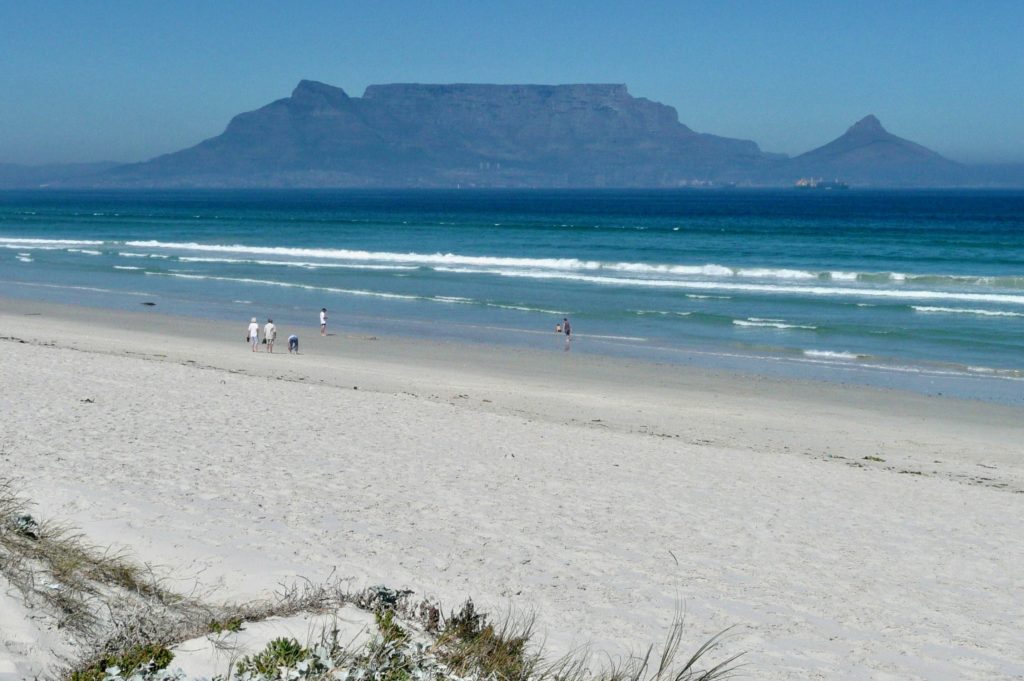
Classic view of Table Mountain from the beach
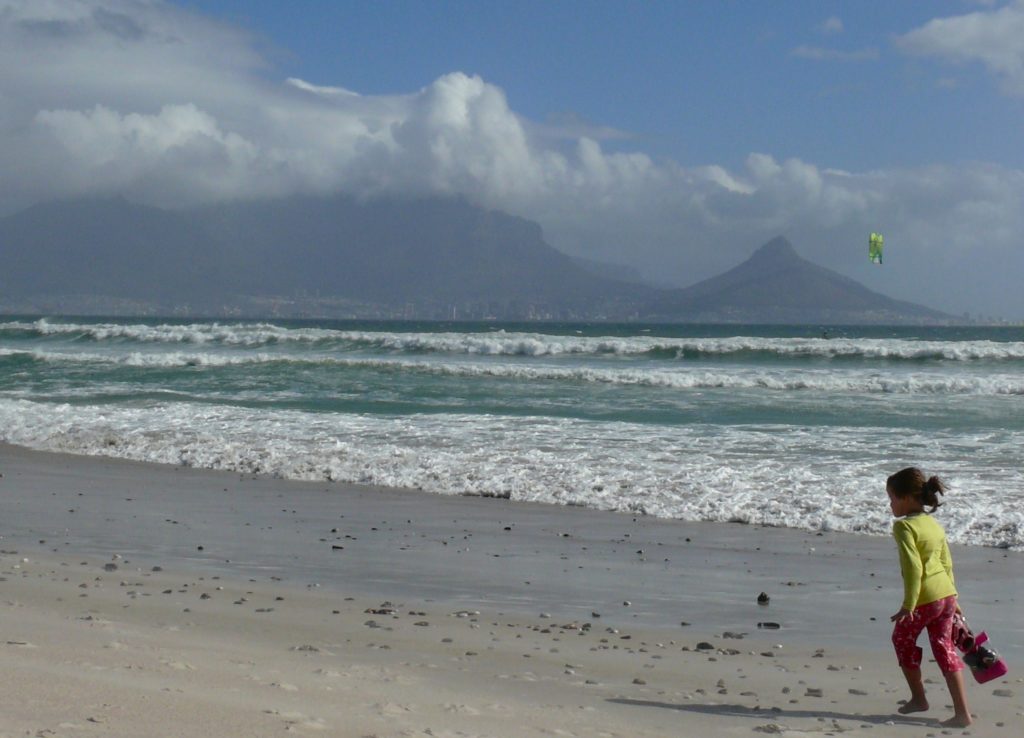
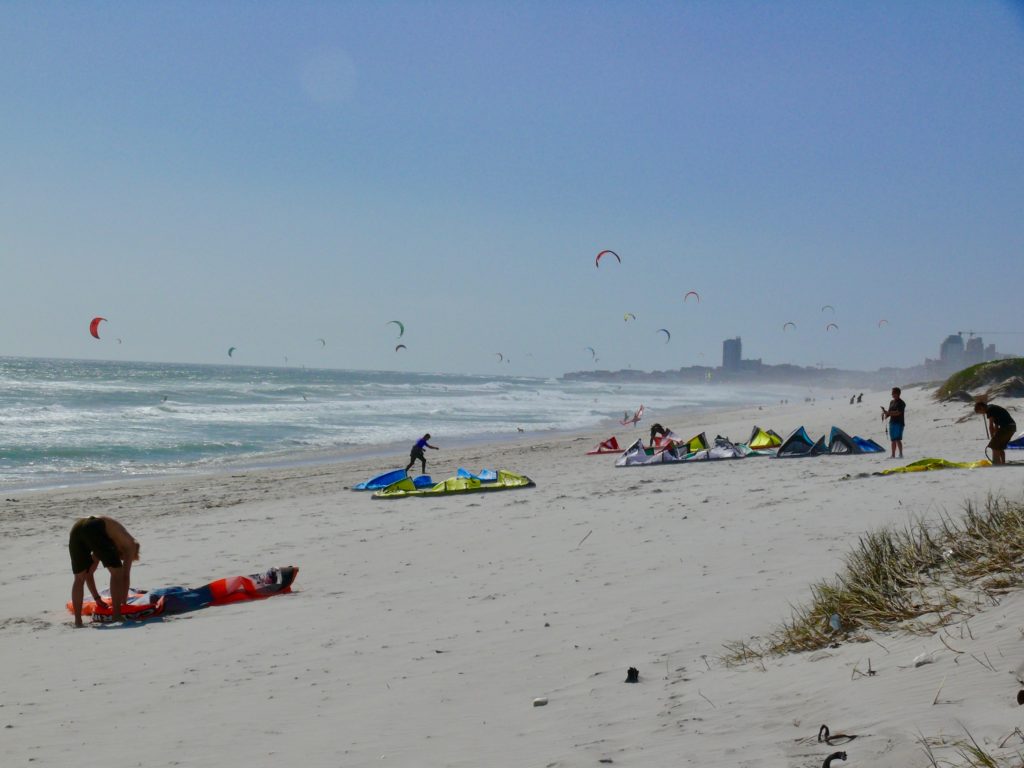
Popular beach for kitesurfing
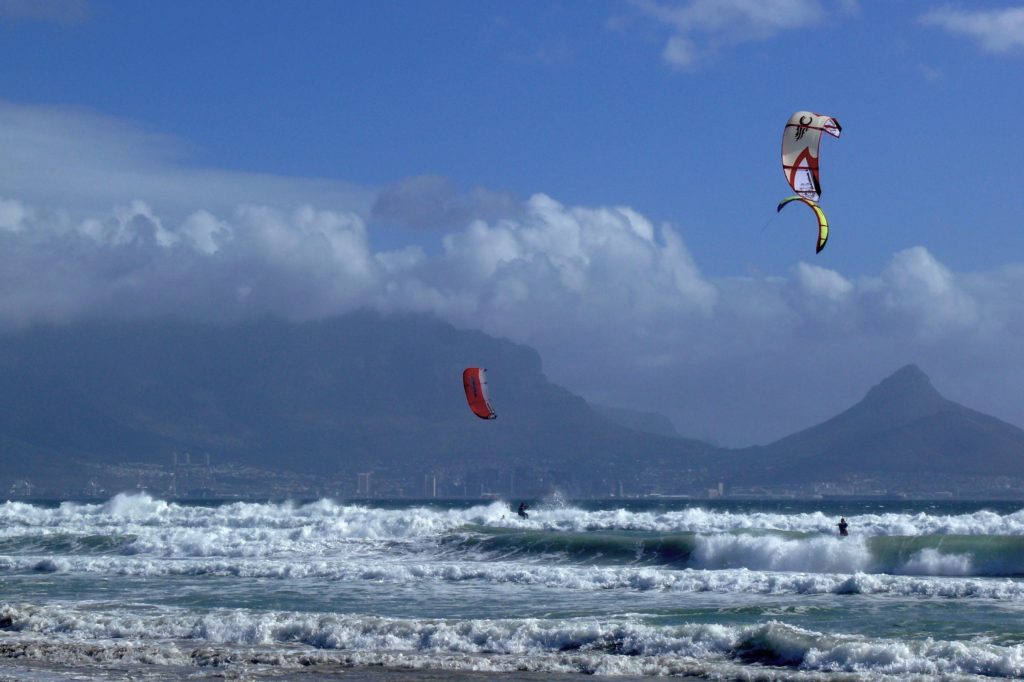
ACCOMMODATION
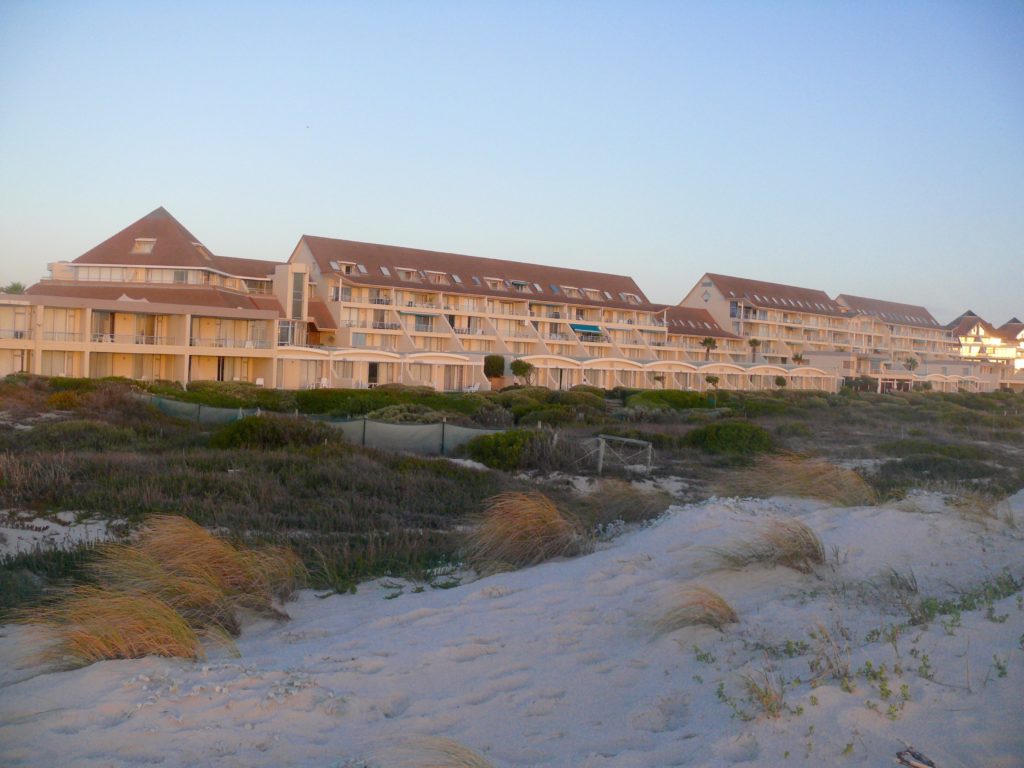
Right on Bloubergstrand Beach is the Dolphin Beach Hotel – where we stayed the last days of our stay in Cape Town area- and our 2 and a half month travel in South Afica.
It is a beautiful beachfront hotel – that offers 40 one and two bedroom apartments including en-suite baths and showers, a lounge and dining area, spacious patio and a fully equipped kitchen.
Magnificent view of Table Mountain on the opposite side of the bay!
There is also a swimming pool and a good onsite restaurant, Blowfish. Blowfish specialises in providing guests with fresh seafood, sushi and steaks, surrounded by contemporary décor and with an award-winning wine list to choose from.
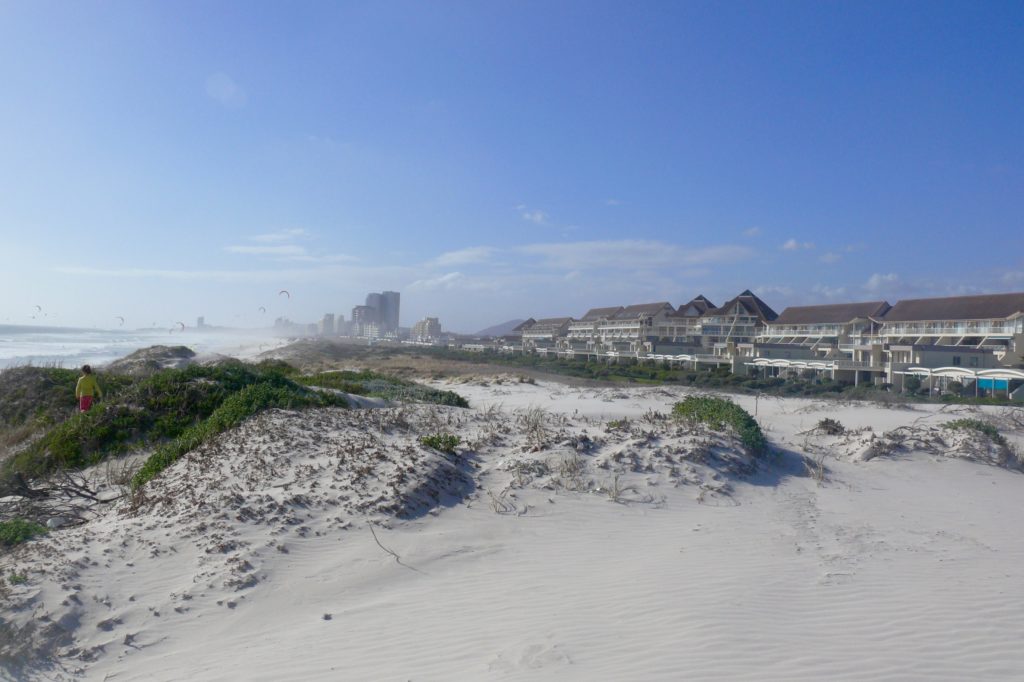
We are back in Cape Town – Dec2019/Jan 2010 – with updates!
